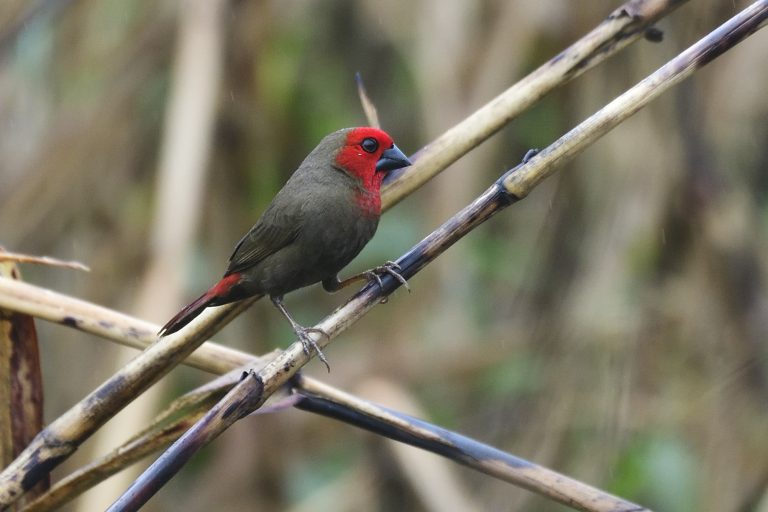
It was time for another tough Southern highlands trip. Selvine and I drove to Dar a few days before my friend Paul van Giensbergen arrived late on November 25. I arranged for pick up from the airport to take him to our hotel. Paul did a successful Usambara trip with me in January 2021 and he now wanted to do the challenging Southern Highlands of Tanzania trip. On this trip we basically follow the Eastern Arc Mountains from Morogoro (Uluguru Mountains) and south. It is a pretty demanding trip with a lot of tough hikes and camping up in the mountains + huge distances to cover in my trustworthy Land Rover, Lizzy. The trip is mainly in forests so the quality of the pictures are not that good.
Day 1,Friday, November 26 – Dar es Salaam via Morogoro to Tegetera Camp Uluguru Mountains.
Paul and I set out early from Dar es Salaam. Traffic was easy and we made good progress to Chalinze where we picked up Abdul. We had a smooth ride to Morogoro and started our climb with my old trustworthy Landrover Lizzy up the Uluguru mountain. We stopped to buy vegetables at a local village halfway up the mountain and was soon at the place we normally park the car. Porters where waiting for us to carry our gear up the mountain. Paul and I left it to Abdul and he and I started the walk. I set off in a paste much faster than my body could handle and soon got totally exhausted. Paul has a lot more experience with long hikes than me and gave me a few tips I would benefit from on the rest of the hikes. Abdul and the porters overtook us quickly and when Paul and I arrived in camp, the porters were already setting up camp. Camp were set up and after a brief rest, we went out birding. It is quite tough birding up there so most of the birds were only heard: Livingstone´s Turaco, White-chested Alethe, Barred Long-tailed Cuckoo, Bar-tailed Trogon, Orange Ground Thrush, Evergreen Forest Warbler, Moustached Tinkerbird, Green Barbet, Uluguru Bushshrike, Silvery-cheeked Hornbill, Common Square-tailed Drongo, Shelley´s Greenbul,Sharpe´s Akalat, Little Greenbul, Loveridge´s Sunbird, Scaly-throated Honeyguide, Usambara Eagle-Owl (First time I have heard it there) and African Wood Owl. We returned to camp and I cooked a meal for the boys. We turned in early in our tents.t
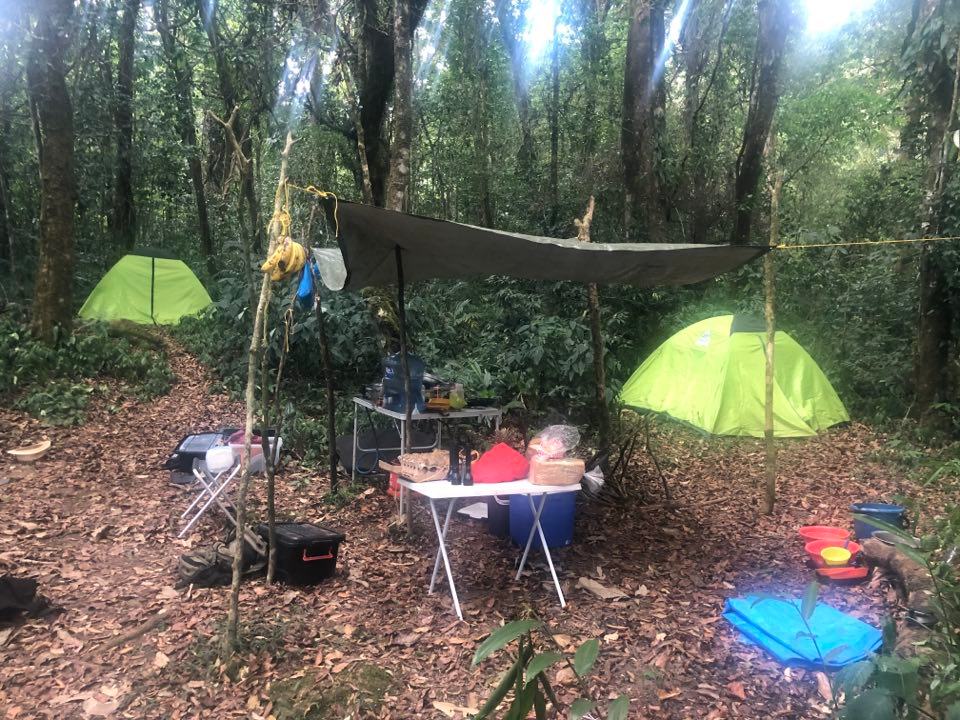
Our camp in Tegetera
Day 2, Saturday, November 27 – Tegetera Camp
We were woken up to the call of an African Broadbill that morning. We took a prebreakfast walk and recorded many of the same species. In addition: Eastern Bronze-naped Pigeon, African Paradise Flycatcher, Dark Batis, White-tailed Crested Flycatcher, Black-headed Oriole, Fülleborn´s Boubou, Chapin´s Apalis, Tambourine Dove, Olive Sunbird, Mountain Buzzard and Red-chested Cuckoo. Both Paul and I managed to get pictures (finally) of the Uluguru Bushshrike. Paul´s pictures was much better then mine. While I was making breakfast Paul sneaked off and got good pictures of the Loveridge´s Sunbird. After breakfast, we tried to get better pictures of our target birds, but we were not too successful. We added Grey Cuckooshrike, Yellow-throated Woodland Warbler, Red-capped Forest Warbler (First time I have seen it at Tegeteru) and Olive Woodpecker to our list the rest of that day.
Some pictures from day 2
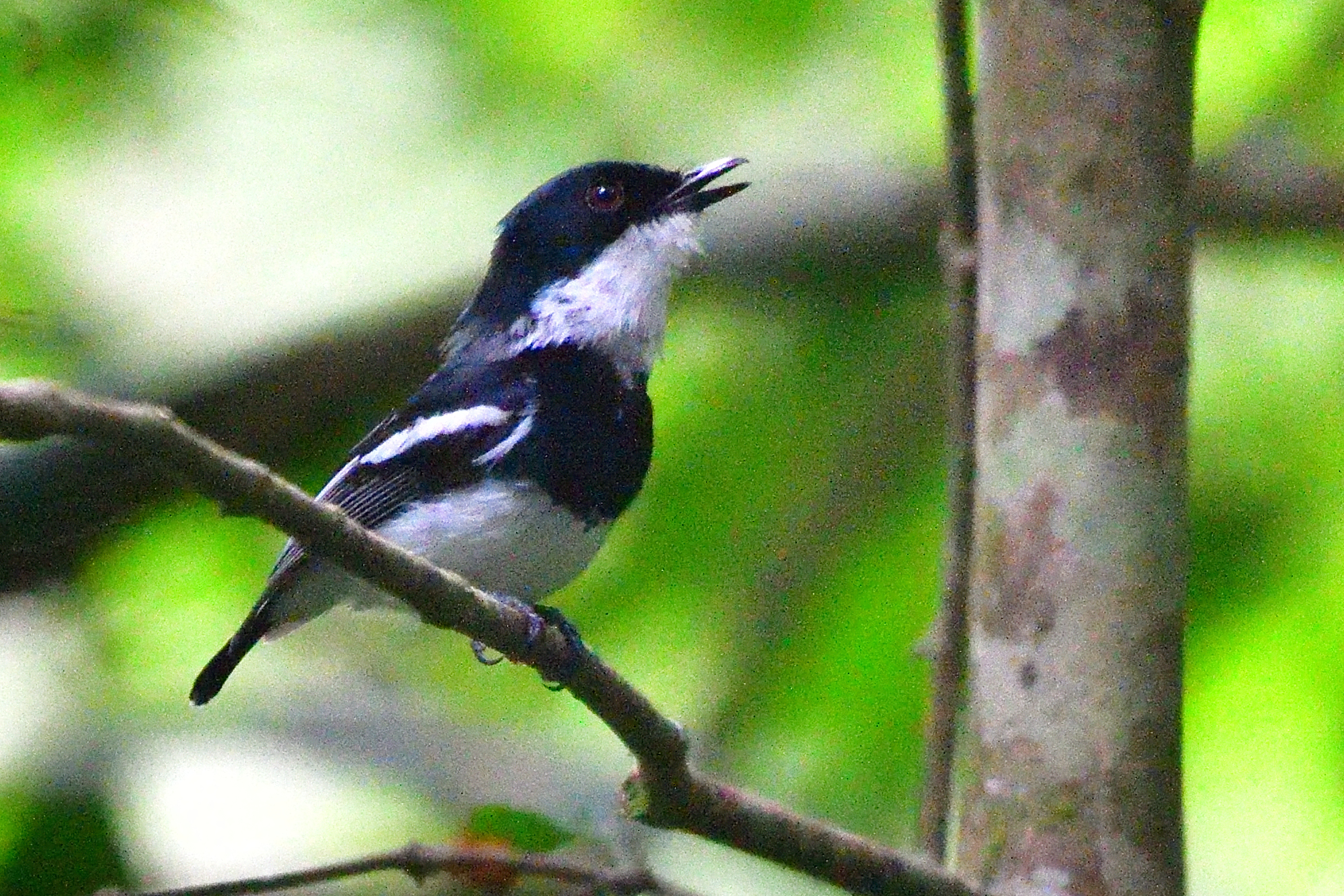
Dark Batis, Batis Crypta – Endemic to Eastern Arc Mountains
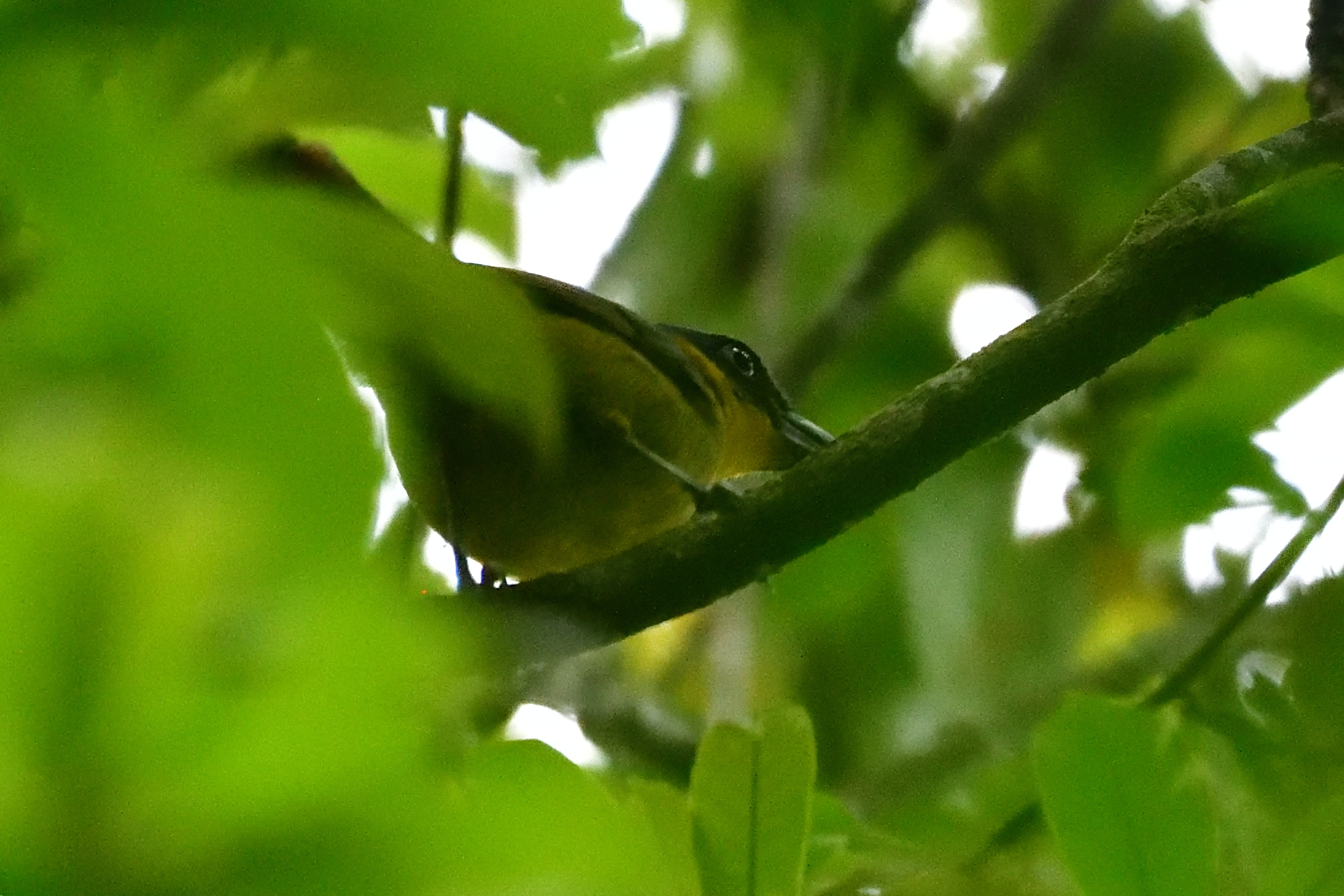
Uluguru Bushshrike, Malaconotus alius – Endemic to Uluguru Mountains, Tanzania
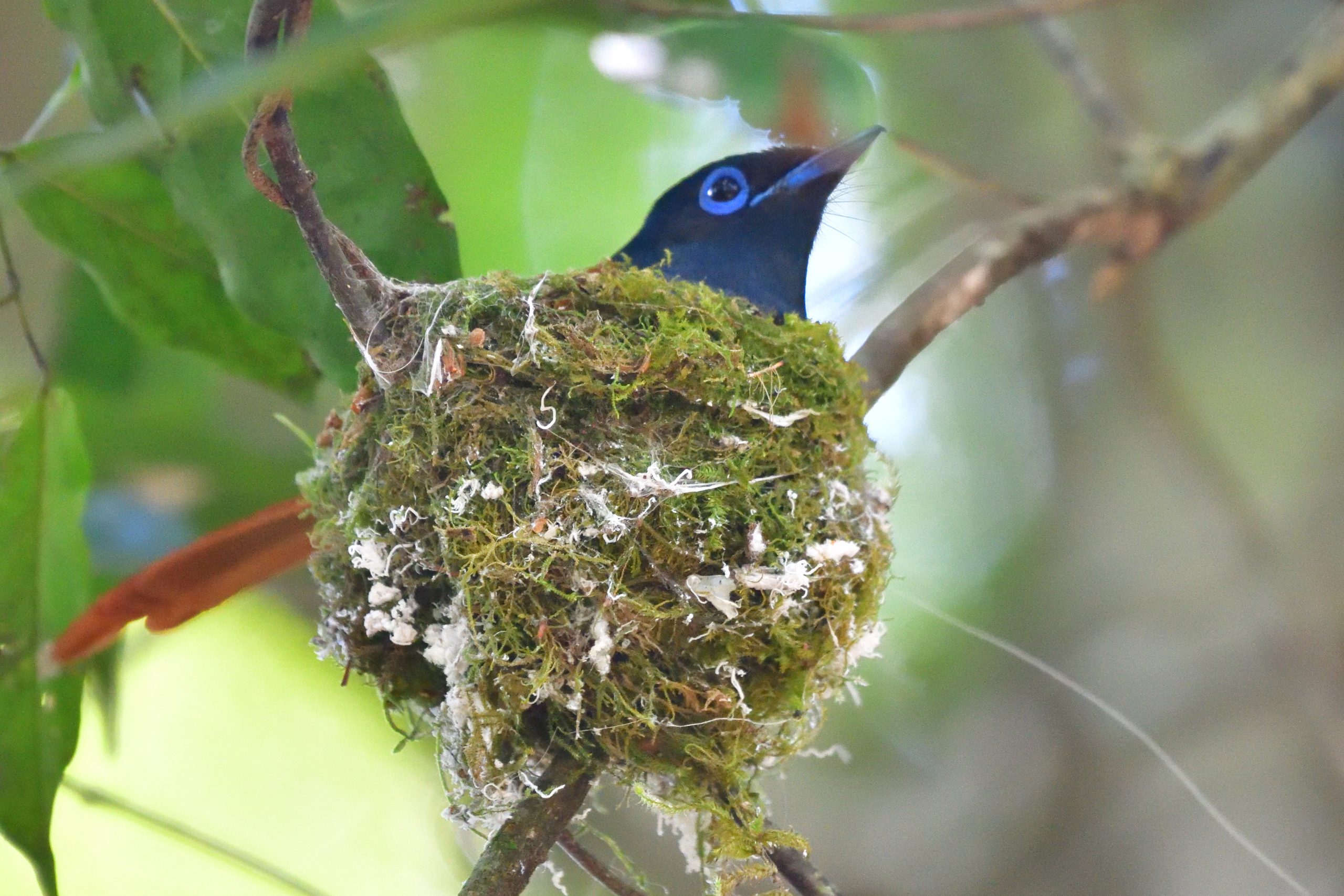
African Paradise Flycatcher, Terpsiphone viridis
Day 3, Sunday, November 28 – Tegetera Camp to Geiro
We did some early morning birding without finding anything new. Paul was happy with the pictures of the two main targets up there: Loveridge´s Sunbird and Uluguru Bushshrike so after breakfast we packed camp and walked down to the car. It was time to pay the porters, pack the car and then we were on our way to our next destination; Ukaguru Mountains. It is a long drive to the nearby town Geiro and we managed to find a nice guesthouse for the night.
Day 4, Monday, November 29 – Geiro – Ukagura Mountains – Bunduki Camp – Uluguru
We started early up the mountain and were at our normal spot just before 7AM. Abdul had met a ranger that came with us. Our main targets here were Rubeho Warbler and Rubeho Akalat. We had Red-faced Crimsonwing on the road where we parked. Other new birds for the trip recorded were Moreau´s Sunbird, Chapin´s Apalis, Slender-billed Starling , Yellow-throated Greenbul, Rubeho Warbler, White-starred Robin, Southern Citril, Klaas´s Cuckoo and Eurasian Blackcap. However no Rubeho Akalat a bird i have never dipped on there. I had stayed on the road to try to get a picture of the ever so elusive Rubeho Warbler without success. The guys came back from the forest. I offered to go down in the forest with them again for the exact spot, but the ranger said he had another spot. I let the majority decide and drove them there while stopping at several lightly spot, but still no Rubeho Akalat. We managed to record Striped Pipit, Bertram´s Weaver, Red-backed Mannikin, White-eyed Slaty Flycatcher and Red-rumped Swallow before I decided that time was up if we were to reach Bunduki Camp before dark. The drive to the turn off to Bunduki from Geiro through Morogoro went smooth. The road from the main road is not much to brag about. We picked up Cinnamon-breasted Bunting, Jacobin Cuckoo and Mocking Cliff Chat on the way and reached camp just in time to set up camp before nightfall. George the resident guide had purchased a huge chicken for us so my cooking duties were required again.
Some pictures from day 4
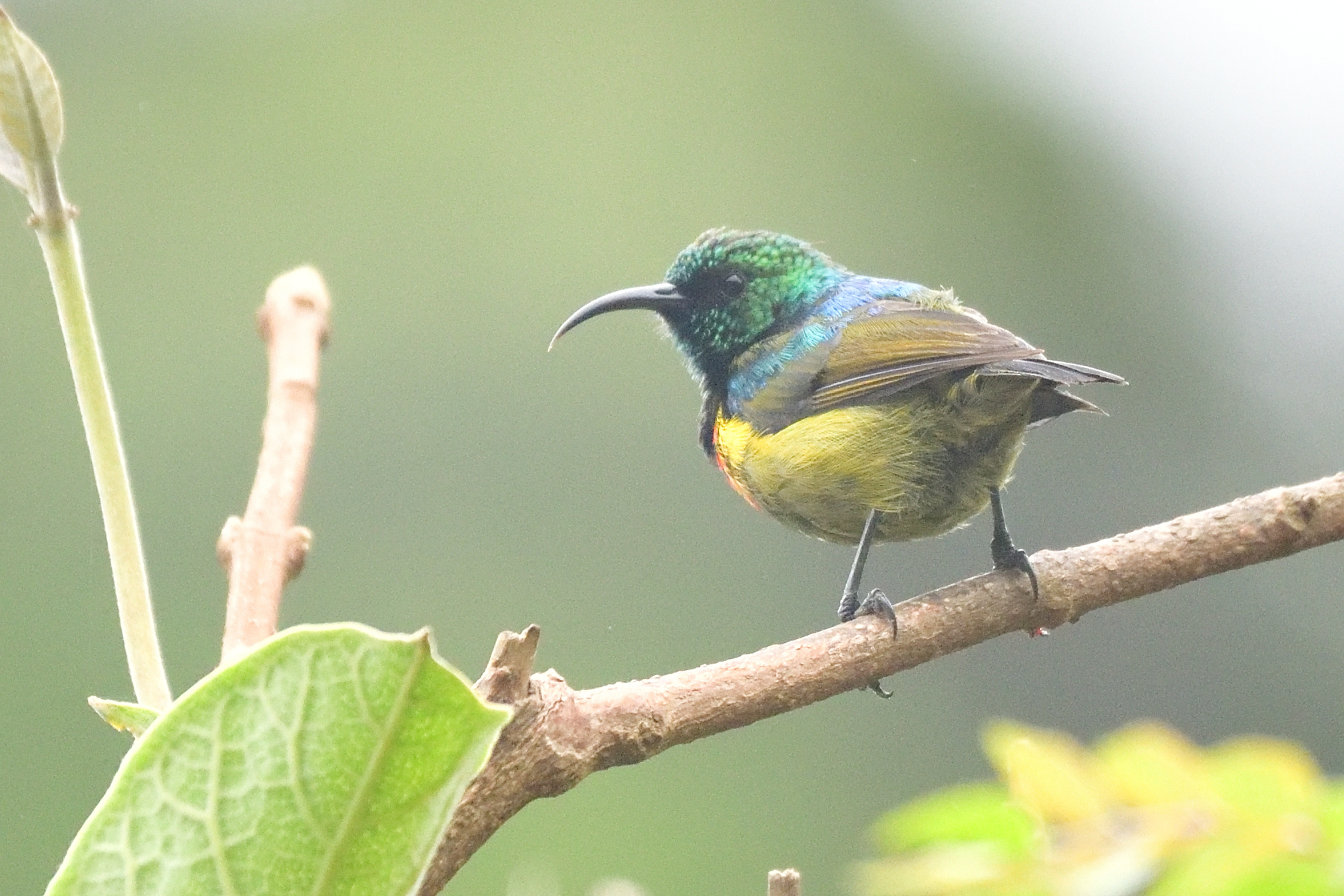
Moreau´s Sunbird, Cinnyris moreaui – Endemic to Eastern Arc Mountains of Tanzania
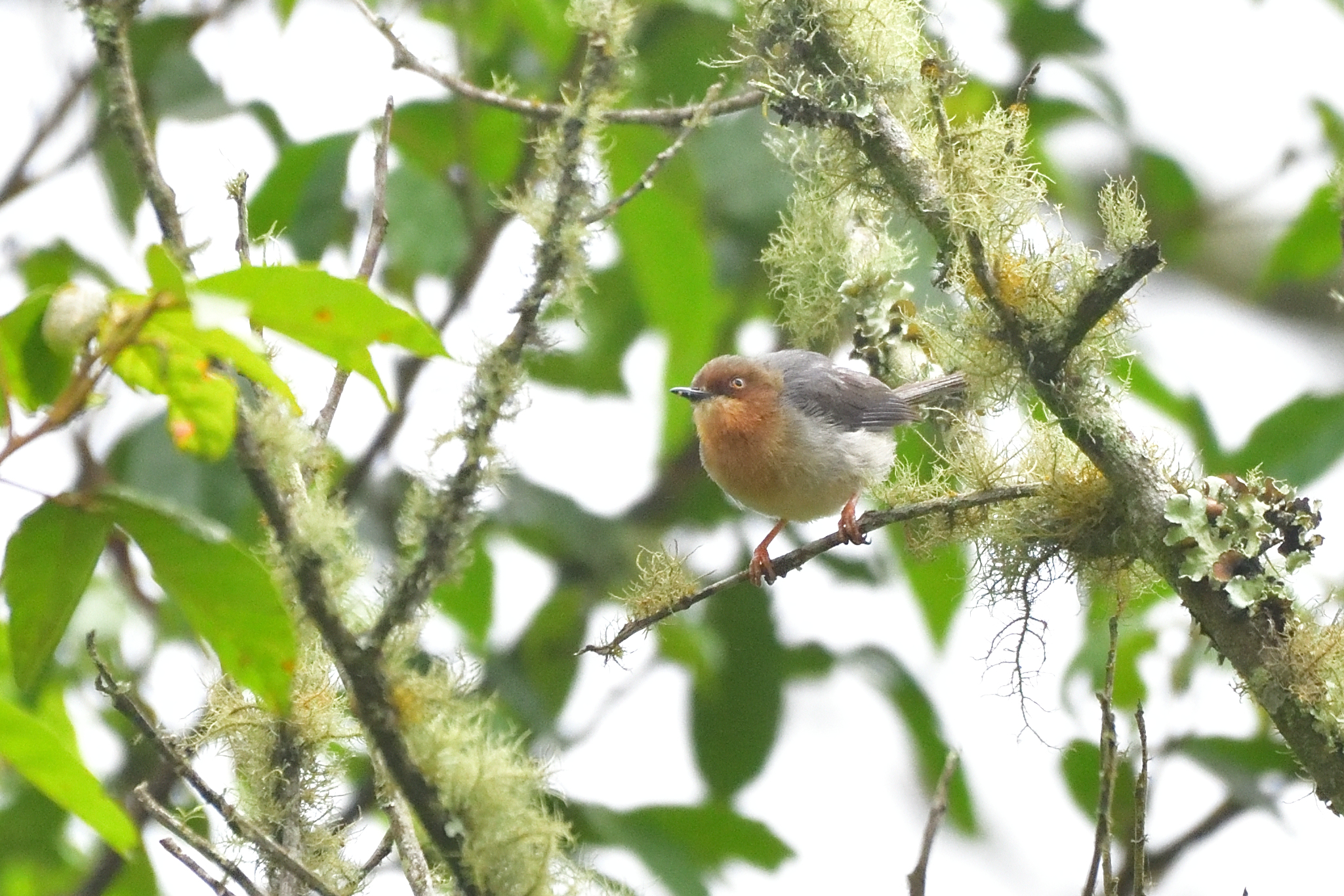
Chapin´s Apalis, Apalis chapini – Endemic to Montane Forests in S Tanzania, Malawi and E Zambia
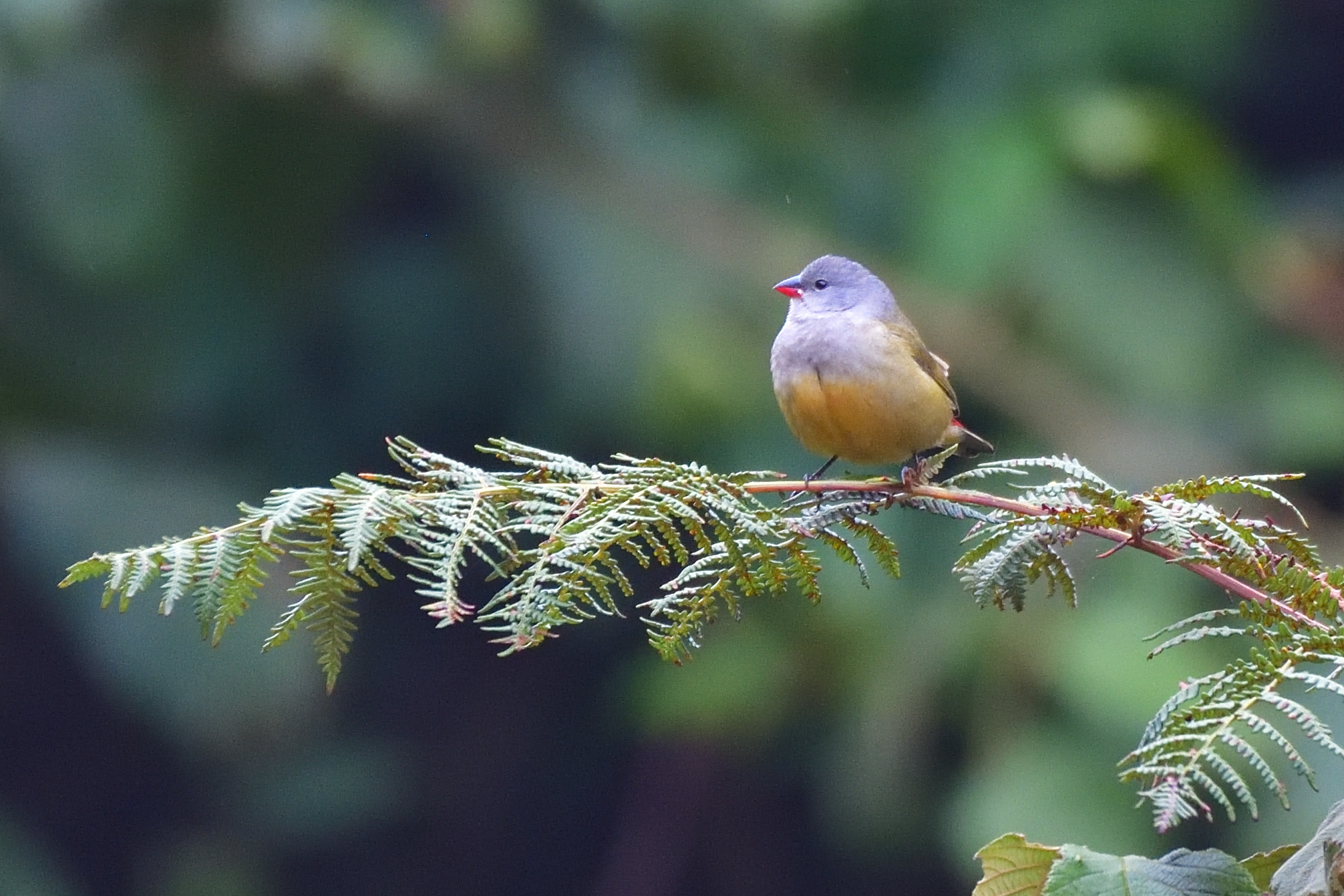
Yellow-bellied Waxbill, Coccopygia quartinia
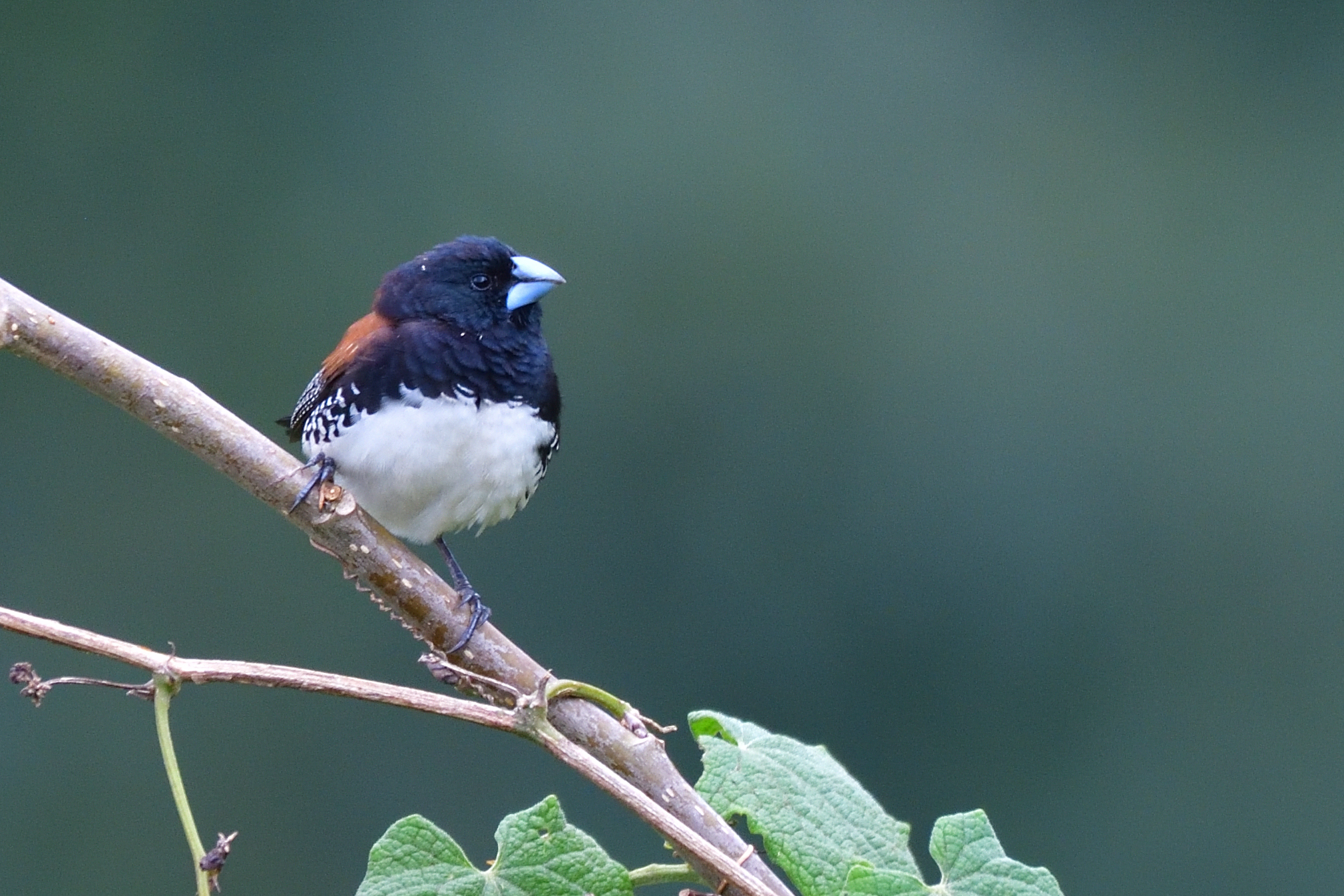
Red-backed Mannikin, Lonchura nigriceps
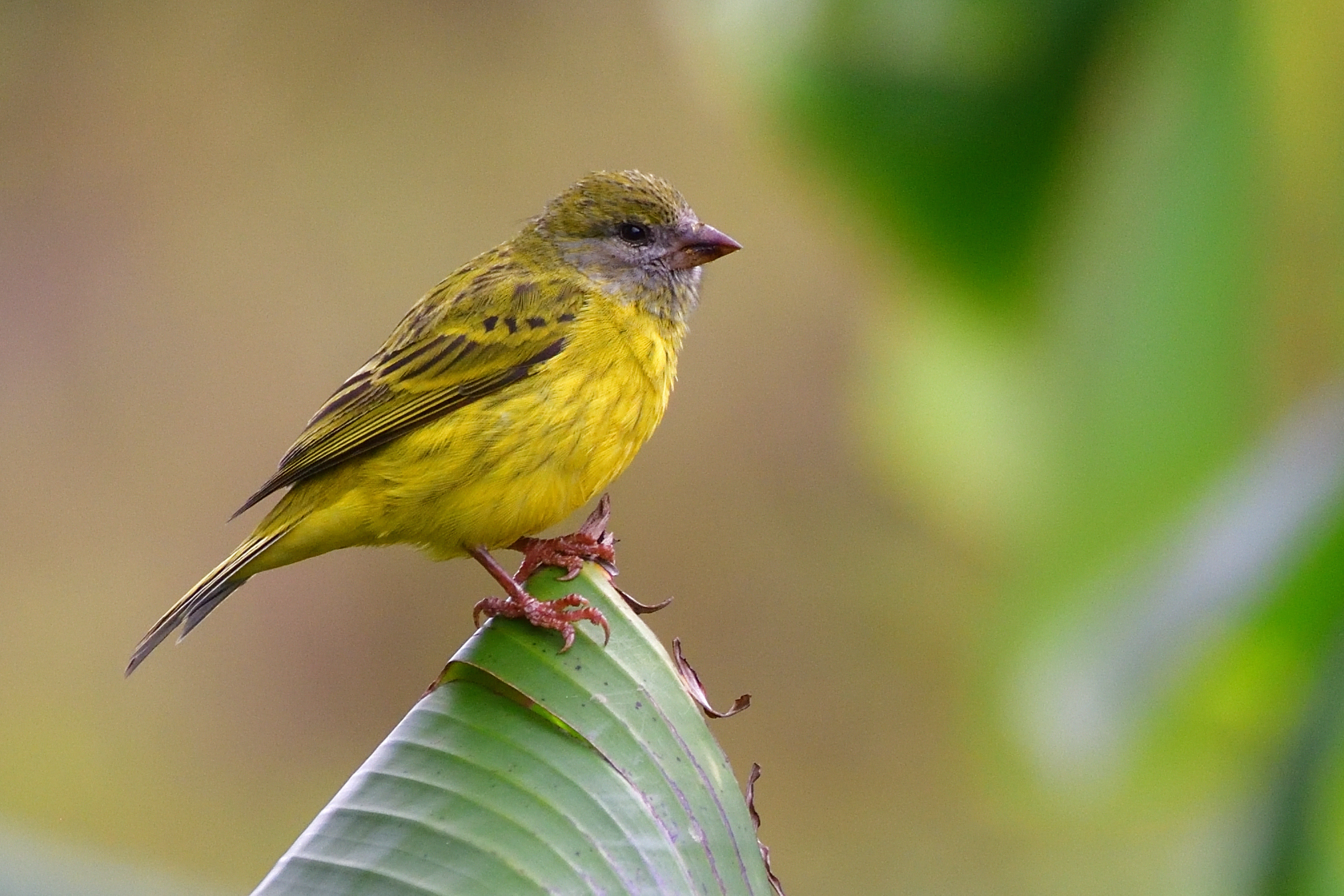
Southern Citril, Crithagra hyposticta – Endemic to SE Africa
Day 5, Tuesday, November 30 – Bunduki Camp – Tan-Swiss, Mikumi
We were going to climb up to the forest to look for a few key species that morning. On my last visit I remembered there was sort of a road going up to the nearest village. I decided to give my Landy a try to get up as far as we could. It went well for a while, but after we took off from the main road the track got narrower and narrower to a point only 100 meter from my turning I could not go further and both my right wheels were hanging almost out side a pretty bad drop. I ordered Paul and Abdul to continue and I got help from 9 local village men to help me. We secured the car with tow ropes both in front and back in order for the car not to slide into the abyss. Then the locals expanded the road and we used the high lift jack to inch the car back on to the road. It took some time, but quite an adventure. I then drove to the turning point, turned the car and started driving down. The locals walked in front of me and expanded the road as I drove. When I was back where the road widened and I was safe all 9 locals got rewarded with Tsh 10.000 (USD 4.3) which was a fortune for them. I drove back to and packed up the entire camp. Then I noticed a strange Cuckoo which turned out to be a Lesser Cuckoo (Lifer). I saw several of them. I then took my chair and sat by the river and observed both Mountain and Grey Wagtail, Southern Yellow White-eye and Red-chested Cuckoo. I also had a pair of African Black Duck flying upstream. Soon the boys were back. They had gotten Uluguru Greenbul, Winifred´s Warbler, the Uluguru race of the Bar-throated Apalis, but had dipped on the Olive-flanked Ground Robin. Abdul and I had other places for that bird so I was not too worried. They had also seen several Lesser Cuckoos. The camp was packed so we just had some breakfast loaded up the car and was on our way. On the way out we even saw one more Lesser Cuckoo. They must have just arrived? We were soon on the main road, but got in some serious heavy rain when we drove through Mikumi National Park. My windshield viper fell off so we had to go very slow. When we reached Tan-Swiss the rain had abated a little. On the camp spot they had a place for tents under a roof so we pitched the tents there. The facilities at the camp site are very good and we could all finally have a warm shower and charge all our gear. We had a nice meal at the restaurant that night and went to bed early.
Some pictures from Day 5
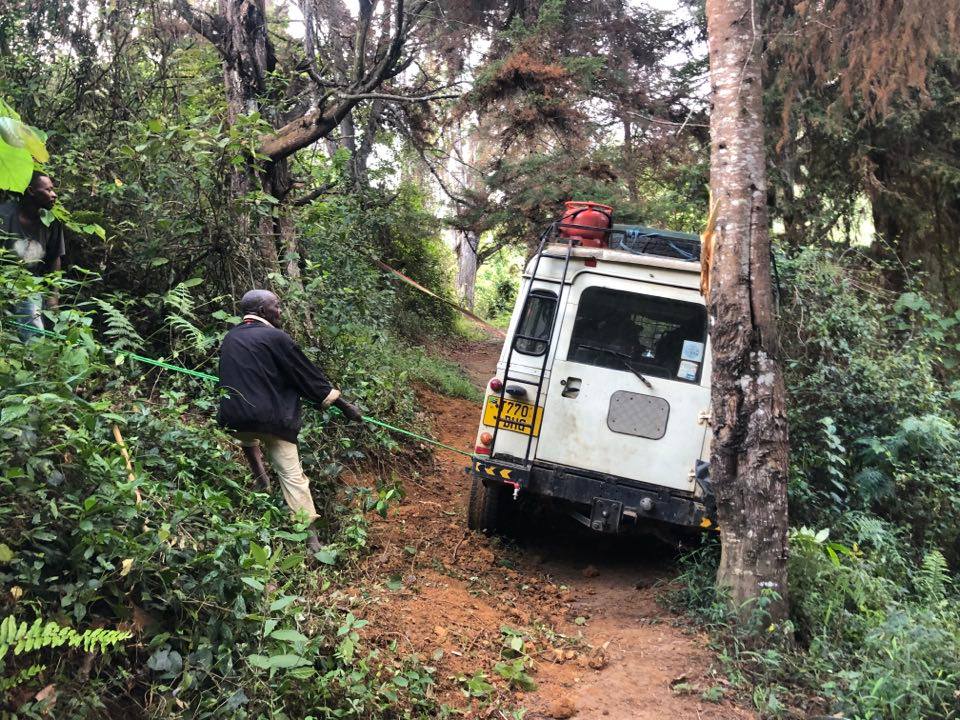
Securing Lizzy from the drop
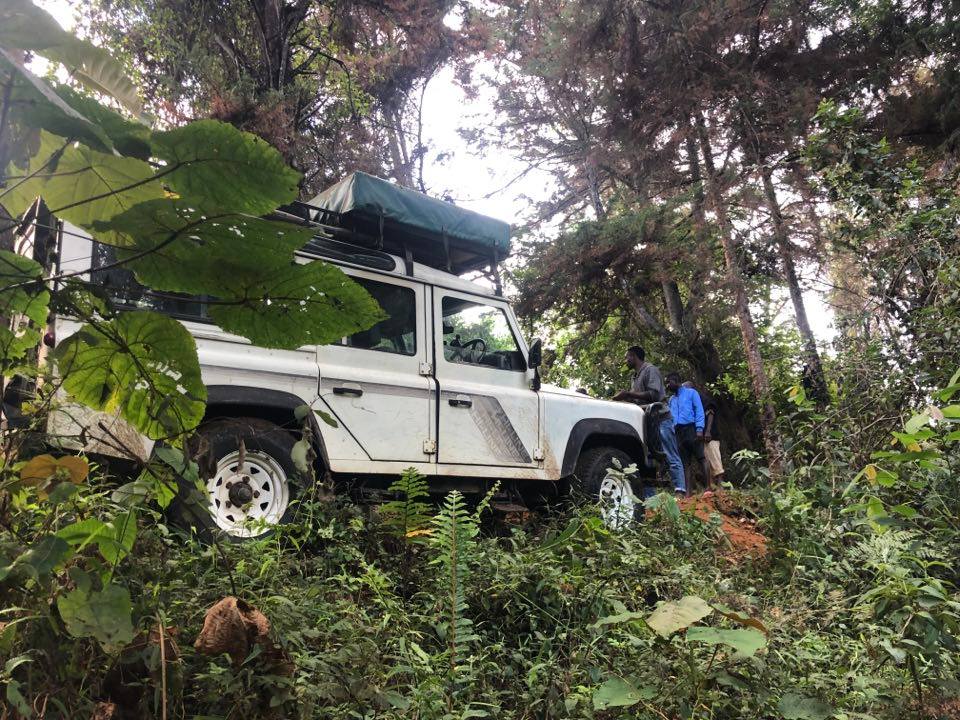
Both wheels about to slide down
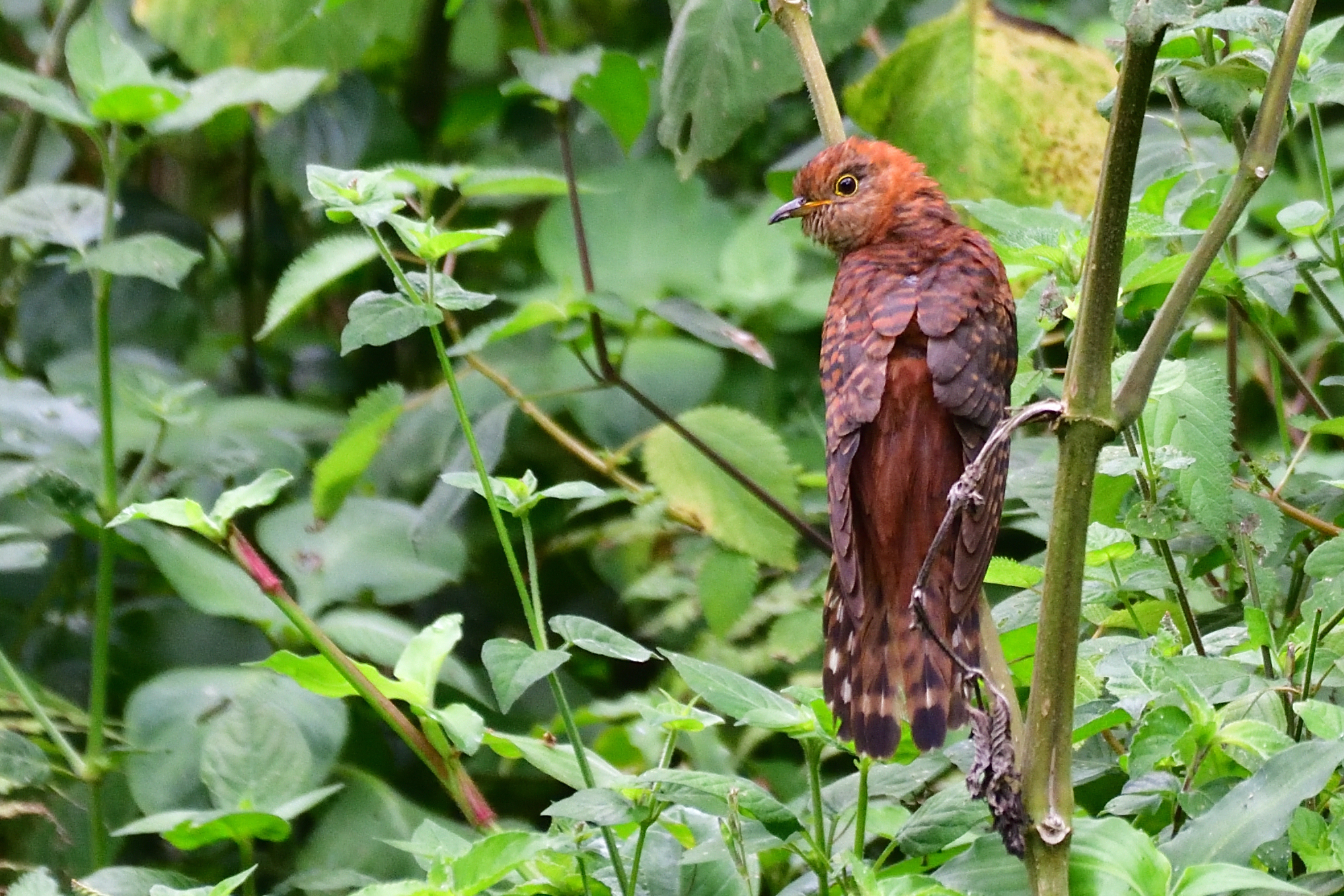
Lesser Cuckoo, Cuculus poliocephalus
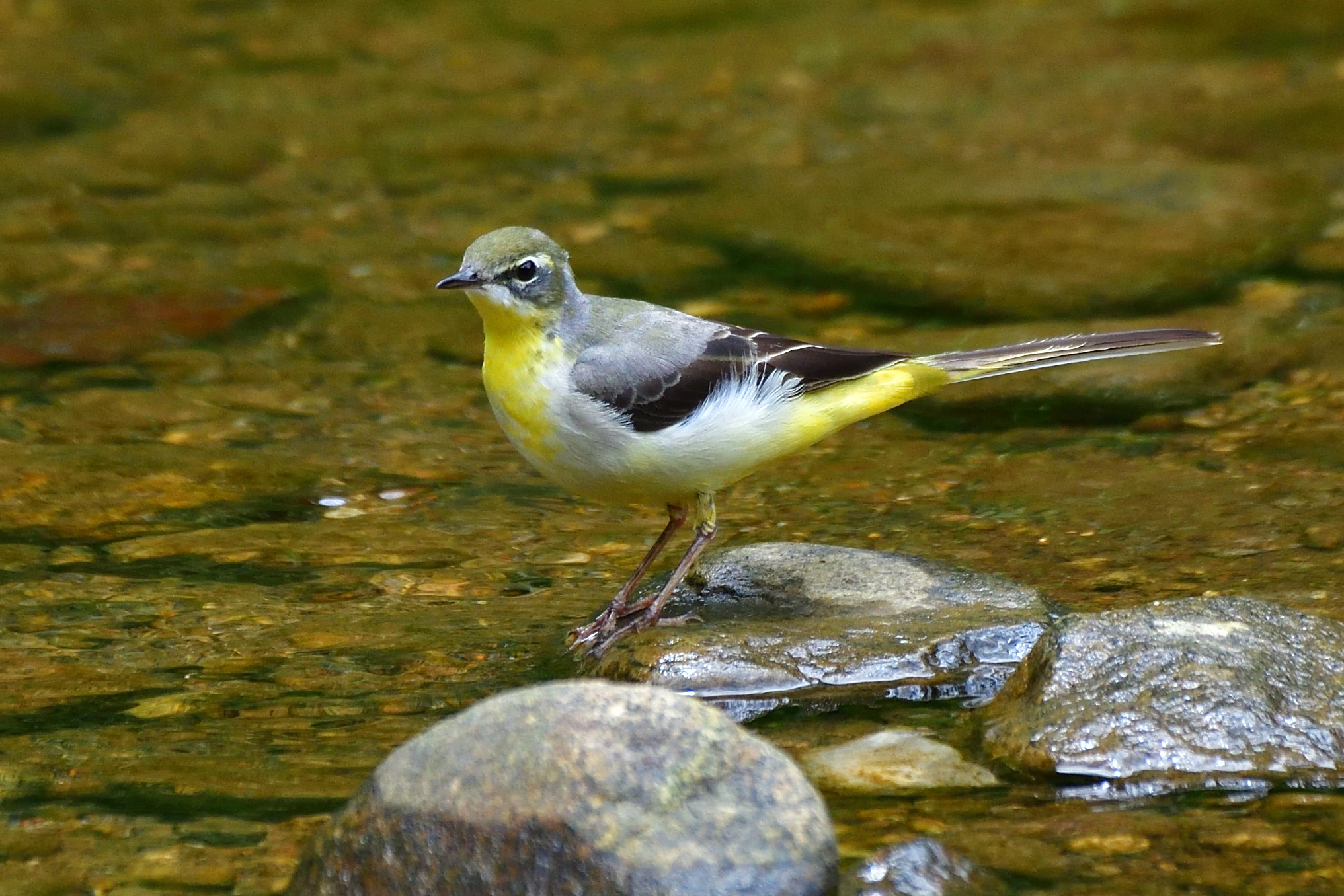
Grey Wagtail, Motacilla cinerea
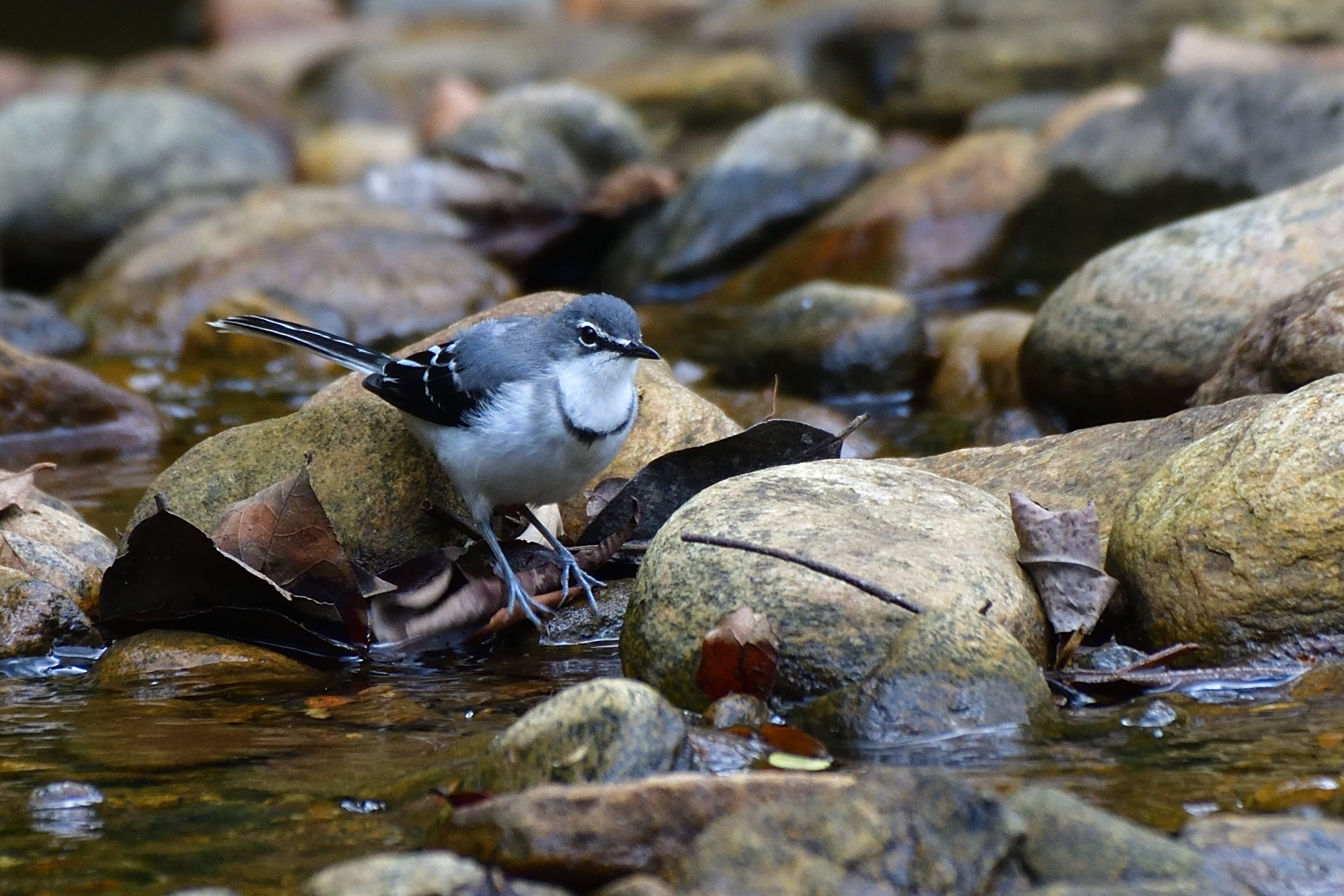
Mountain Wagtail, Motacilla clara
Day 6, Wednesday, December 1 – Mikumi via Ilula and Udekwa to Skinny Camp, Udzungwa Mountains.
The rain from the day before had stopped and we went straight for the famous Miombo Woodland just 10 km north of Mikumi before breakfast. We normally park the car at the pipeline and walk the road, then I go back and pick up the car and catch up. The stretch have quite a few Miombo specials. We recorded from 07:15 to 09:30 the following species: Meyer´s Parrot, Greater Blue-eared Starling, Golden-breasted Bunting, Broad-billed Roller, Arnot´s Chat, Stierling´s Wren-Warbler, Cinnamon-breasted Tit, Yellow-throated Bush-Sparrow (Petronia), Pale-billed Hornbill, White-breasted Cuckooshrike, Black-eared Seedeater, Grey Penduline Tit, Striped Kingfisher, Cardinal Woodpecker, Tropical Boubou, Yellow-bellied Greenbul, Racket-tailed Roller and Livingstone Flycatcher. We returned to Tan-Swiss, packed camp and had breakfast. Then we had a long journey in front of us. Besides being caught in one speed trap, the journey to Ilula went smooth. We stocked up on some supplies there before we started the dreadful more than 60 km road to Udekwa. We parked the car at the camp site near the ranger station where our porters were waiting. Paul and I started walking and Abdul organised the porters. I was horrified to see that all vegetation were burned. I had promised Paul a Black-lored Cisticola on the way. It did not take long before Abdul and the porters overtook us. When we came to the last stream I was happy to see that the other side of the stream was not burnt. It is a steep climb up from the stream and when we were only 500 metres from the Skinny Camp, We finally heard and saw a pair of duetting Black-lored Cisticolas. Paul hanged back for a picture, but I continued to camp. The porters were already setting up camp for us. Paul soon joined us. I had already started preparing our meal. We ate and turned in very early knowing that we had a rather long and steep climb the day after
Some pictures from Day 6
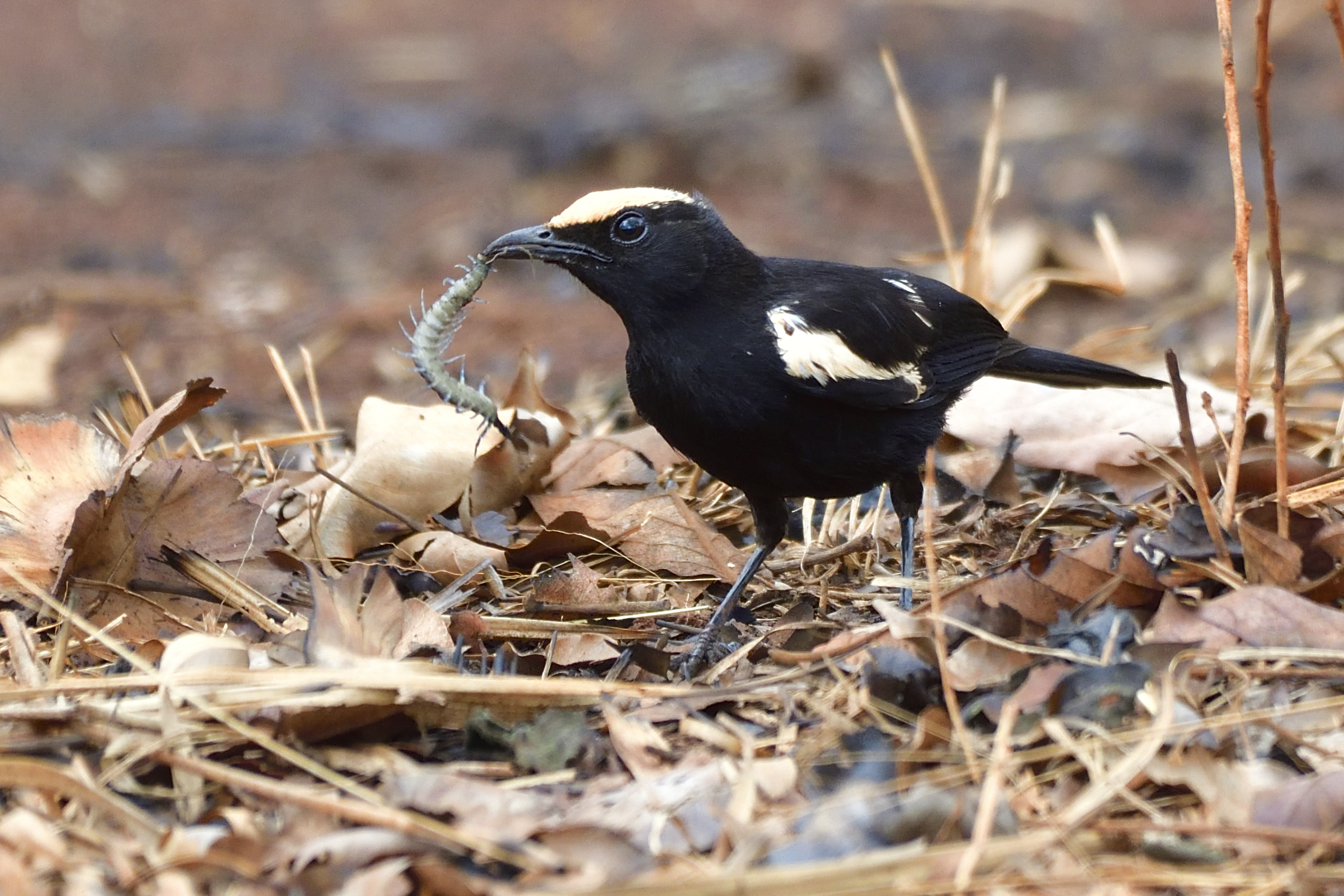
Arnot´s Chat, Myrmecocichla arnotti
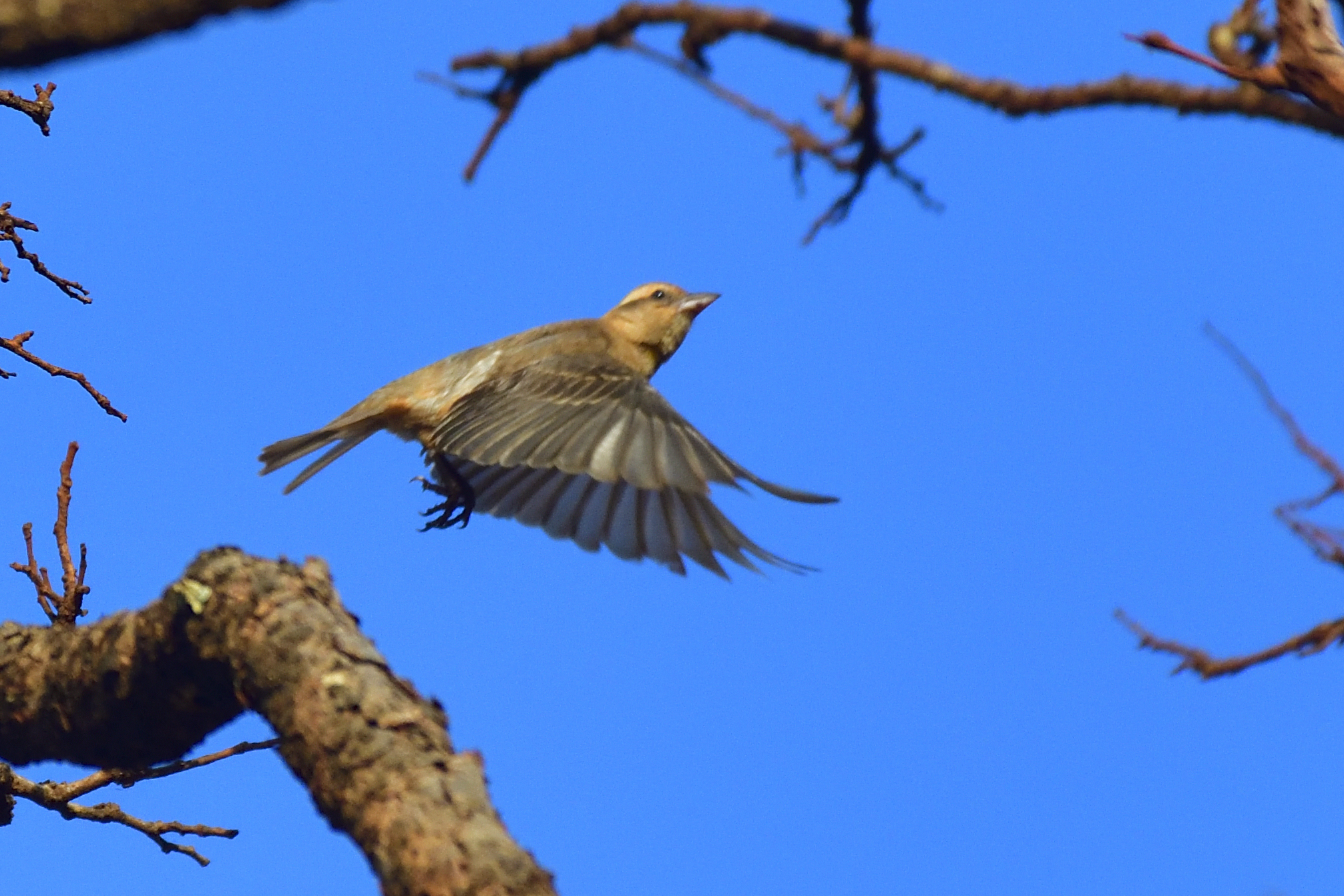
Yellow-throated Bush Sparrow, Gymnoris supercillaris
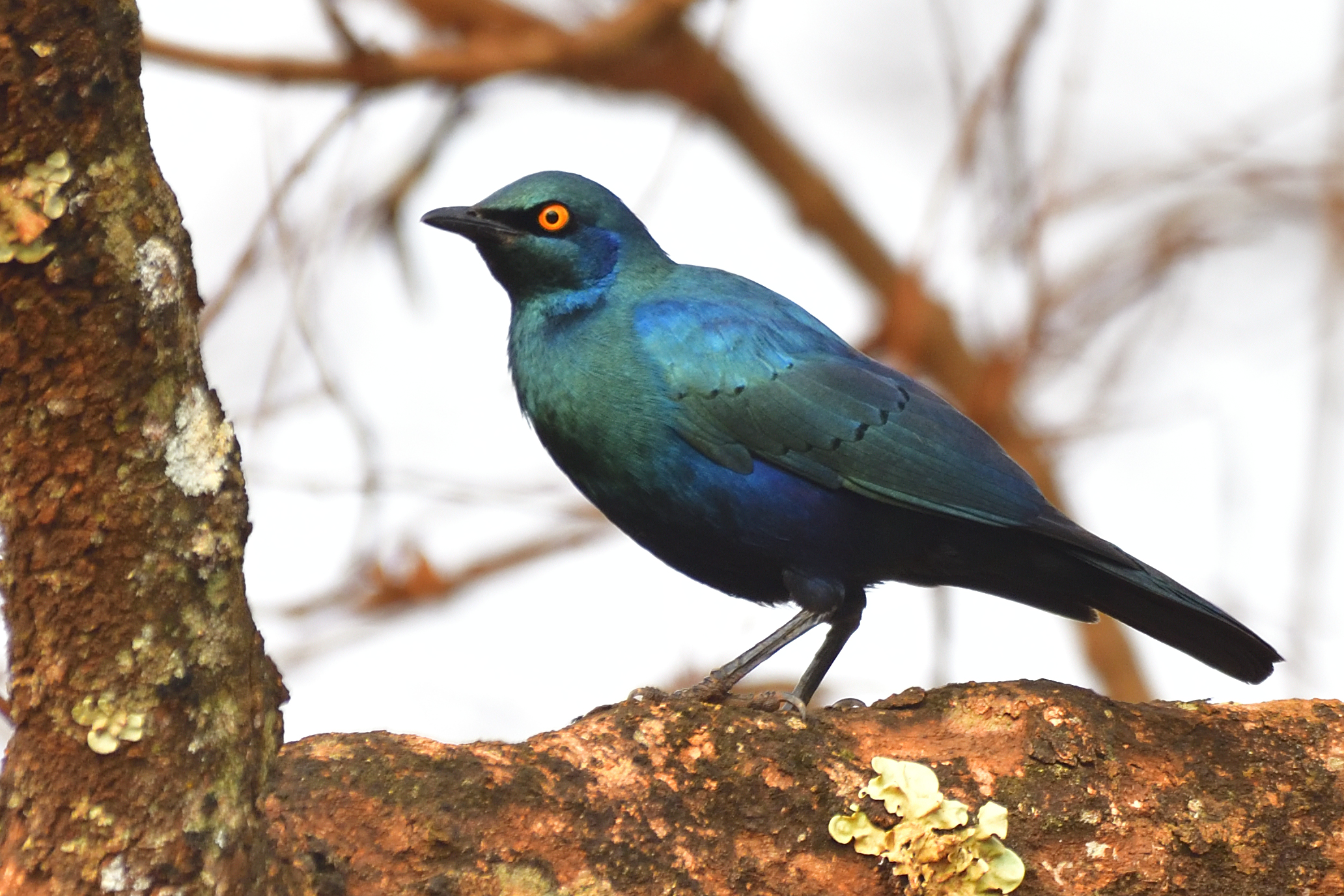
Greater Blue-eared Starling, Lamprotornis chalybaeus
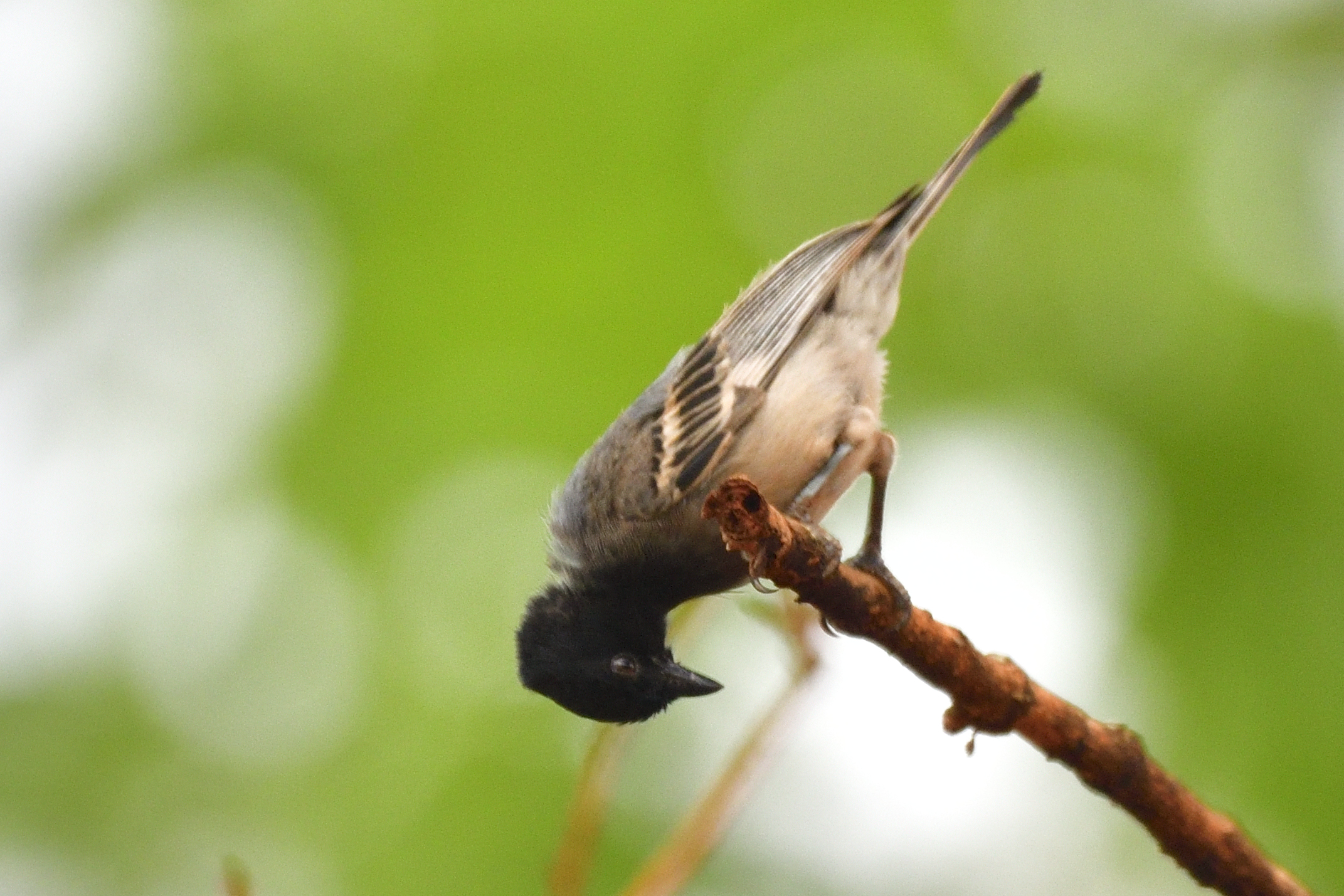
Cinnamon-breasted Tit, Melaniparus pallidiventrus
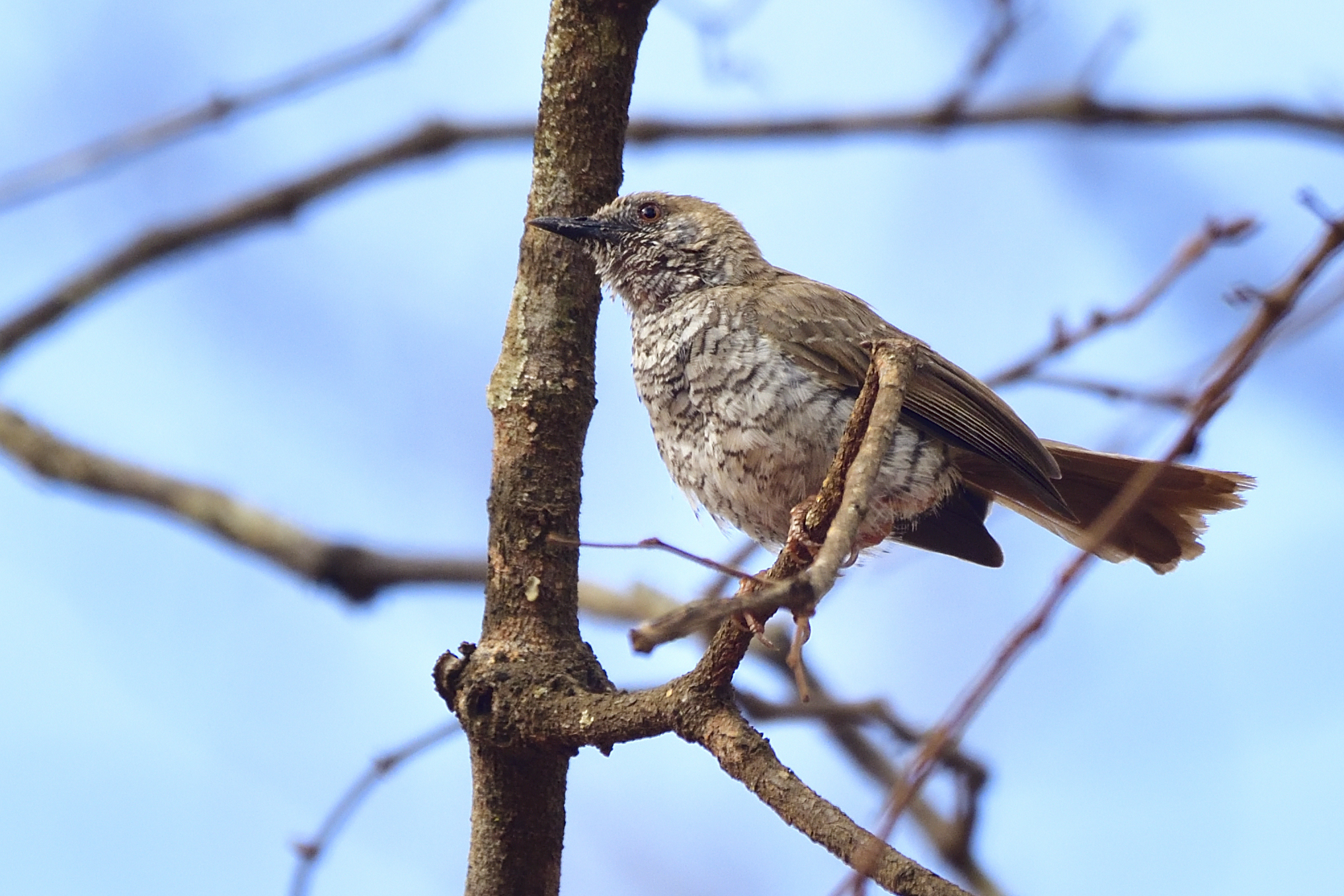
Stierling´s Wren-Warbler, Calamonastes stierlingi
Day 7, Thursday, December 2 – Skinny Camp to Luala Camp Udzungwa Mountains
That morning we knew we had a tough hike, but with birding on the way, we took it very slow. We started at around 08:00 in order to wait for some light. We recorded the following species on the way up: Brown-headed Apalis, White-tailed Crested Flycatcher, Eastern Bronze-naped Pigeon, Little Greenbul, Cape Robin-Chat, Evergreen Forest Warbler, Shelley´s Greenbul, Tropical Boubou, Olive Sunbird, White-starred Robin, Fülleborn´s Boubou, Silvery-cheeked Hornbill, Yellow-rumped Tinkerbird, Olive-flanked Ground Robin, Orange Ground Thrush, Dark Batis, Livingstone Turaco, Sharpe´s and Iringa Akalat, Barred Long-tailed Cuckoo, African Broadbill, Southern Yellow White-eye, Bar-tailed Trogon, Stripe-faced Greenbul, White-chested Alethe, Yellow-throated Grenbul, Moreau´s Sunbird, Chapin´s Apalis and Mountain Buzzard. We reached camp around 1 PM. I needed to rest a little but as always Paul was eager and went out and got some good pictures of amongst other the Yellow-throated Greenbul and the Olive Flanked Ground Robin that he dipped on in Uluguru. I made lunch and we set out for a walk around 3PM. For the area we added the following birds Moustched Tinkerbird, Scarce Swift, Trumpeter Hornbill, Malachite Sunbird, Spot-throat and I finally got a decent picture of Iringa Akalat. On the way back to camp we added Yellow-crowned Canary. In camp it was time for me to cook and after the meal we sat by the bonfire for a while before we retreated to our tents.
One picture from Day 7
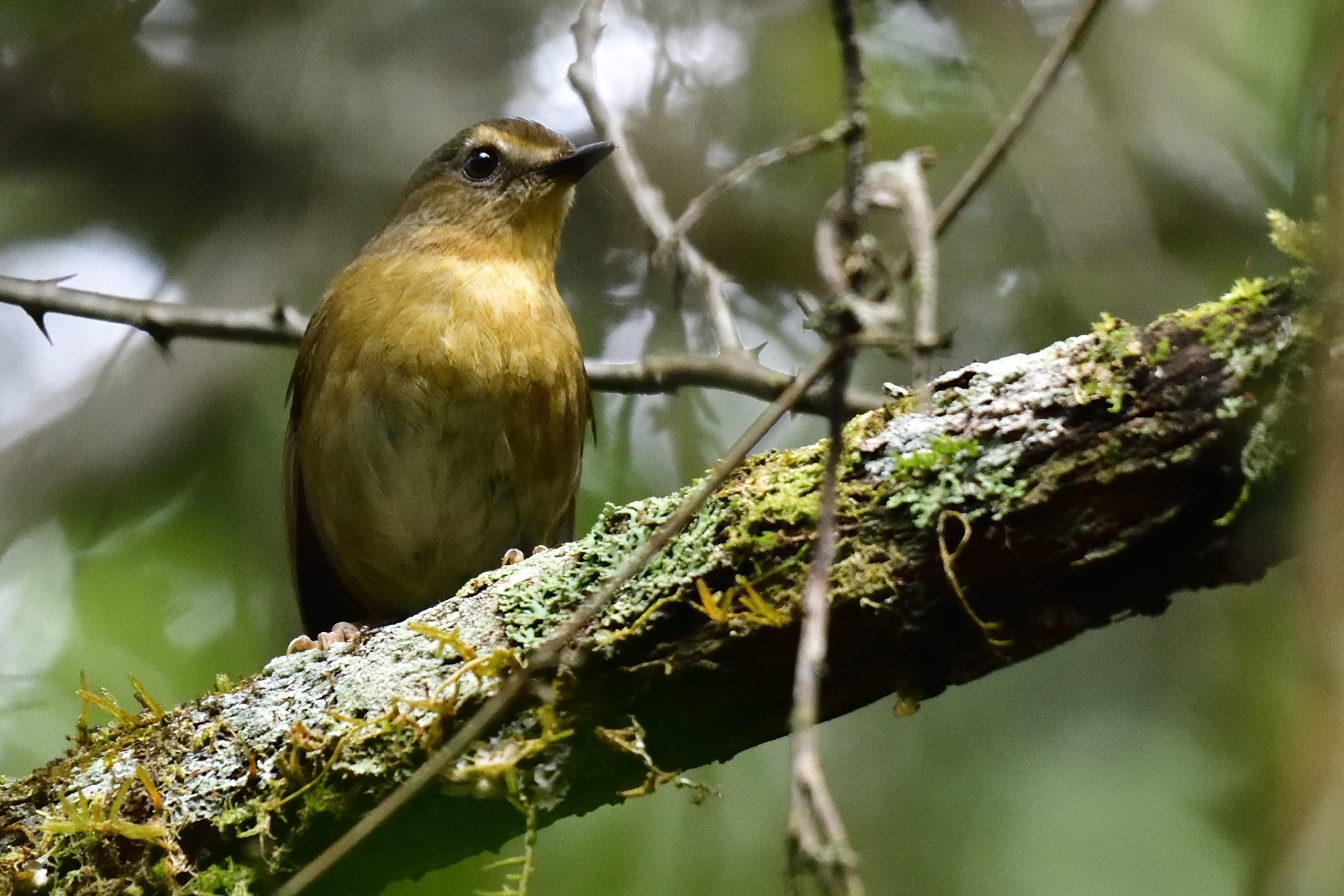
Iringa Akalat, Sheppardia Lowei – Endemic to Eastern Arc Mountains of Southern Tanzania
Day 8, Friday, December 3 – Luala Camp
We were not in total agreement where to go this morning. I wanted to go back where I know people find the Udzungwa Forest Partridge, the other wanted to follow one of the porters that had another spot. I joined the majority and we took off. The forest was quiet, but we added Dark-backed Weaver, Common Square-tailed Drongo and Green Wood Hoopoe. We had a steep climb and when the terrain started dropping, I decided I rather go back to camp. On the way I did finally flush a Udzungwa Forest Partridge. However still no pictures. The others soon came back to camp. Abdul had another path he wanted to try. I followed them for a while, but when the path got too steep, I let them go on their own. Meanwhile I grabbed my chair and some nectar (beers) and sat on the path and waited for them to come back. They had not seen much. We went back to camp and tried one more time for my spot. We had some exiting times and got them quite close to us, but there was a fallen log that acted as a barrier. In the end Paul stood up and he got good views, but alas no pictures. We walked back to camp and added Waller´s Starling, Mountain Yellow Warbler, Red-capped Forest Warbler, Striped Pipit and Slender-billed Starling before we reached camp.
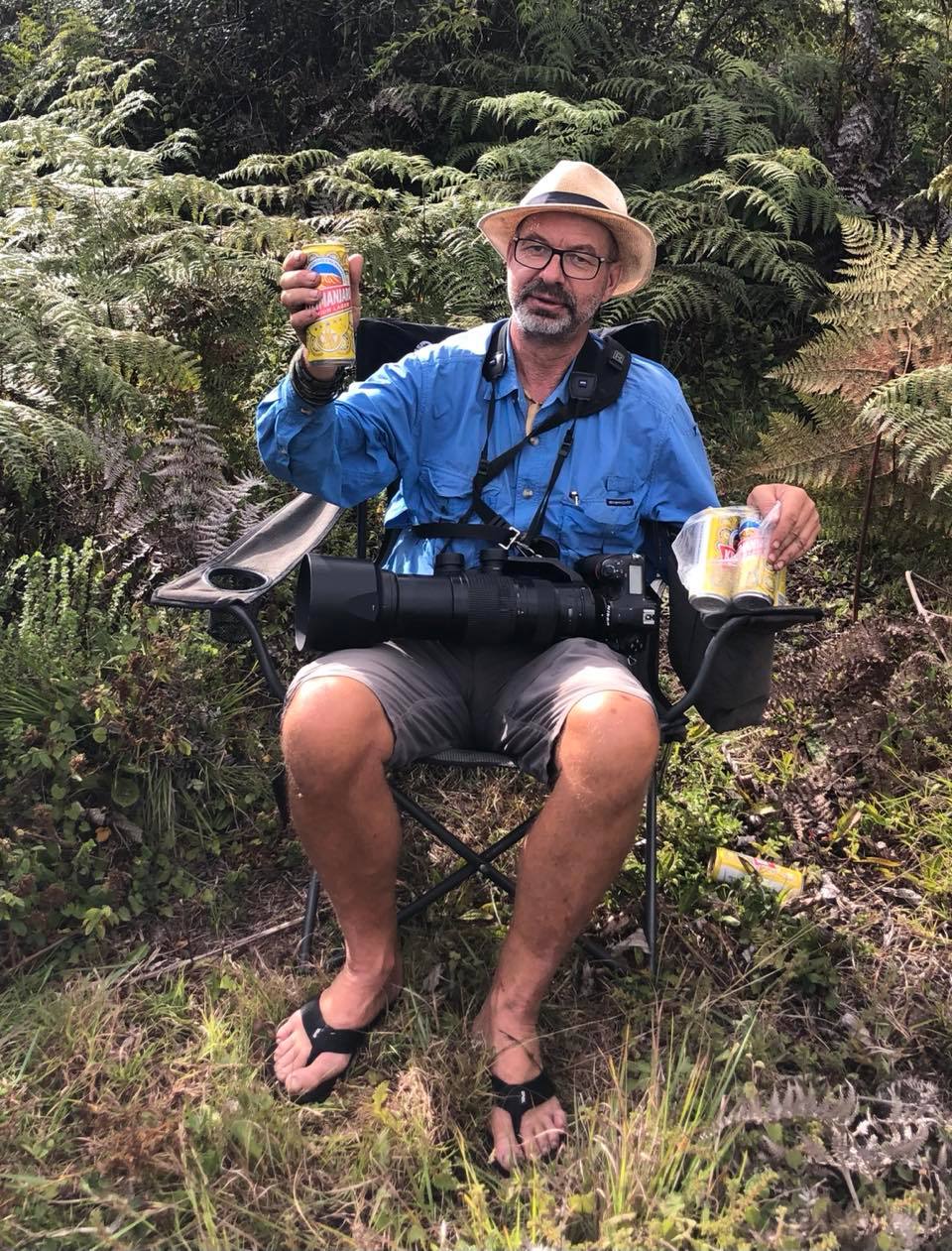
Some lazy birding in the Udzungwa mountains
Day 9, Saturday, December 4 – Luala camp to Iringa River Camp
We packed early this morning and wanted to bird our way all the way to the car. I like to walk my own phase and let Paul and Abdul trail me. after a long walk mostly downhill I finally reached camp. After a while Paul and Abdul joined me. It was time to pay the porters and bid our farewell. We were supposed to go to Iringa that day, but I remembered that Paul needed the Jameson´s Firefinch and i knew the perfect spot. I was curious whether the camp was open or not. They were officially closed, but they let us in. We arrived around 5PM. While Abdul and I set up camp, Paul walked a little on the grounds and came smiling back having found the Firefinch. Other birds included Violet-backed Starling and Purple-crested Turaco. We had ordered dinner and ate at the restaurant.
Day 10, Sunday, December 5 – Iringa River Camp, via Iringa and Uluti to Kilambo Camp in Udzungwa Scarp Forest
We had to go into Iringa in order to stock up on supplies again. We took the opportunity to have breakfast in town. We met briefly with Neil Baker who told us nothing was open on a Sunday, but we managed to find a local restaurant and had some sort of a breakfast. Our mini supermarket was open, so we managed to stock up. We left the supermarket at around 10 and the challenge now was to reach camp before nightfall. We ticked a Common Kestrel in Iringa Town. I knew I was in for another grueling drive on very bad roads. There is a place I normally stop for Forest Double-collared Sunbird. However Abdul had found a small wetland area just before my spot and sure enough we did not only find the Sunbird, but also Black-lored and Churring Cisticola, Little Rush Warbler, White-starred Robin and Ancieta Tchagra (Now lumped with Marsh Tchagra). We continued and the roads gradually deteriorated. The were repairing the road for a looong stretch and it was tough driving. We eventually reached the small village of Uluti where they treated us as heroes. Most people park here, but the villagers are so proud of the track they have created. Not sure how comfortable Paul felt, but I drove Lizzy as before all the way to the forest edge, saving 1 1/2 hour of walking. The ranger had arranged 10 porters for us and Abdul skilfully manage to distribute the loads. We entered the forest around 3PM. It took Abdul only a few minutes to locate a pair of White-winged Apalis, a lifer for both Paul and I. We both had possibilities for shots, but both flunked. At least we both had good views. Other birds near the entrance to the forest included Yellow-throated Woodland Warbler, Yellow-streaked and Striped-faced Greenbul and Dark-backed Weaver. We did not bring any tables with us and I suddenly remembered that our cooker was behind the tables in the car. I asked Abdul if he remembered if he sent that with the porters. Oops a moment of embarrassment. Lucky for him I discovered it after just a 15 minutes walk. I wanted to push on to camp, but Paul wanted to stay behind and wait for Abdul. The hike to Kilambo camp is not that strenuous, it is just a climb up to a ridge and from there is more or less a flat walk on the ridge until you reach camp. The porters were there waiting. I started setting up camp and was soon joined by Paul and Abdul. We had also ordered a chicken that they brough alive. I am pretty good at making a chicken casserole, the only problem is that the local chicken need to be boiled for at least 3 hours before it is edible for a Mzungu (white man). We heard the Dapple-throat calling near camp. Paul and Abdul went looking for it, but this is an extremely shy bird. We had dinner sat a little bit by the fire before we turned in. I knew from past experience that Udzungwa Scarp Forest is probably the most difficult forest I have ever birded. However I tried to keep the spirit up.
Some pictures from day 10
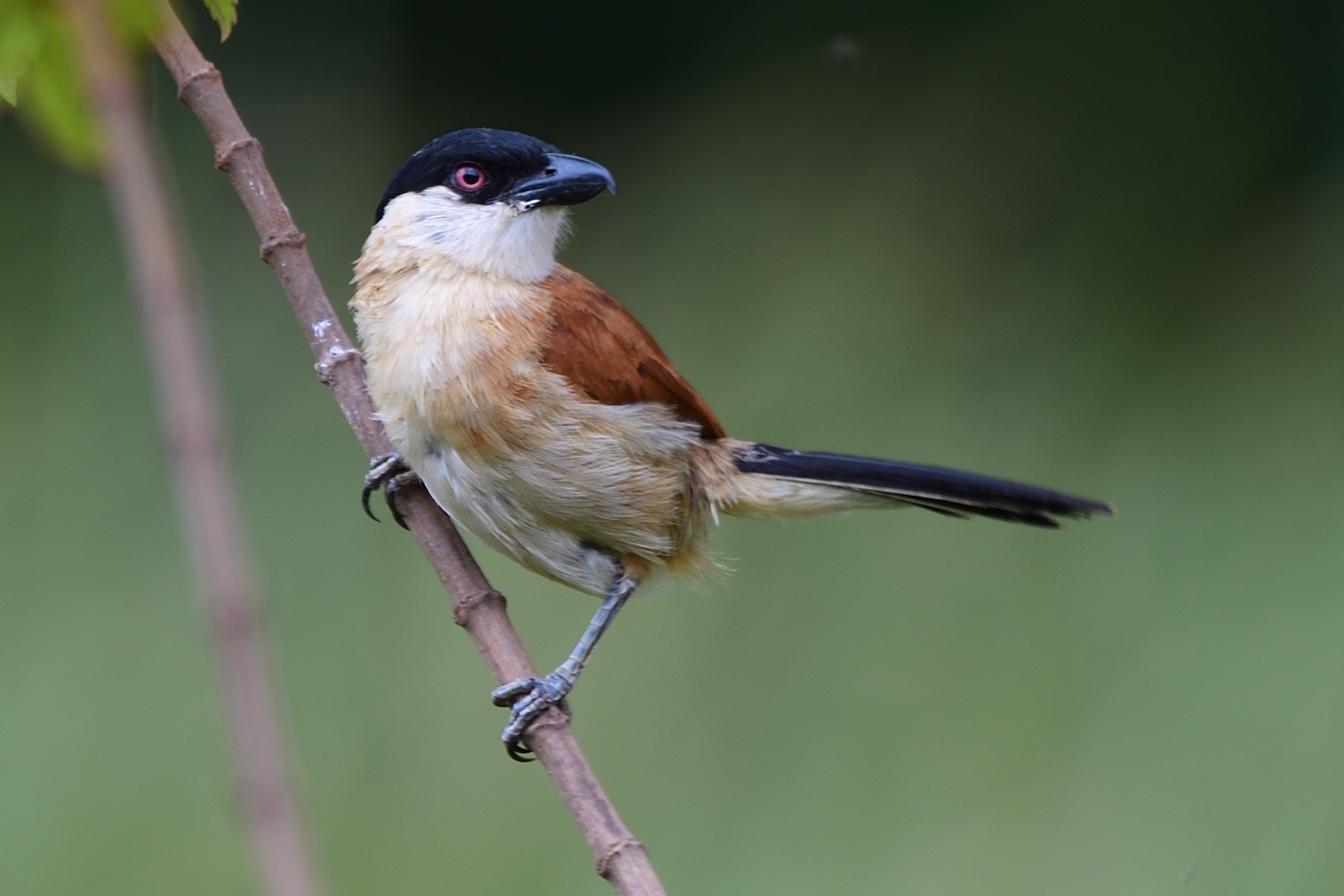
Marsh (Ancieta) Tchagra, Bocagia Minuta
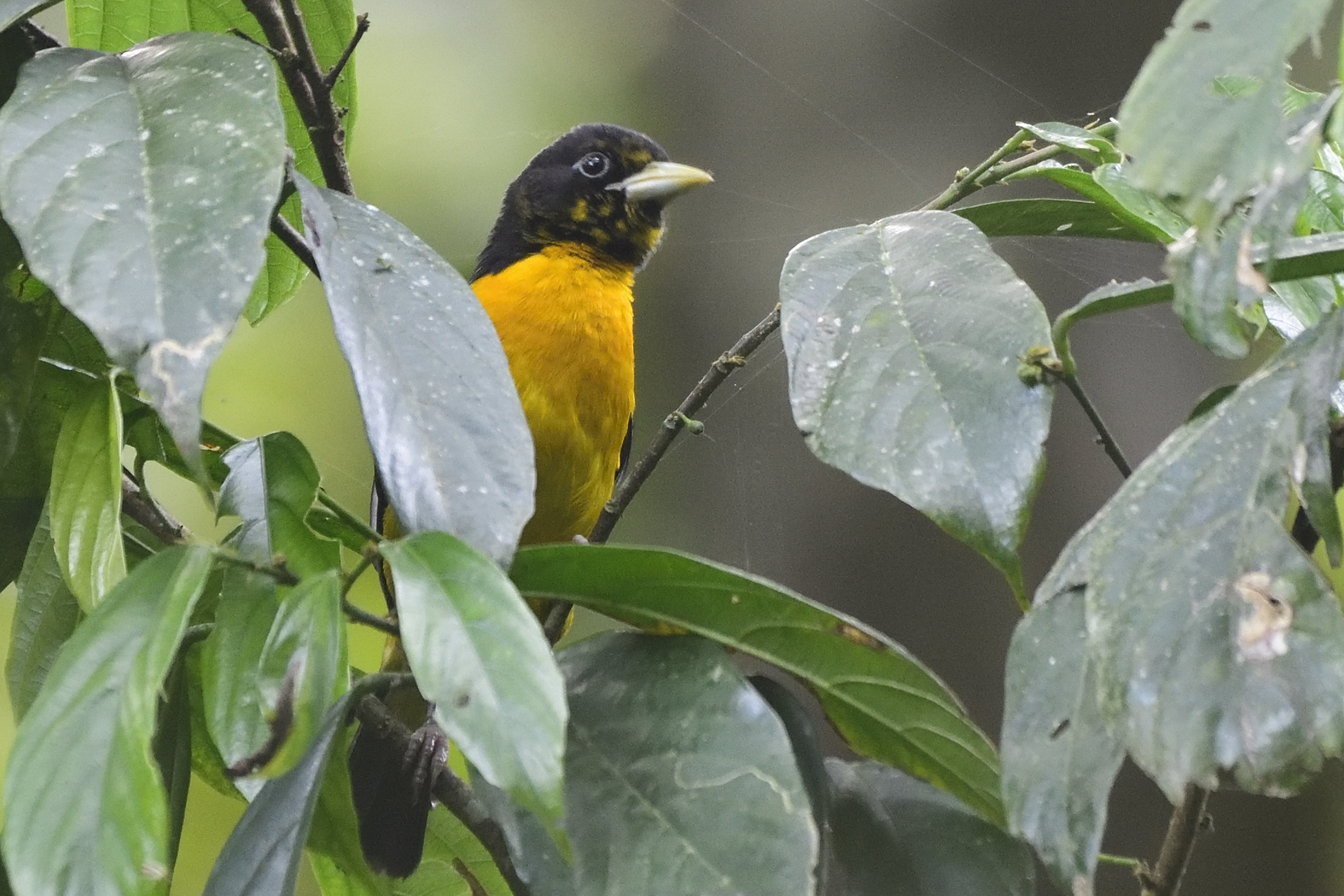
Dark-backed Weaver, Ploceus bicolor
Day 11, Monday, December 6 – Udzungwa Scarp Forest
We were not in a haste that morning since the light comes very late. Our primary target here was the Rufous-winged Sunbird. We started the walk and registered Orange Ground Thrush, African Broadbill and finally one of many encounters with the Sunbird. This is not an easy bird to photograph since it is mainly a canopy bird and it never sit still. Paul however later on managed to get some decent picture. Me on the other hand…. We continued and registered Fülleborns Boubou, Dark Batis, Silvery-cheeked Hornbill, Livingstone Turaco, Mountain Buzzard and White-tailed Crested Flycatcher. We returned to camp for lunch. After having eaten, we choose another path: Crowned Eagle, White-chested Alethe before we heard a Spot-throat close by the path. I let Paul and Abdul go after it while I waited on the path. After waiting for the bush wacking for about 30 minutes I returned to camp. They soon joined me and Paul managed to get very good picture of an Iringa Akalat + he improved his pictures of the Rufous-winged Sunbird. Dinner and some bonfire stories and to the tent. We also had quite a bit of rain that afternoon
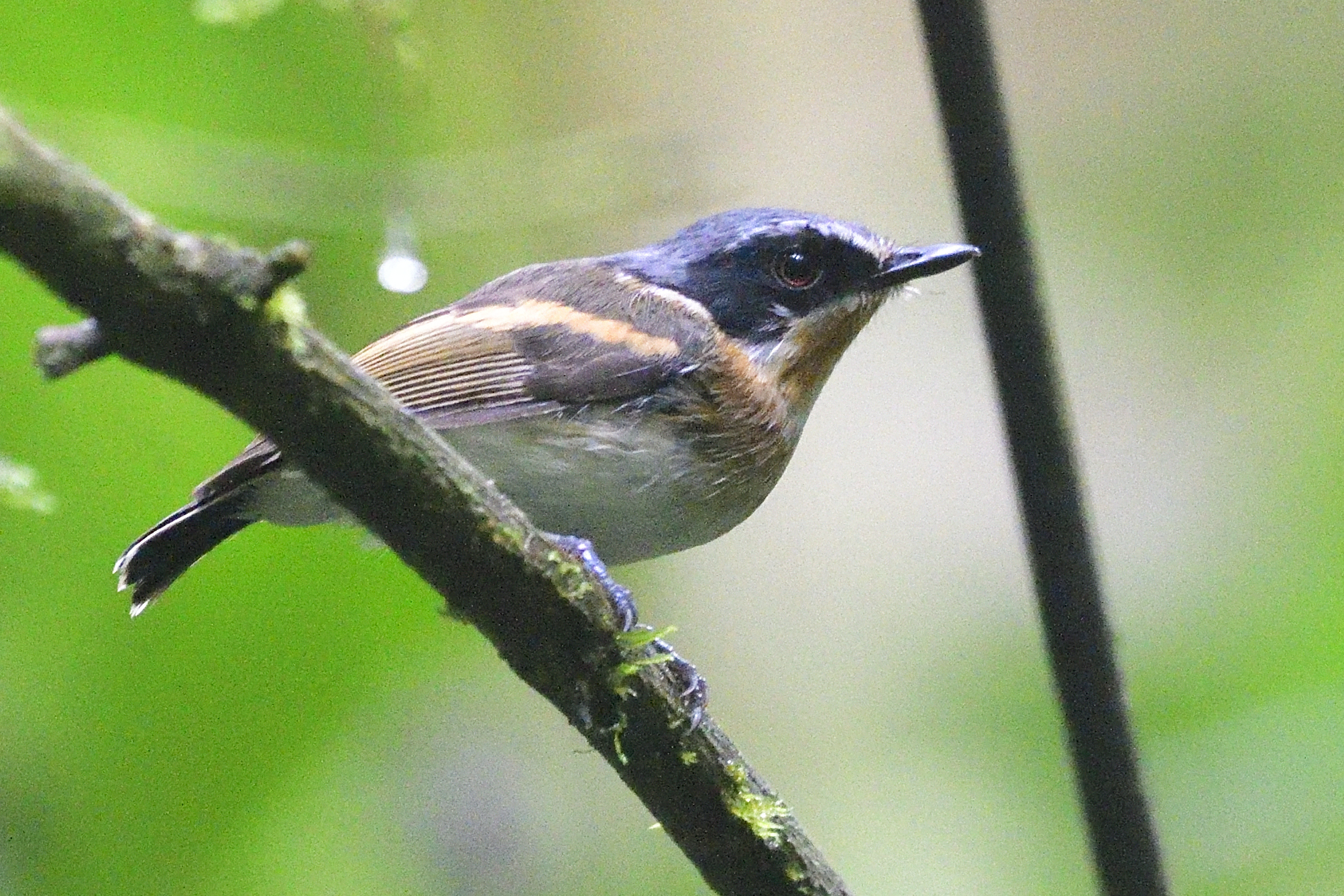
Dark Batis, Batis crypta – Endemic to Eastern Arc Mountains
Day 12, Tuesday, December 7 – Udzungwa Scarp Forest – Kisolanza
We decided to pack camp early that day. We stopped at Abdul´s spot to try to improve pictures of the Forest Double-collared Sunbird and we succeded. We drove all the way to the main road and arrived in Kisolanza around 3 PM in time to set up camp. In the afternoon we did a productive bird walk: Brown-headed Apalis, White-browed Robin-Chat, Miombo Wren-Warbler, Black-collared and Spot-flanked Barbet, Reichard´s Seed-eater, Marico and Western Miombo Sunbird, White-headed Saw-wing, Fülleborn´s Longclaw, Purple-crested Turaco, Plain-backed Pipit, Black Cuckooshrike and African Olive Pigeon were some of the birds recorded. I had purchased some nice meat and we had a feast that nigt. Later while in the tents, we could hear African Wood-Owl and Spotted Eagle-Owl calling.
Some pictures from day 12
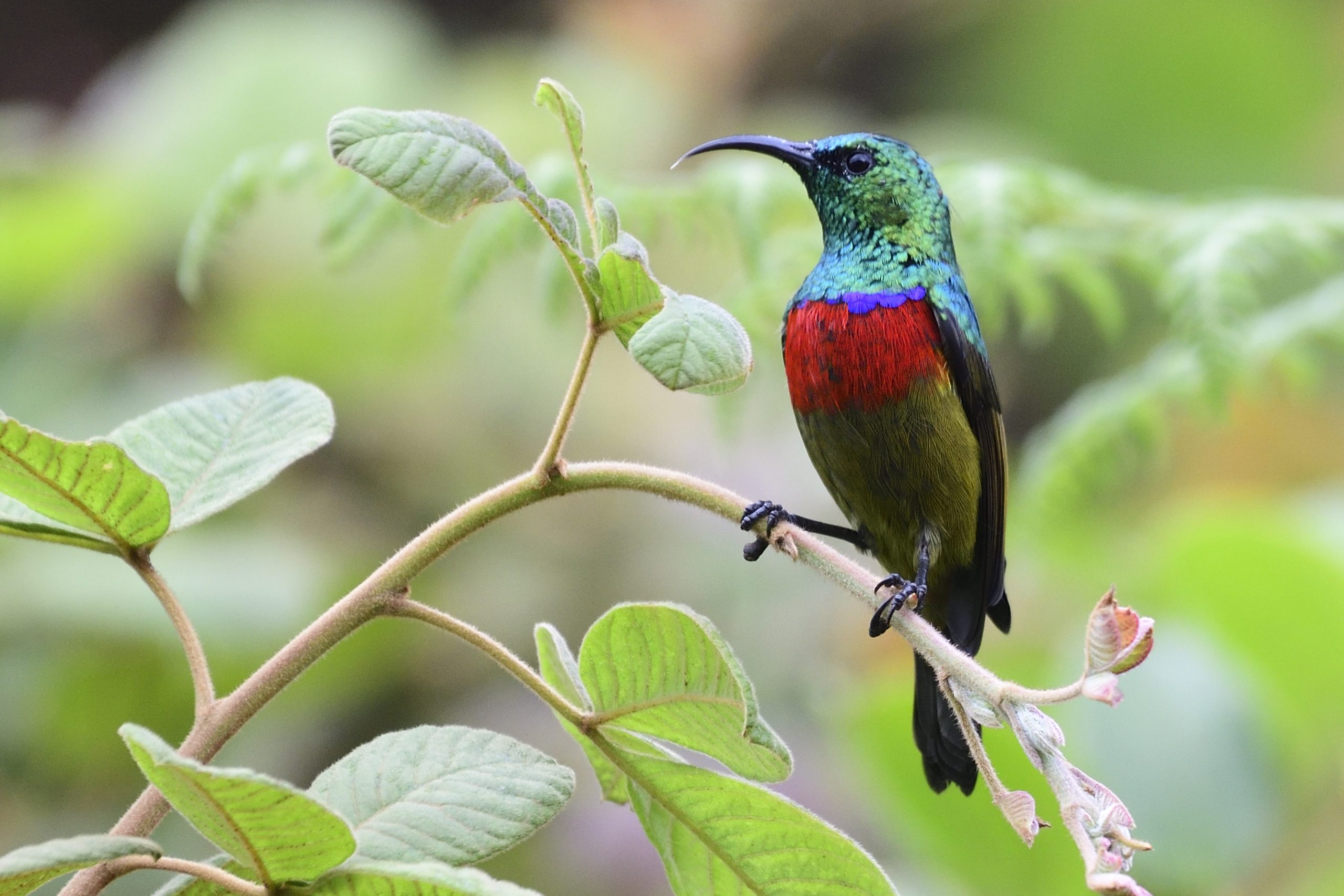
Forest Double-collared Sunbird, Cinnyris fuelleborni
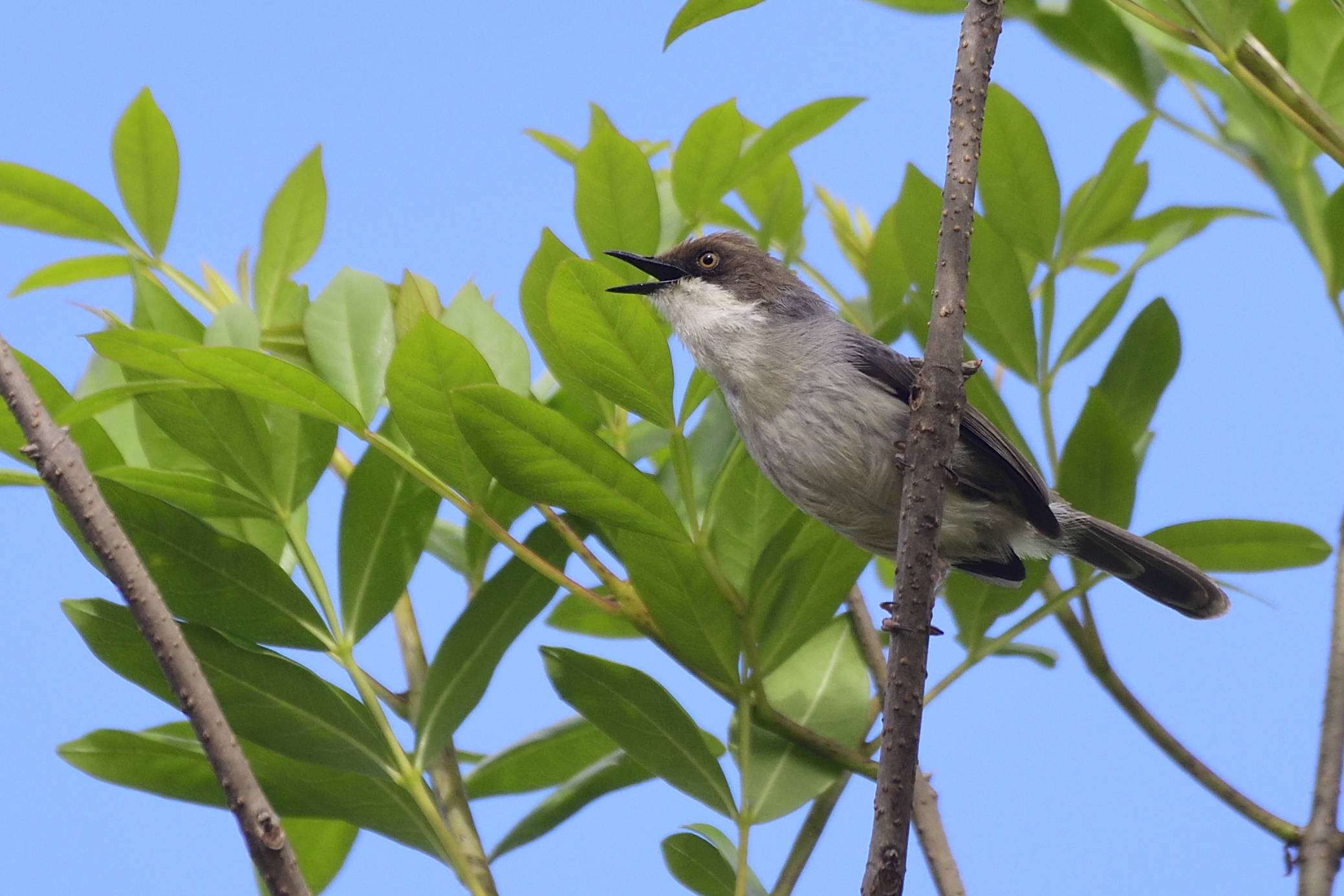
Brown-headed Apalis, Apalis alticola
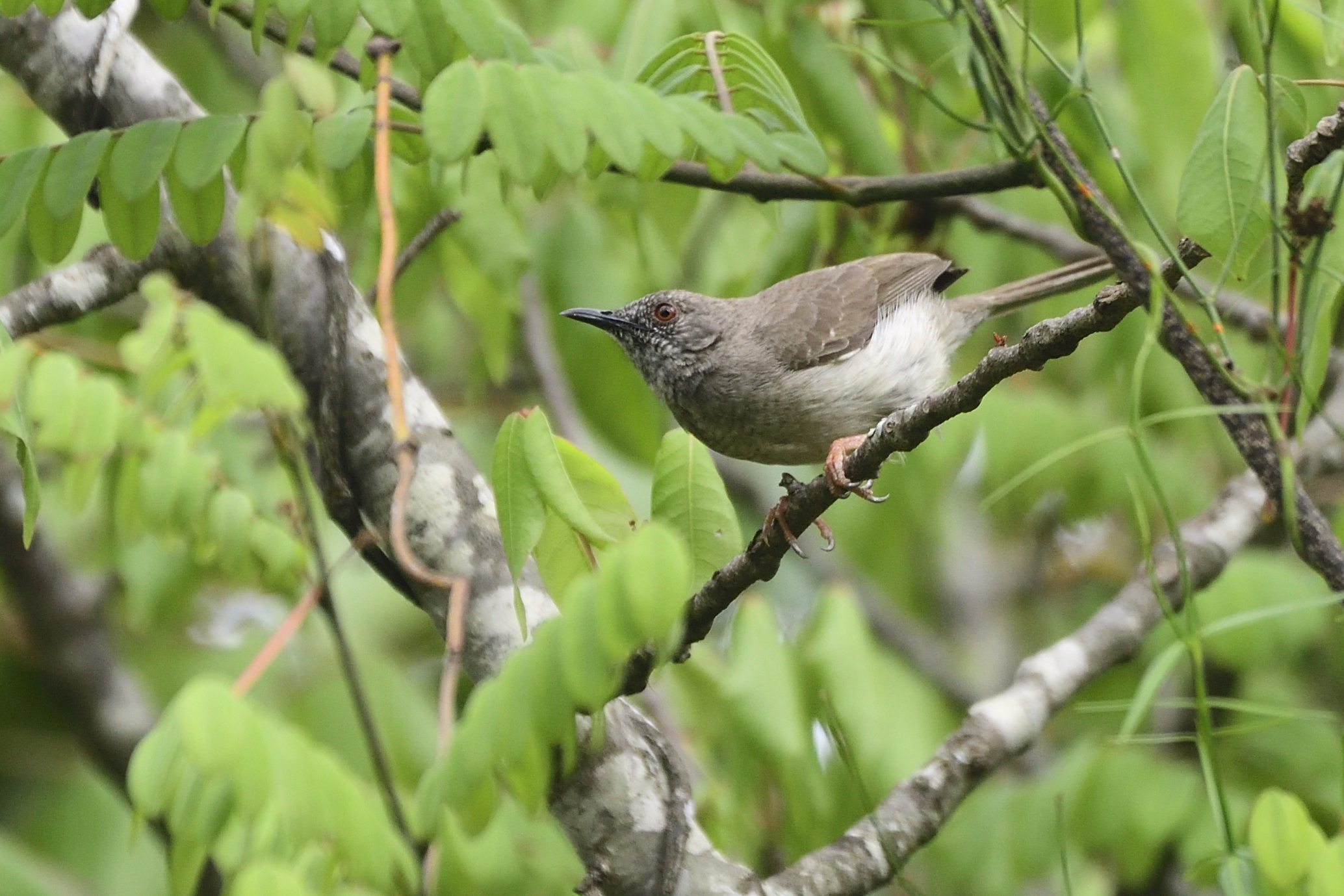
Miombo Wren-Warbler, Calamonastes undosus
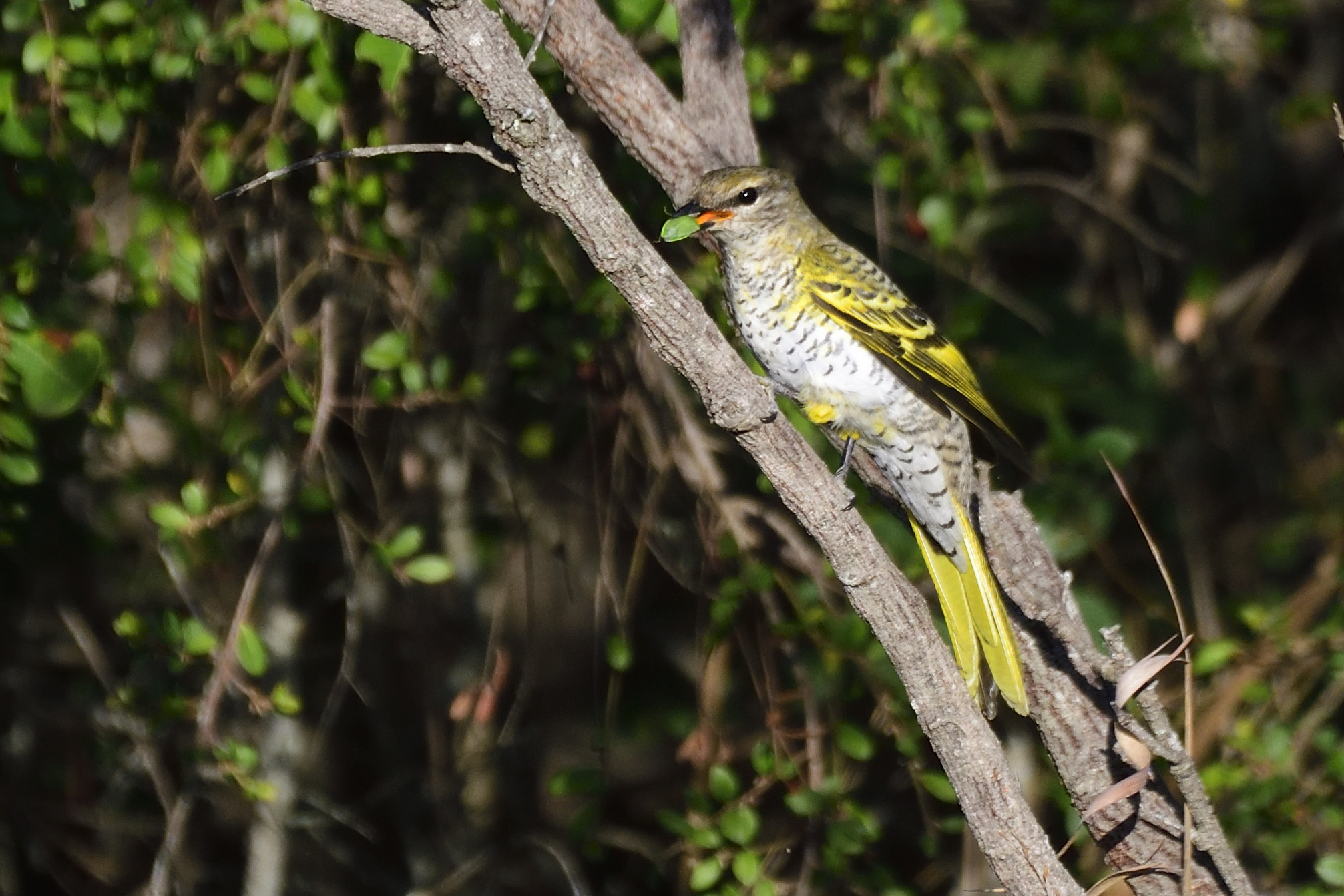
Black Cuckooshrike (Female), Campephaga flava
Day 13, Wednesday December 8 – Kisolanza to Kitulo National Park
We took a morning walk at Kisolanza. We managed to improve on the Western Miombo Sunbird, besides that we added Orange-breasted Bushshrike, Montane Widowbird, Common Whitethroat Coqui Francolin, Abdims Stork and Brown-crowned Tchagra. After breakfast we set sail for Kitulo National Park. Again a fairly long drive to the turn off and a very bad road up to the gate. We arrived in Camp around 4PM and had time for a short drive: Rufous-naped Lark, Lanner Falcon, African Stonechat, Churring Cisticola, Pallid Harrier, Malachite Sunbird, Yellow-crowned Canary, Augur Buzzard and Common Quail. Dinner was cooked and eaten before we retreated to bed.
Some pictures from Day 13
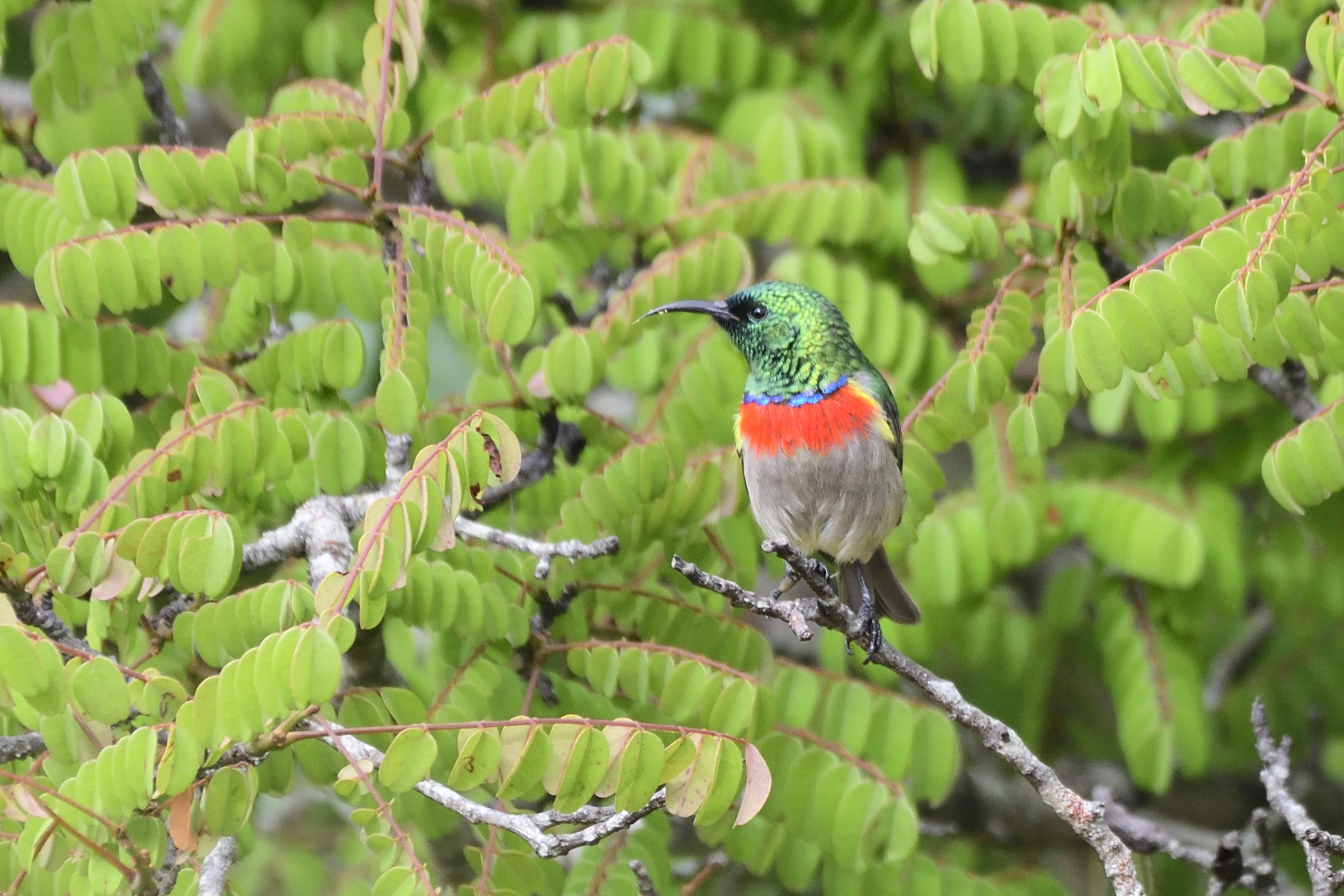
Western Miombo Sunbird, Cinnyris gertrudis
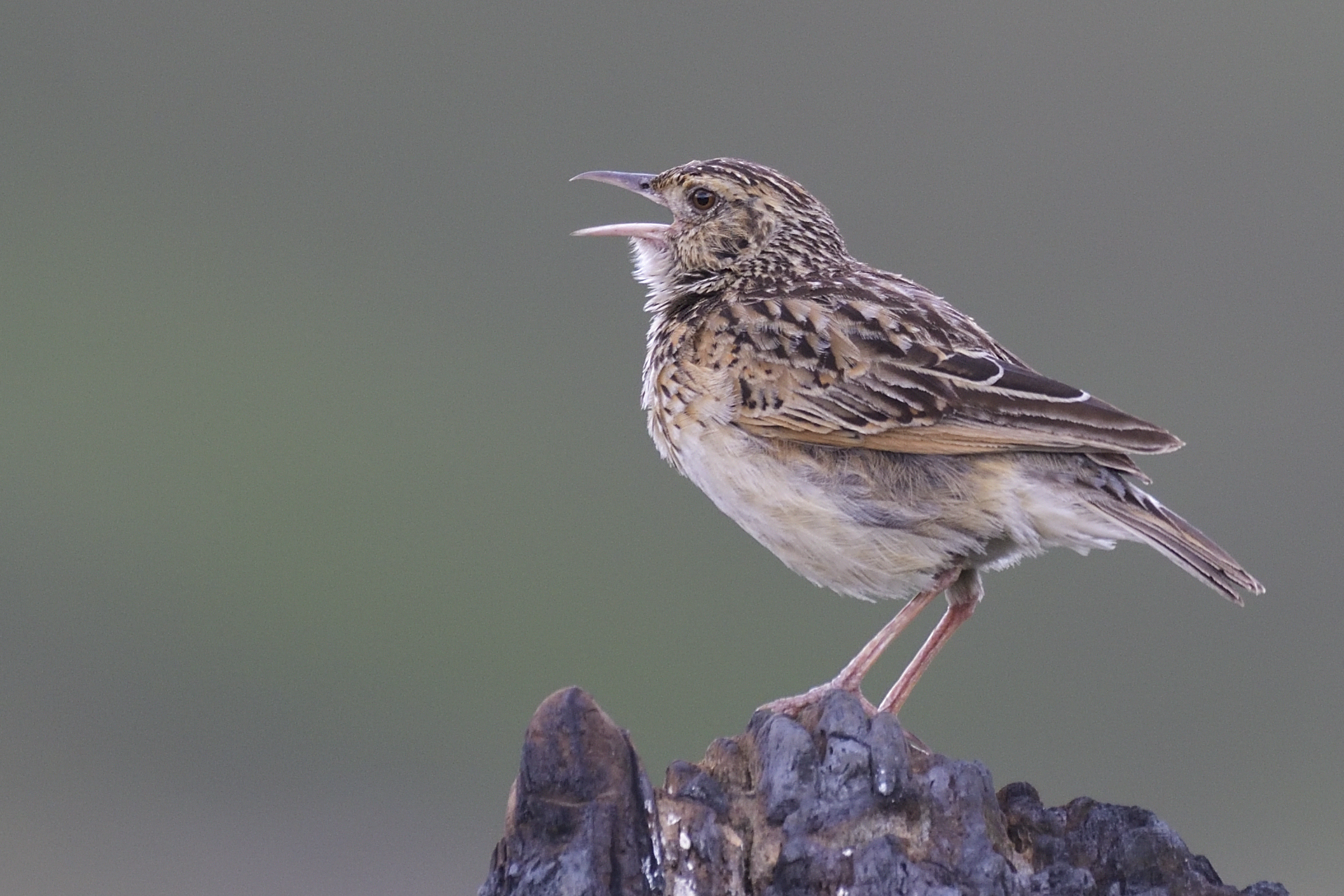
Rufous-naped Lark, Mirafra africana
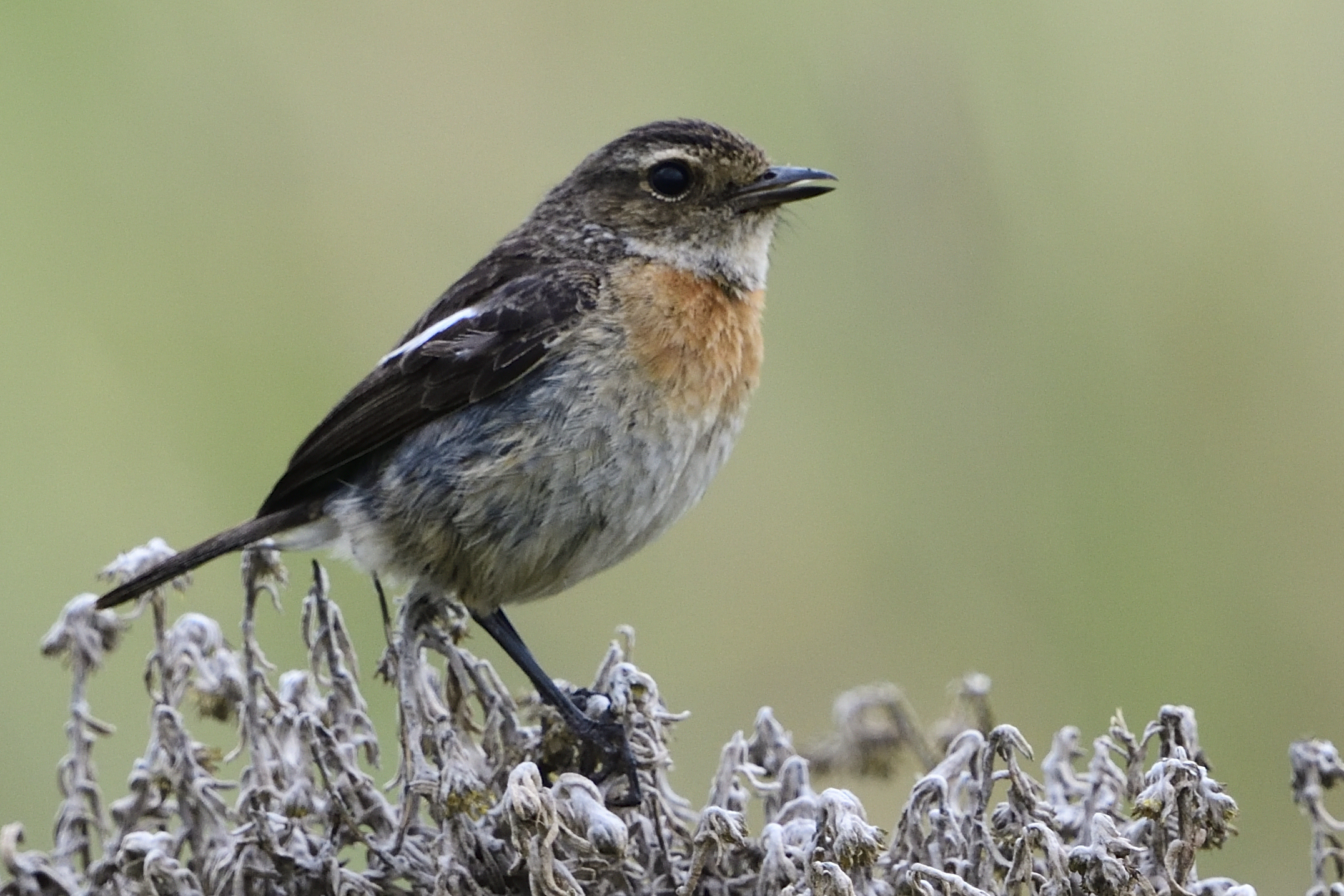
African Stonechat, Saxicola torquatus
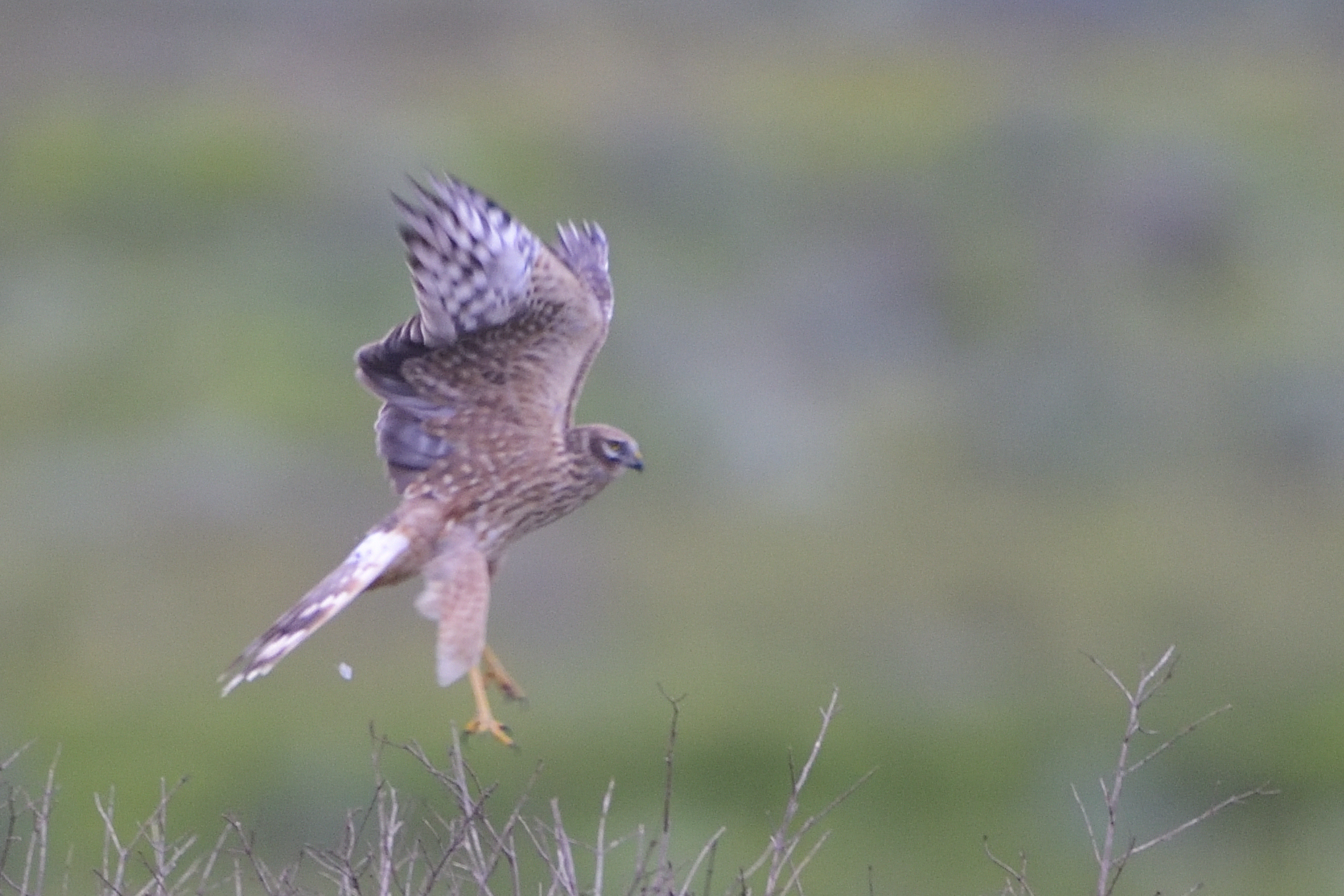
Pallid Harrier, Circus macrourus
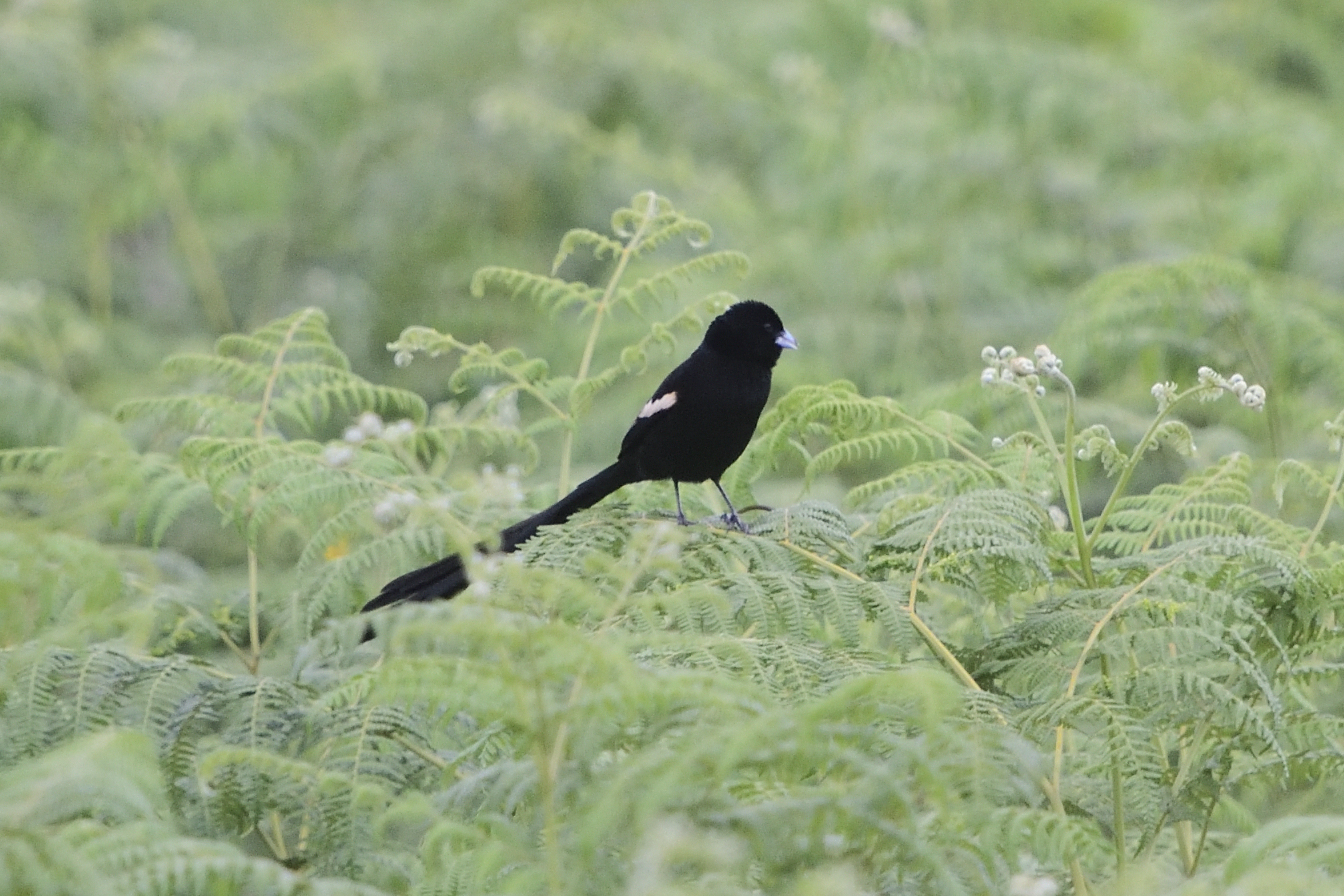
Montane Widowbird, Euplectes psammacromius – Endemic to S Tanzania and N Malawi
Day 14, Thursday, December 9 – Kitulo National Park to Laela
This was a day with a long travel. We were going to bird the rest of the park in the morning and then set off for Laela on the Zambian border. Our first target was Scarlet -tufted Sunbird. I have a spot for that inside Kitulo NP. We drove there and Paul managed to get a picture of a Male Scarlet-chested Sunbird. Then we started our way out of the park. Here are some of the birds we registered on the way out: Common Buzzard, White Stork, Red-winged Francolin, Churring and Black-lored Cisticola and Fülleborn´s Boubou. We were now out of the park and had to start some serious driving. We reached Laela just before darkness fell. We got a Boda Boda (Motorcycle Taxi) to show us the best guest house in town. Ordered food and got early to bed.
Some pictures from day 14
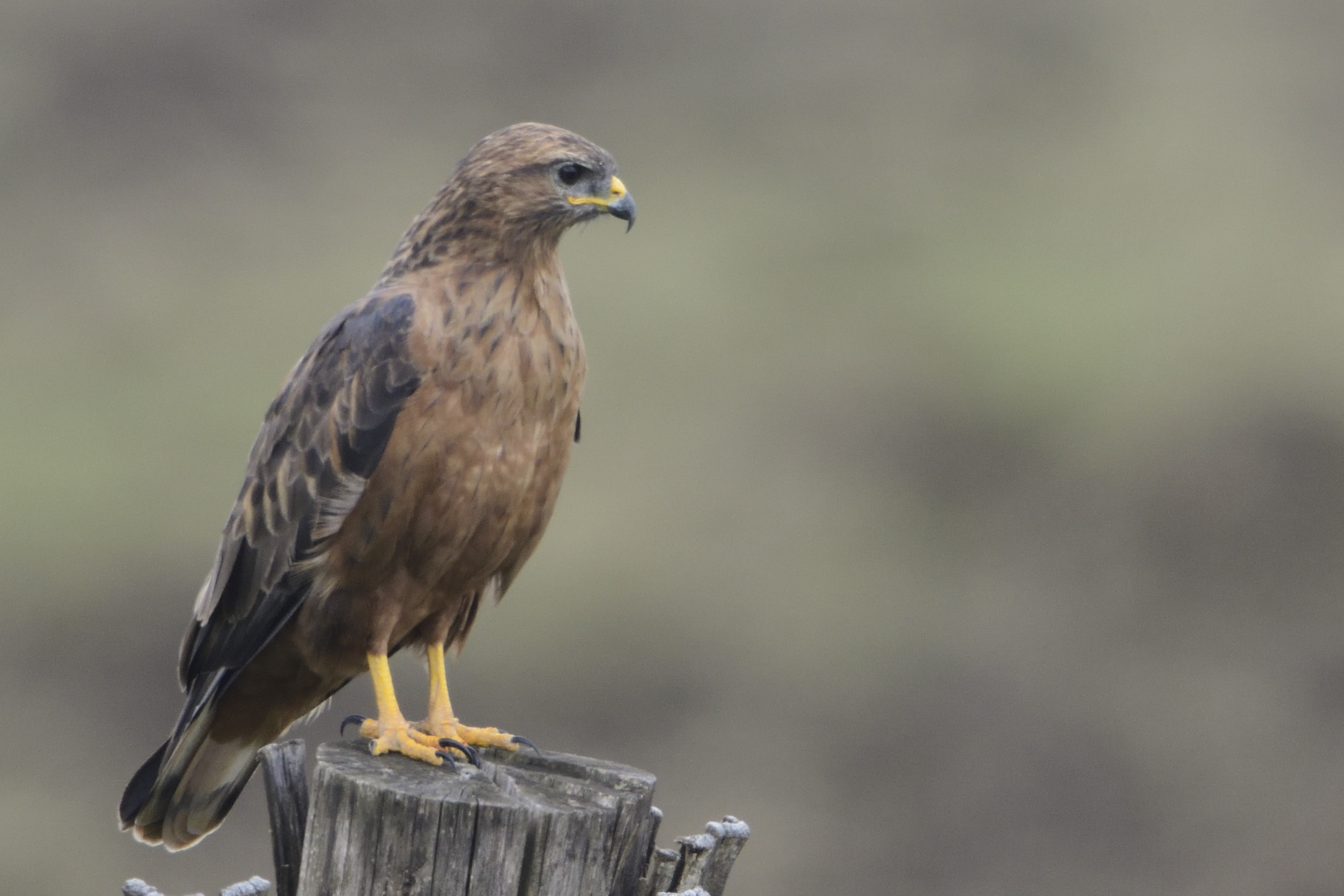
Common Buzzard, Buteo buteo
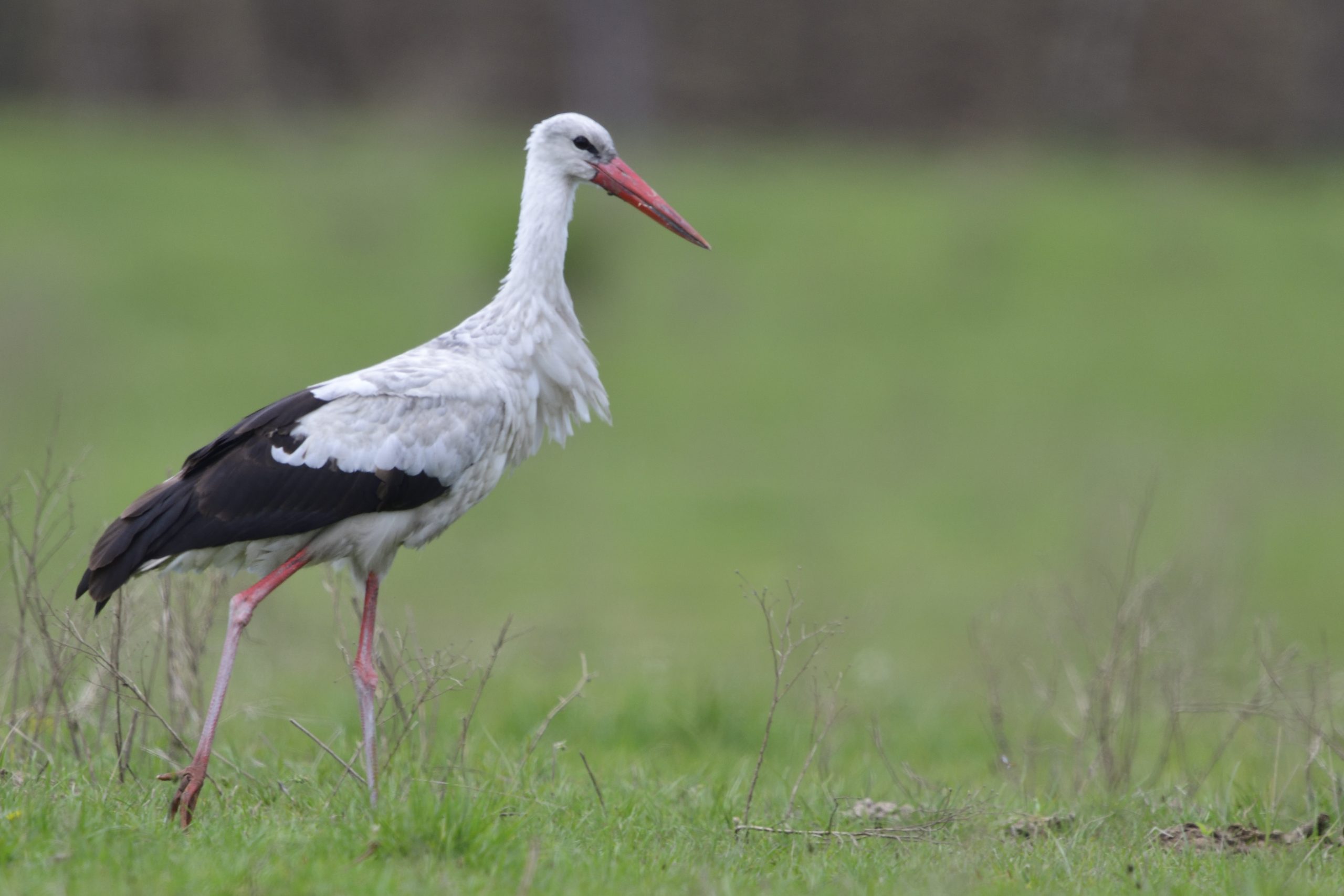
White Stork, Ciconia ciconia

Fülleborn´s Longclaw, Laniarius fuelleborni – Endemic to SC Africa
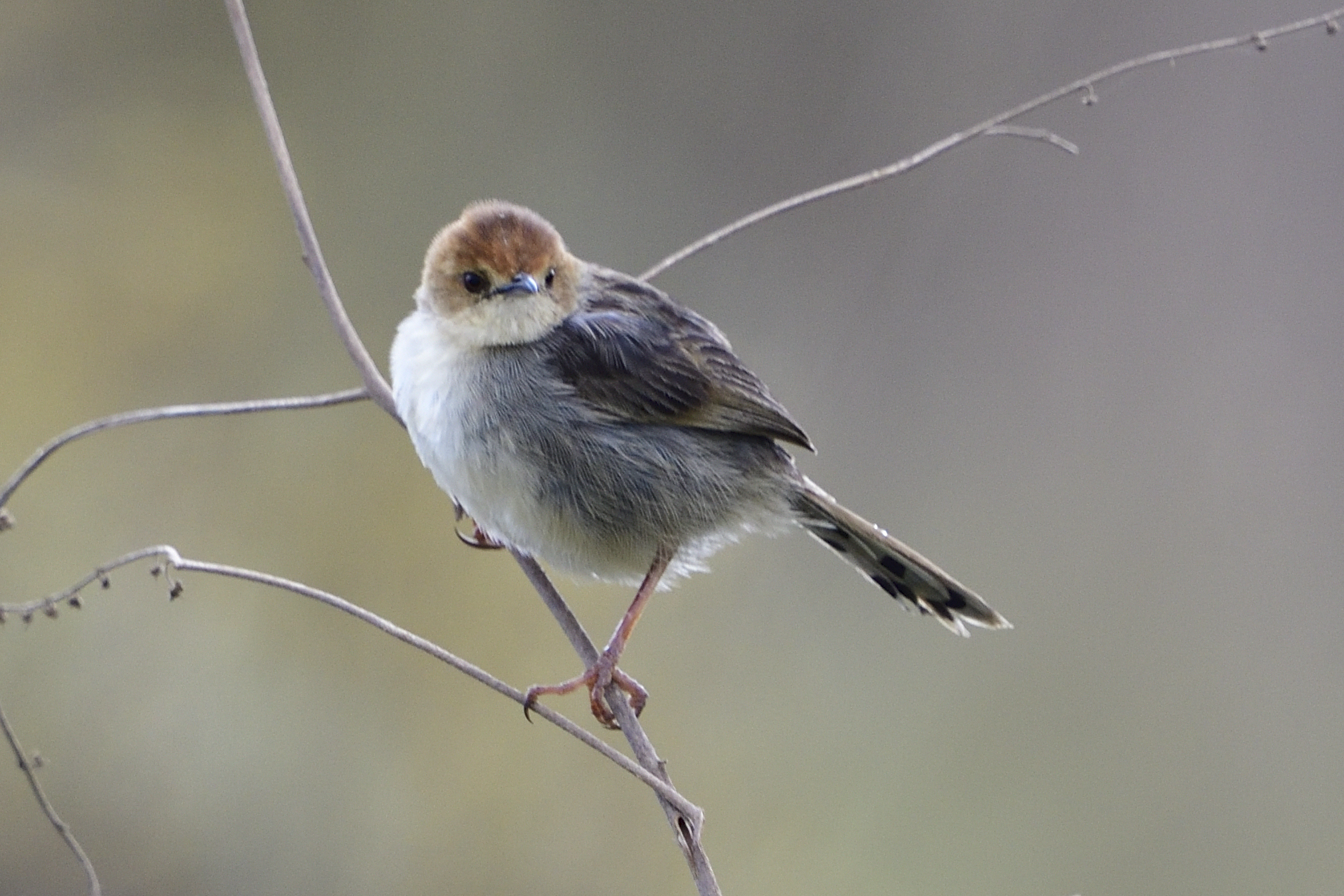
Churring Cisticola, Cisticola njombe – Endemic to S Tanzania and N Malawi
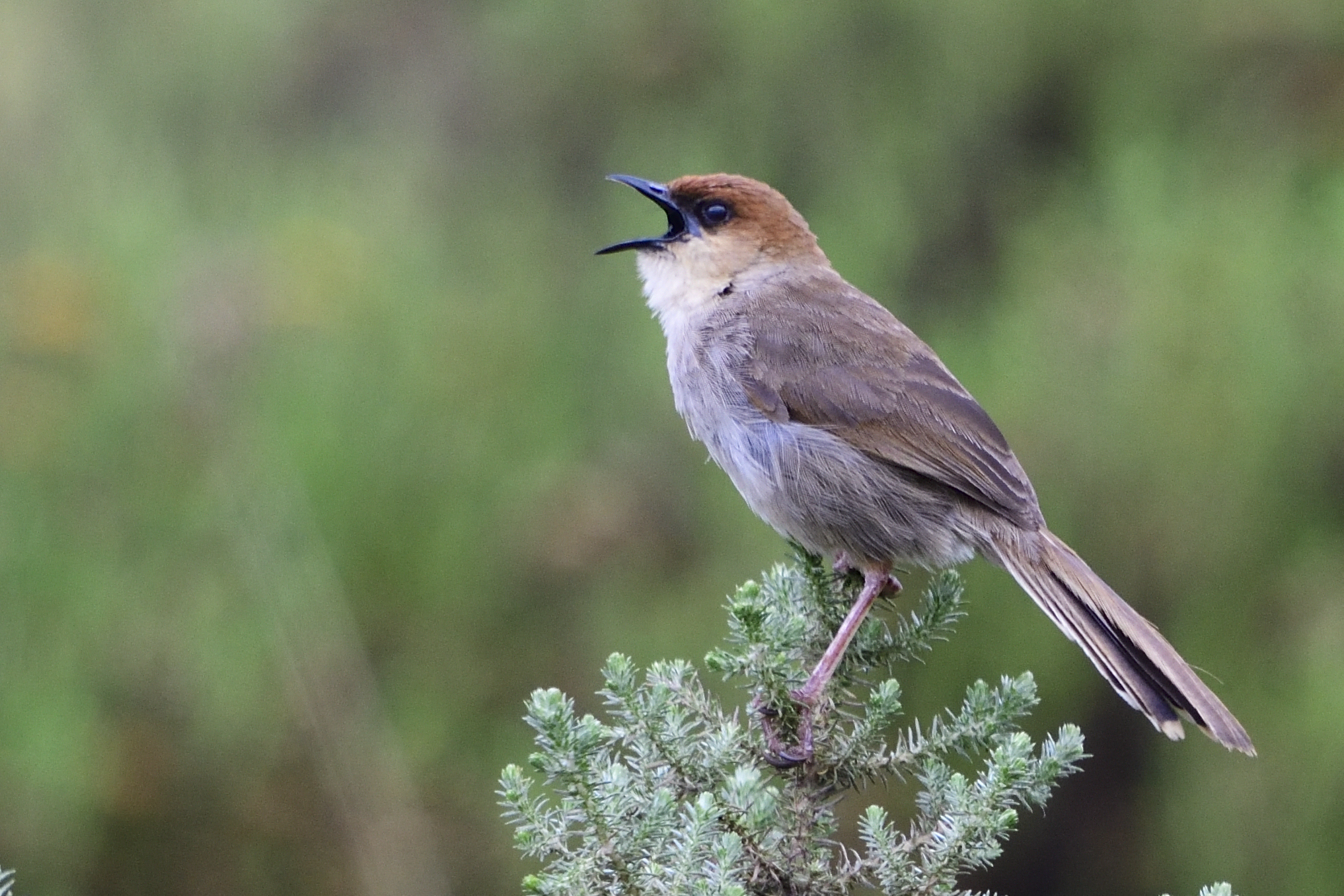
Black-lored Cisticola, Cisticola nigriloris – Endemic to S Tanzania and N Malawi
Day 15, Friday, December 10 – Laela – Saisi River – Laela
Saisi River is the border river between Tanzania and Zambia. I got a tip from Neil Baker that it was an easy place to find Tanzanian Masked Weaver. We found it there in December 2020 and this bird was high on Paul´s wishlist. Neil also mentioned that there was supposed to be Miombo Pied Barbet in the Miombo Woodlands on the way to Sassi River. When we came to the Miombo Woodland part, Paul and Abdul went out in the woods about a 100 metres parallel to the road. I followed on the road in Lizzy. Nothing in the first patch of Miombo. We drove on to the next patch. After just a few minutes, Abdul came to the car while Paul were keeping and eye on the bird, and there it was a lifer: Miombo Pied Barbet. They also recorded a Yellow fronted Tinkerbird. We continued to the Sassi River high in spirits. We came down to the river and the surrounding wetland was very dry. I got stock here the last time, but now I could drive up and down the river bank and drop them off at strategic places. First we went to the spot we saw the Weaver last time and lo and behold, the Tanzanian Masked Weaver was there. However, due to the dryness they were not in breeding plumage. Other birds we recorded included European Bee-eater, Black-winged Kite, African Wattled Lapwing, Abdim´s Stork, Yellow-billed Duck, Brown Firefinch, Coppery-tailed Coucal, Little Rush Warbler, Black-crowned Night Heron, Orange-breasted Bushshrike, Black Crake, Yellow-throated Leaflove, Diederik Cuckoo, Blue-cheeked Bee-eater, Tropical Boubou, Hartlaub´s Babbler, Hamerkop, Copper Sunbird, Orange-breasted Waxbill and Brimstone Canary. It was now already 4:30 PM. Our original plan was to camp by the river, but since we had pretty much tied up I suggested that we could make it all the way back to Laela before nightfall. We made it just in time and took in to the same guesthouse. a very successful day.
Some pictures from day 15
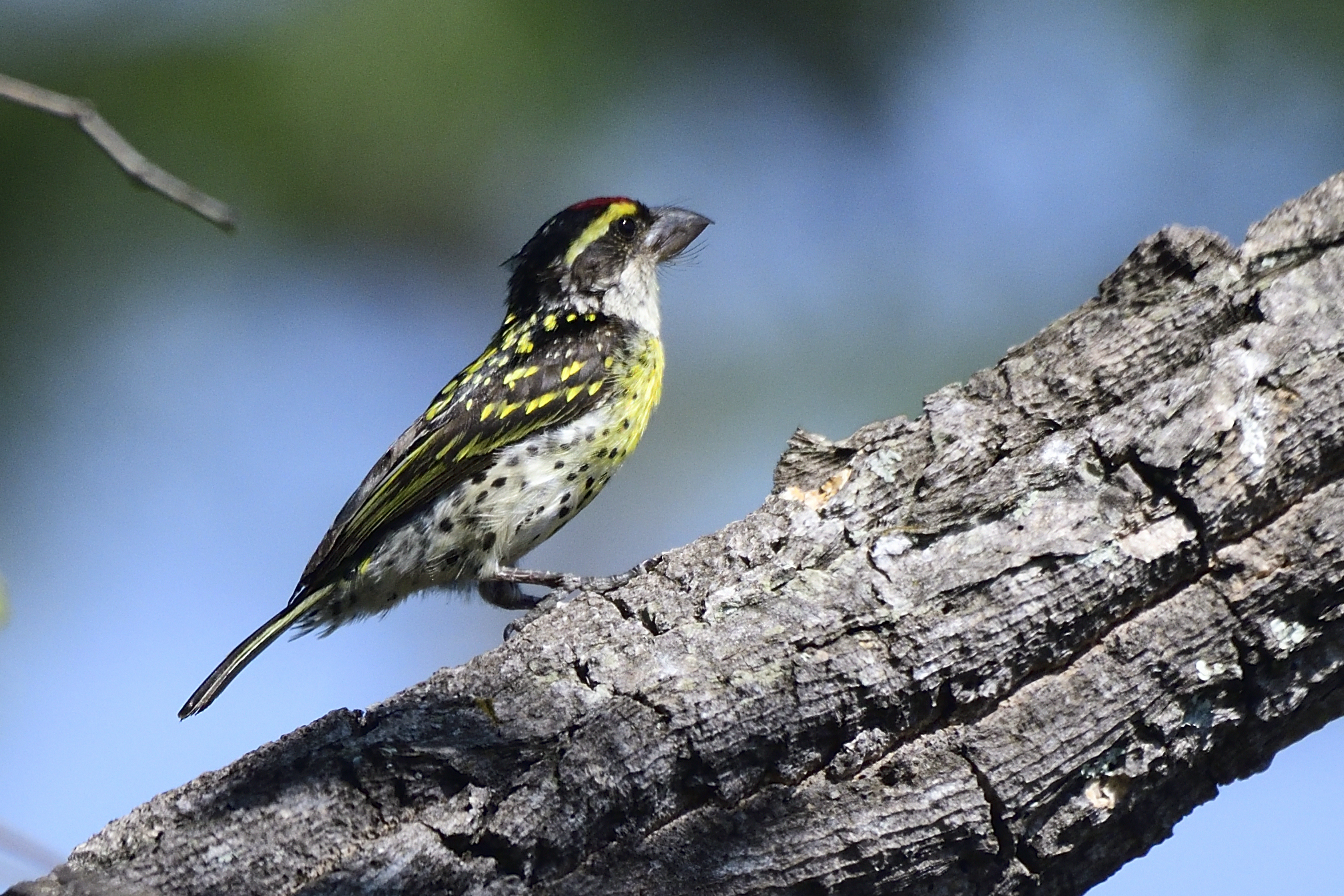
Miombo Pied Barbet, Tricholaema frontata – Endemic to SC Africa
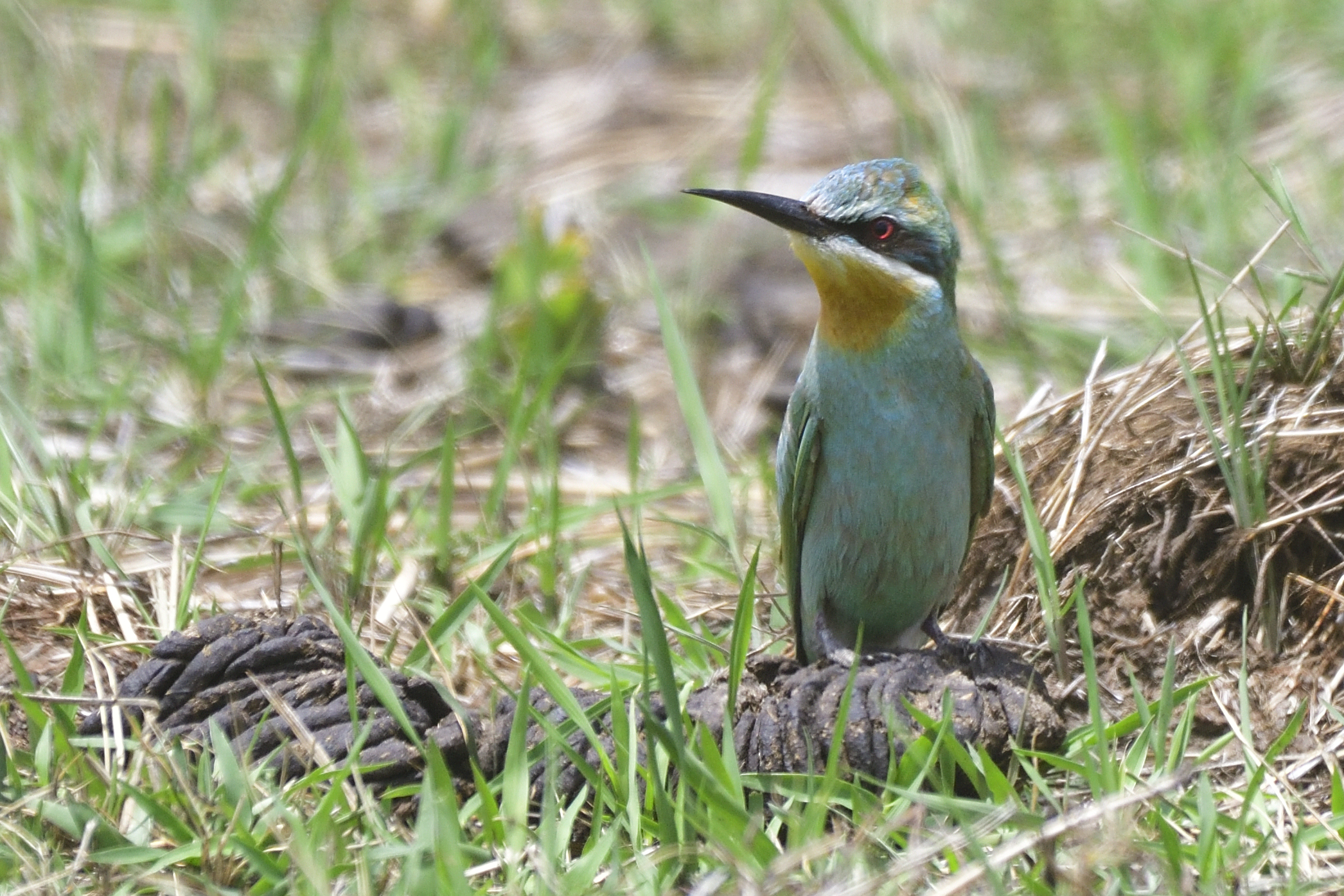
European Bee-eater, Merops apiaster
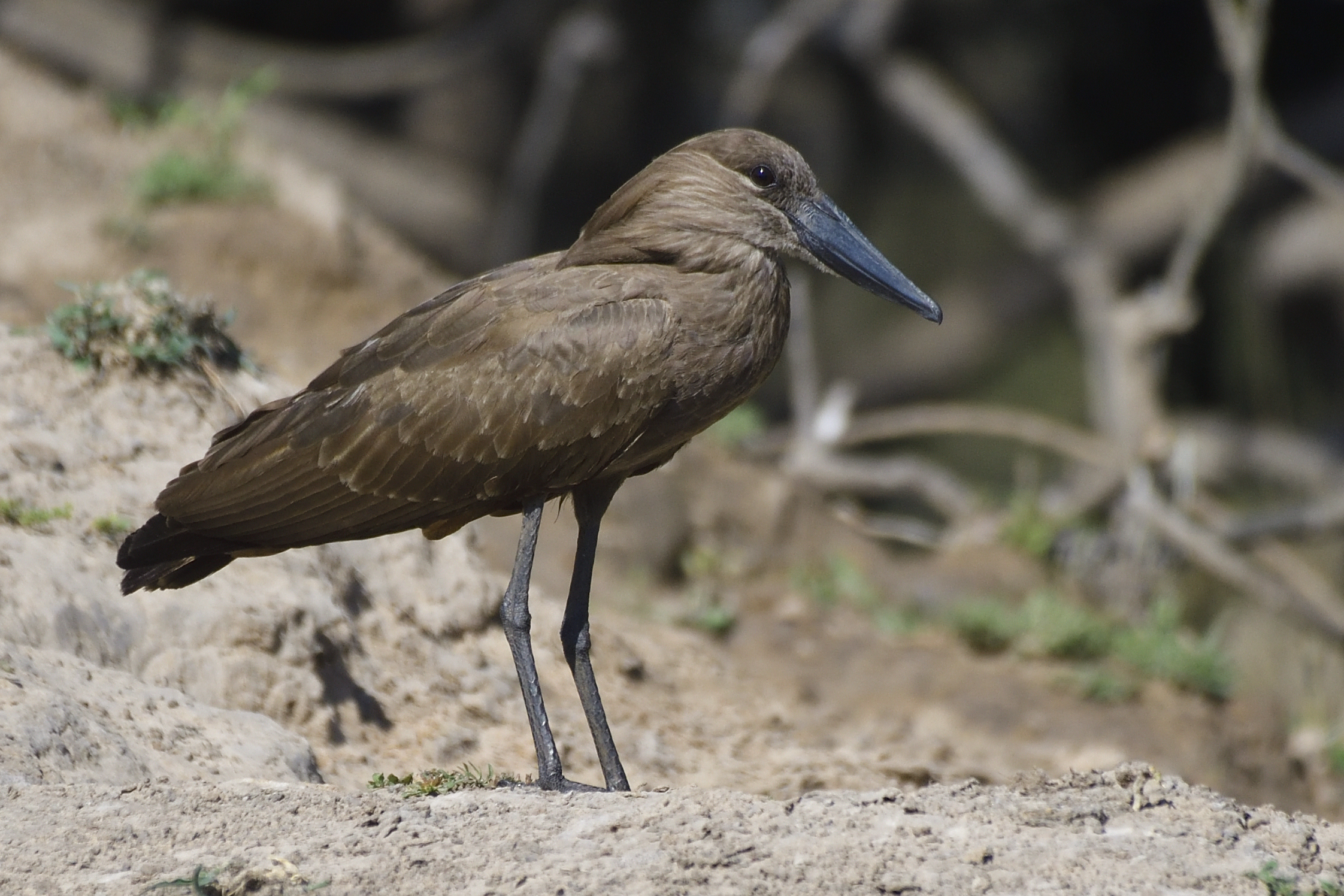
Hamerkop, Scopus umbretta
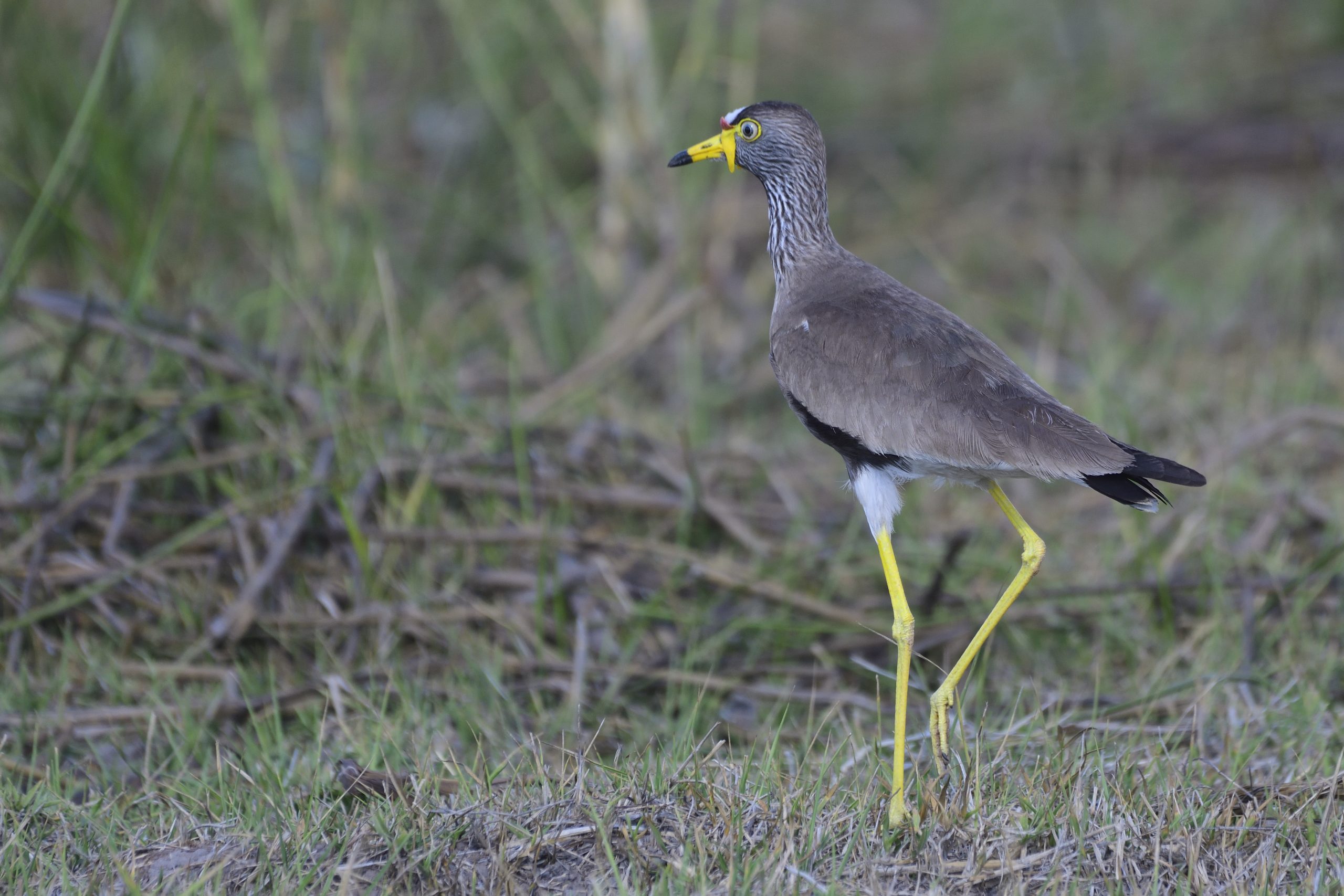
African Wattled Lapwing, Vanellus senegallus
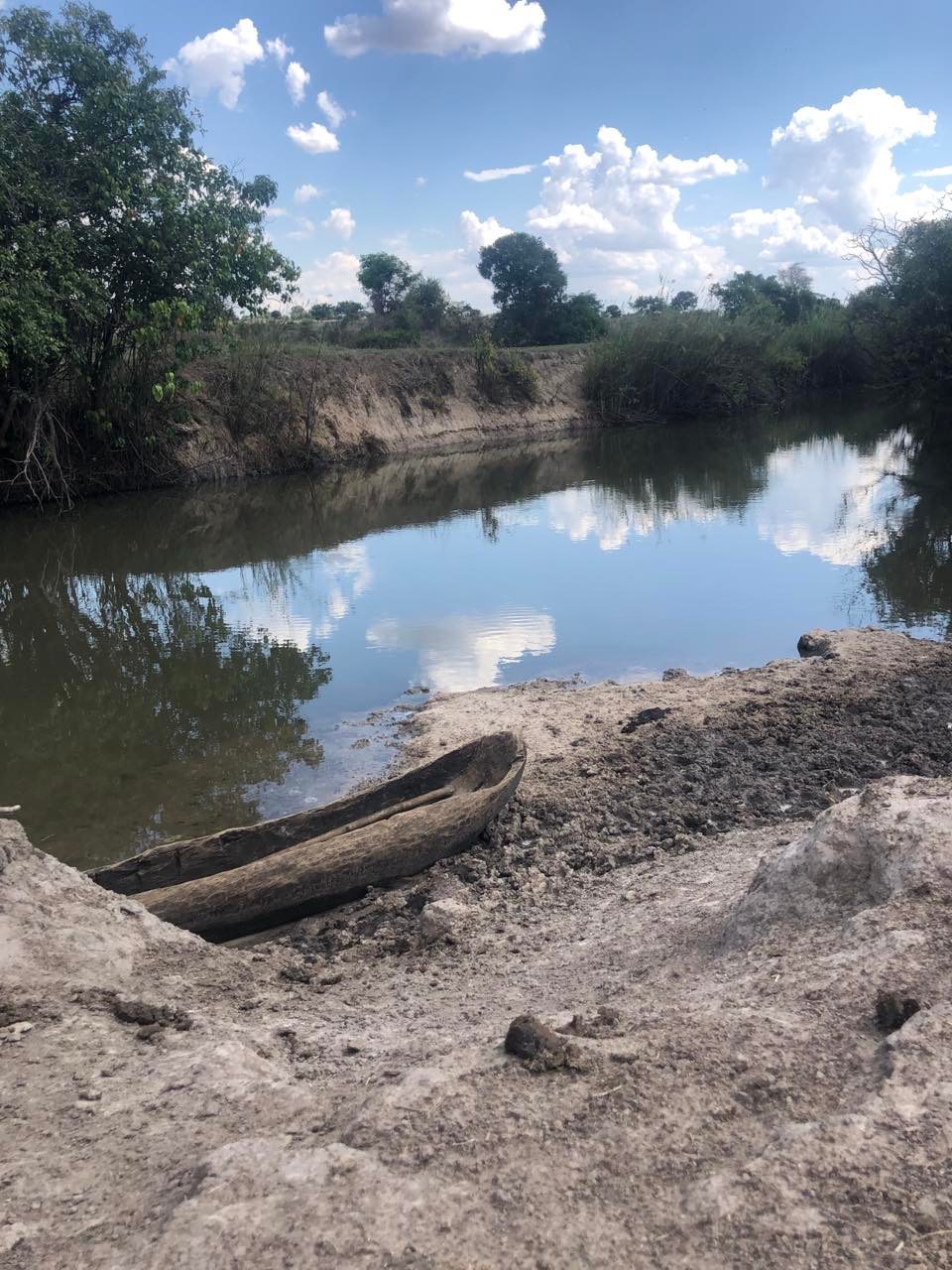
Saisi River with Zambia on the opposite bank
Day 16, Saturday, December 11 – Laela – Tan-Swiss, Mikumi
We had reached our furtest destination. a quick look on google maps told me that I had 744 km or 12 hours 30 minutes to drive that day. Paul did not believe an old man like me could do that in one day. we started at 05:30 in the morning and arrived at Tan-Swiss in Mikumi exactly 5:30PM in the afternoon. We only stopped for pee breaks and to buy Samosas to be eaten in the car. Abdul got me a chair and i sat down and sipped a few beers. I suddenly remembered that Paul needed a Collared Palm Thrush. I knew it was in the garden, so while I was drinking beer and Abdul was setting up camp I sent Paul out to hunt for the bird. 10 minutes later, He came back with a big smile on his face. We had dinner at the restaurant and I had some business to attend to when I finally had some internet. When I got back to my car I did a little inspection. I saw that both my rear shock absorbers were broken. Our plan was to go back to the Miombo Woodland the morning after. My plan was to drive them there get the car fixed and go and pick them up. I spoke with the reception and they got hold of a Fundi (mechanic) for me to come early the morning after despite being a Sunday
Day 17, Sunday, December 12 – Mikumi – Ifakara – Hondo Hondo Camp.
We woke up to rain, so Paul decided to stay in camp. The Fundi arrived and within 2 hours the car was fixed. Our next destination was Ifakara in the Kilombero Valley. We stopped for a Eastern Golden Weaver nesting colony. I also took pictures of a Tawny-flanked Prinia. The road to Ifakara was having a major upgrade so the journey took a lot longer than expected. Once there we did not have any problems finding the 3 major targets Kilombero and White-tailed Cisticola + the Kilombero Weaver. The Weaver was not in breeding plumage. Other good birds in Ifakara: Fan-tailed Widowbird and Coppery-tailed Coucal. It was now 3PM so we had to return. We arrived just in time at Hondo Hondo for a shower and then dinner
Some pictures from day 17
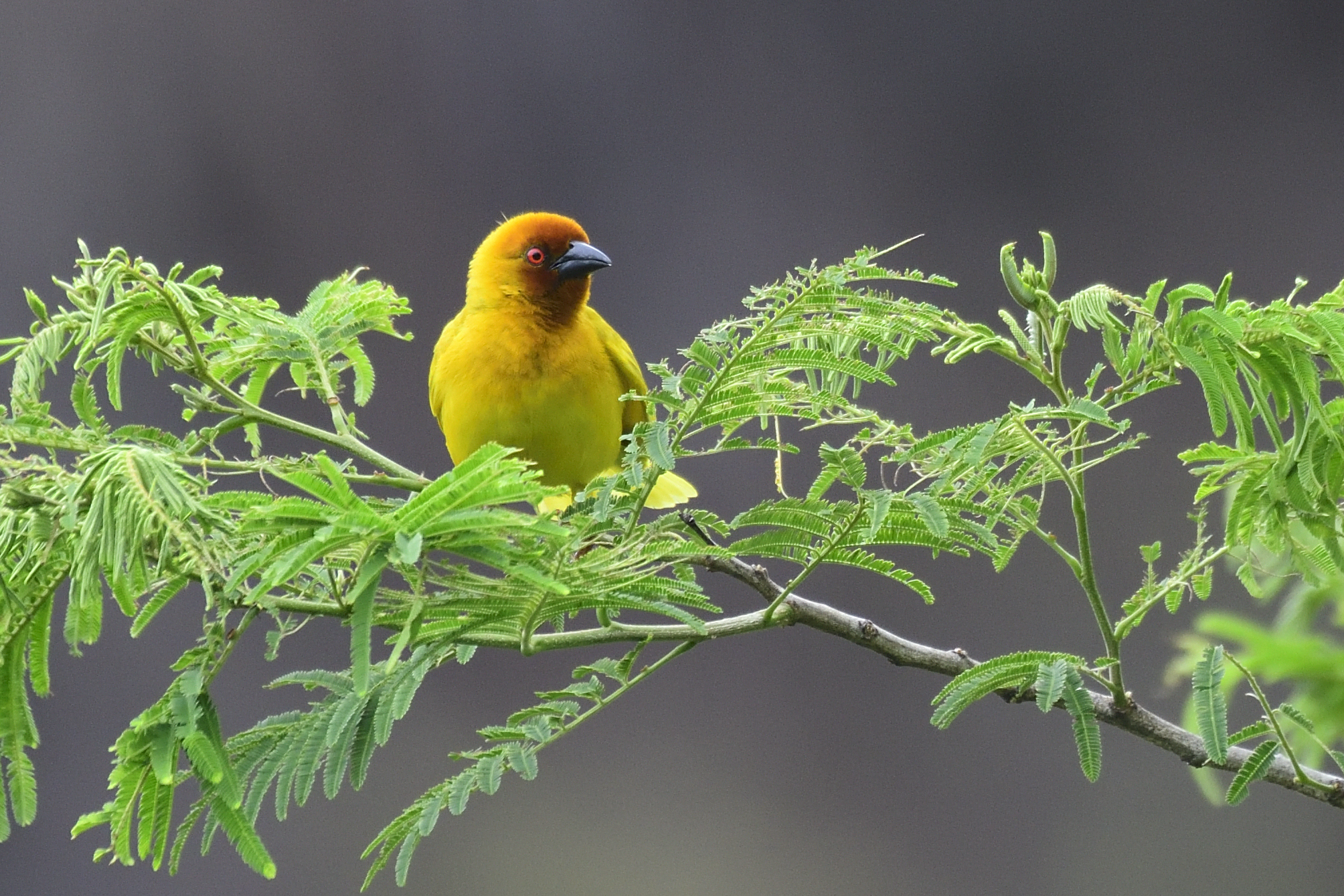
Eastern Golden Weaver, Ploceus subaureus
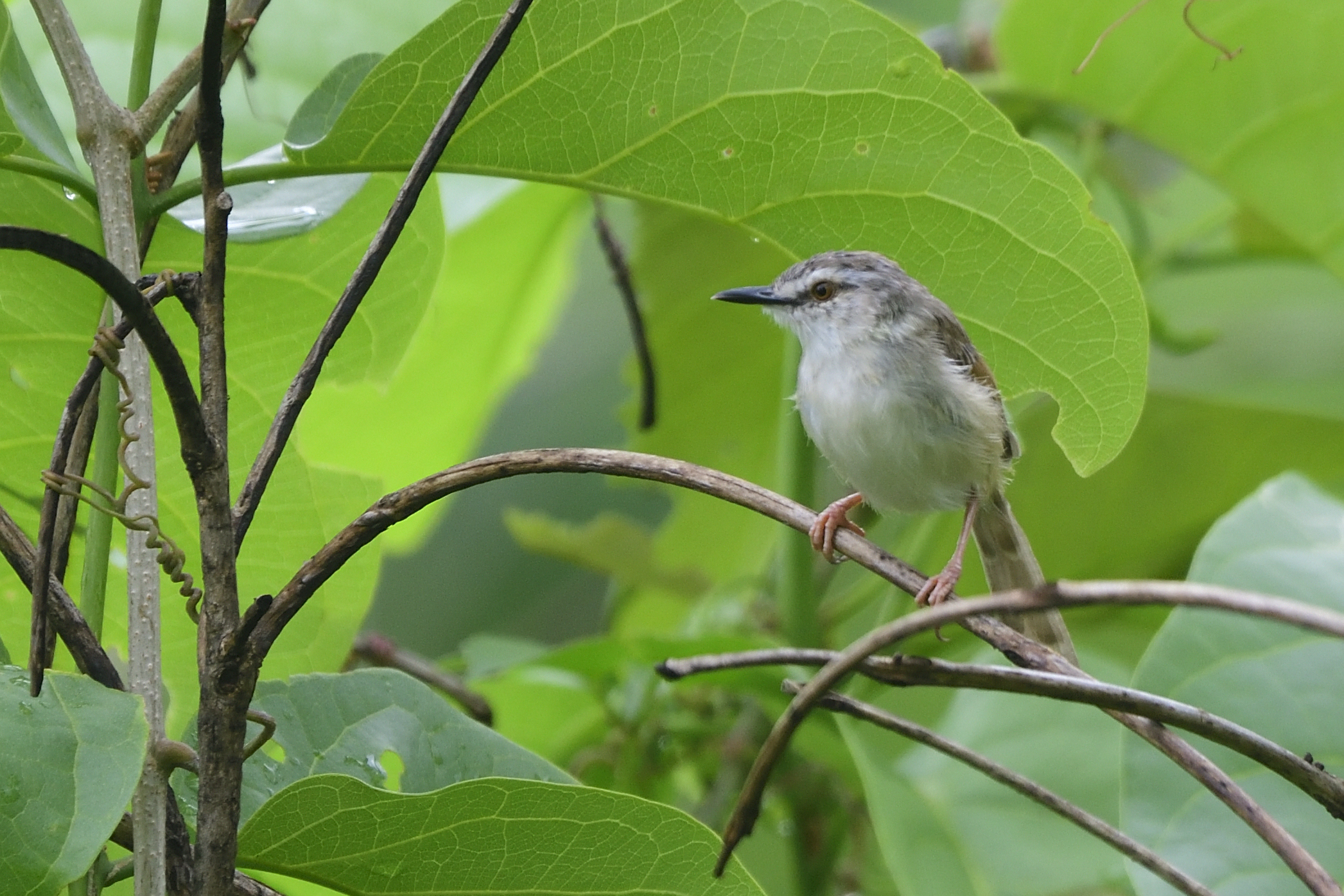
Tawny-flanked Prinia, Prinia subflava
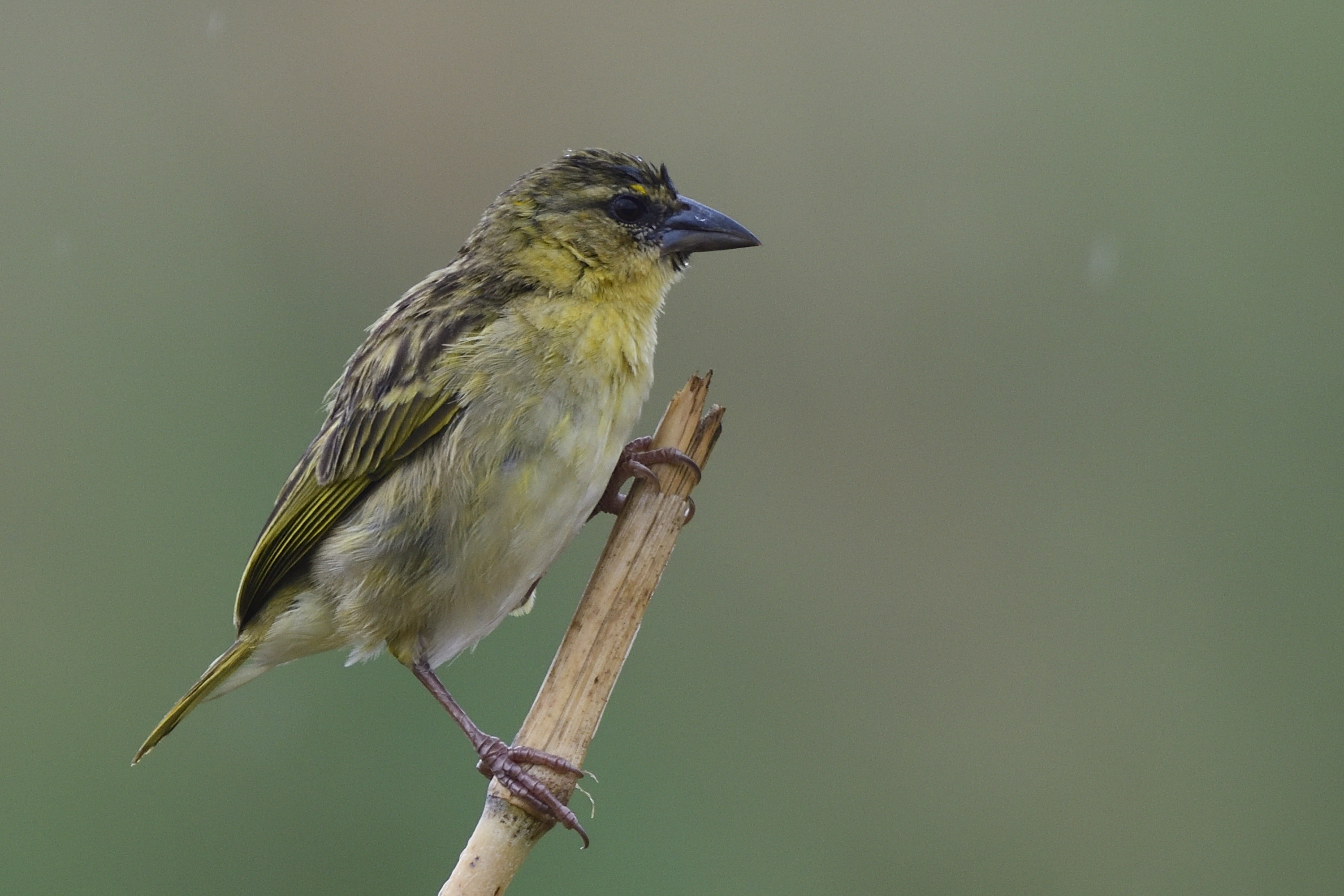
Kilombero Weaver, Ploceus burnieri – Endemic to the Kilombero Valley
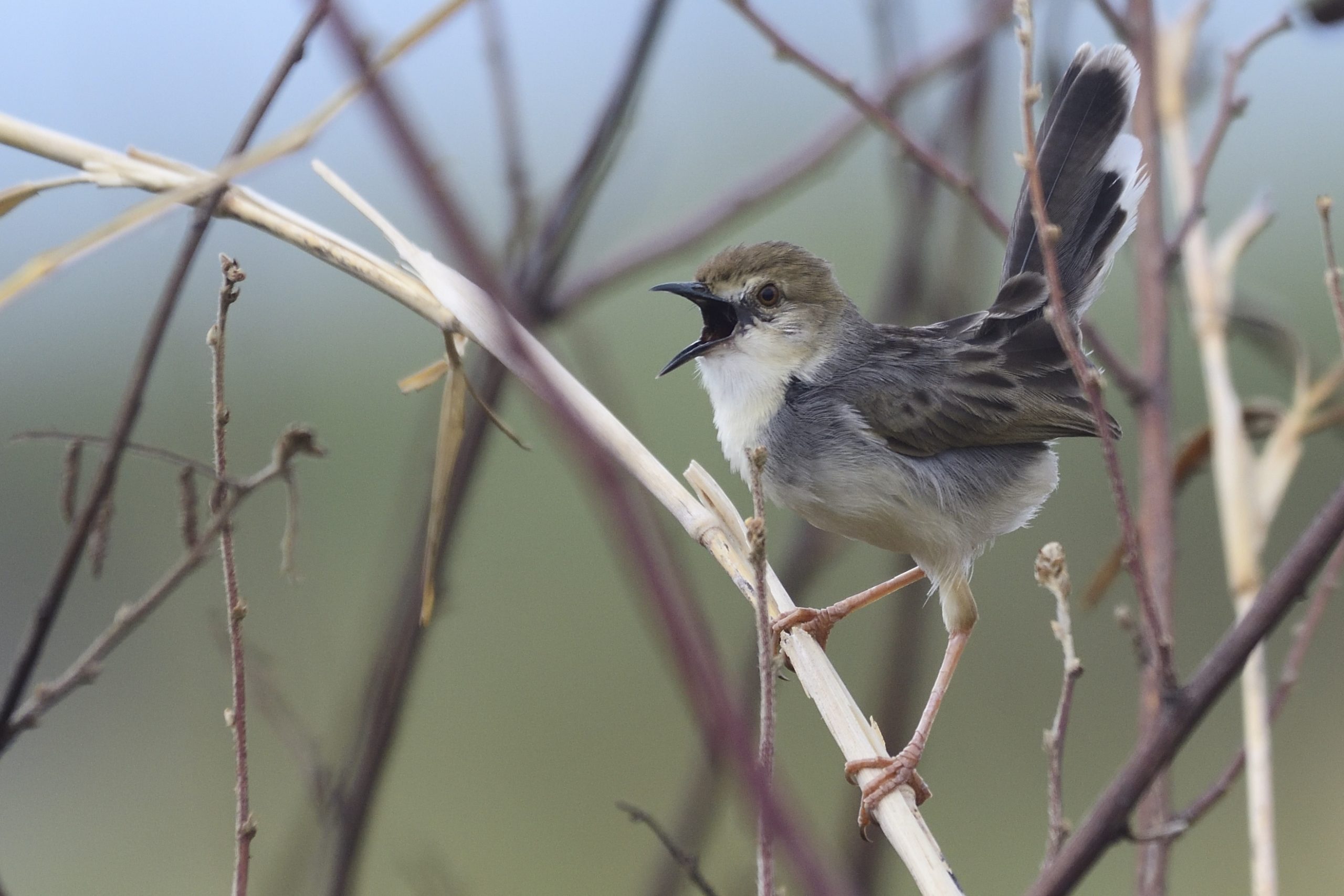
White-tailed Cisticola, Cisticola anderseni – Endemic to the Kilombero Valley
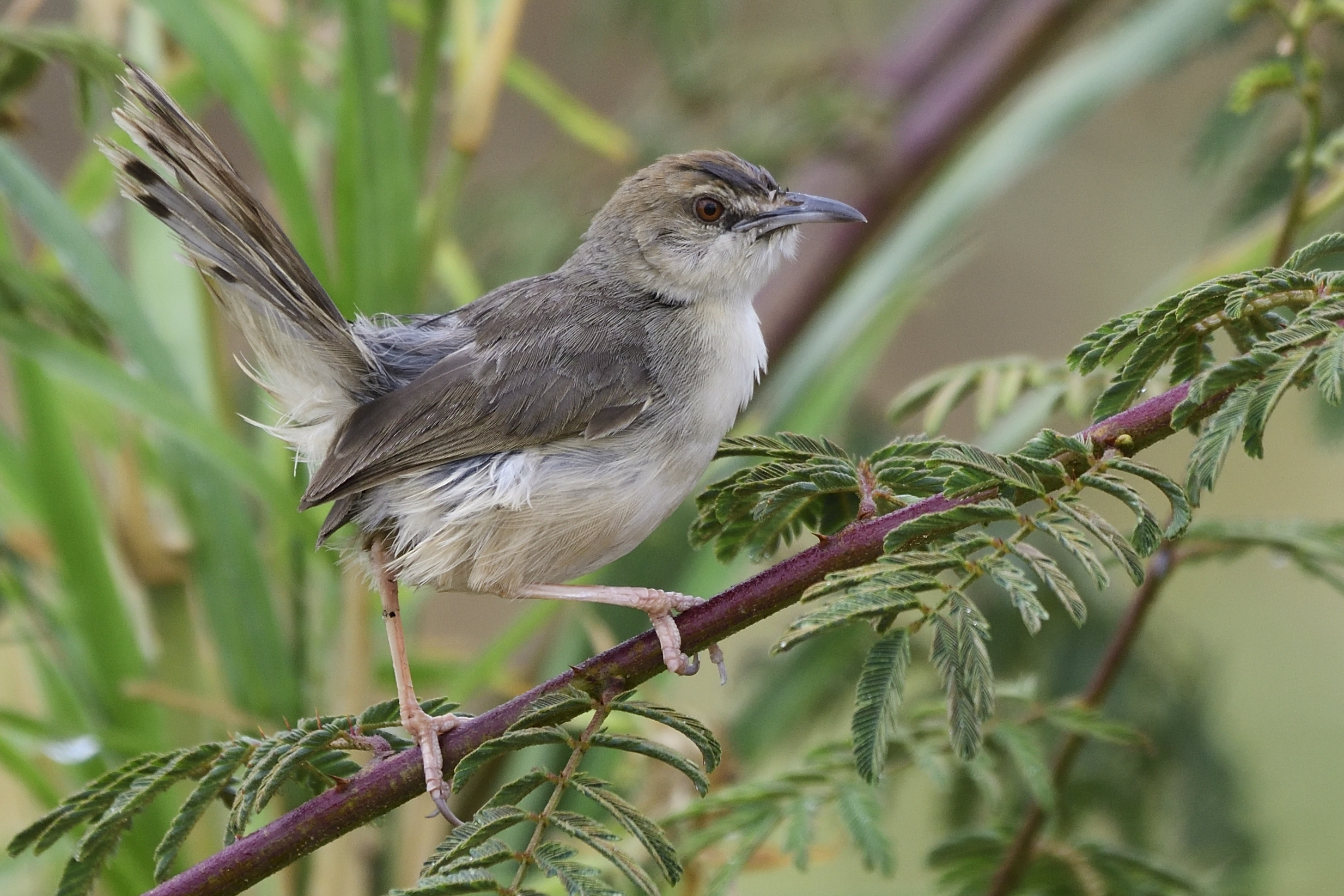
Kilombero Cisticola, Cisticola bakerorum (Named after Liz & Neil Baker) – Endemic to Kilombero Valley , Tanzania
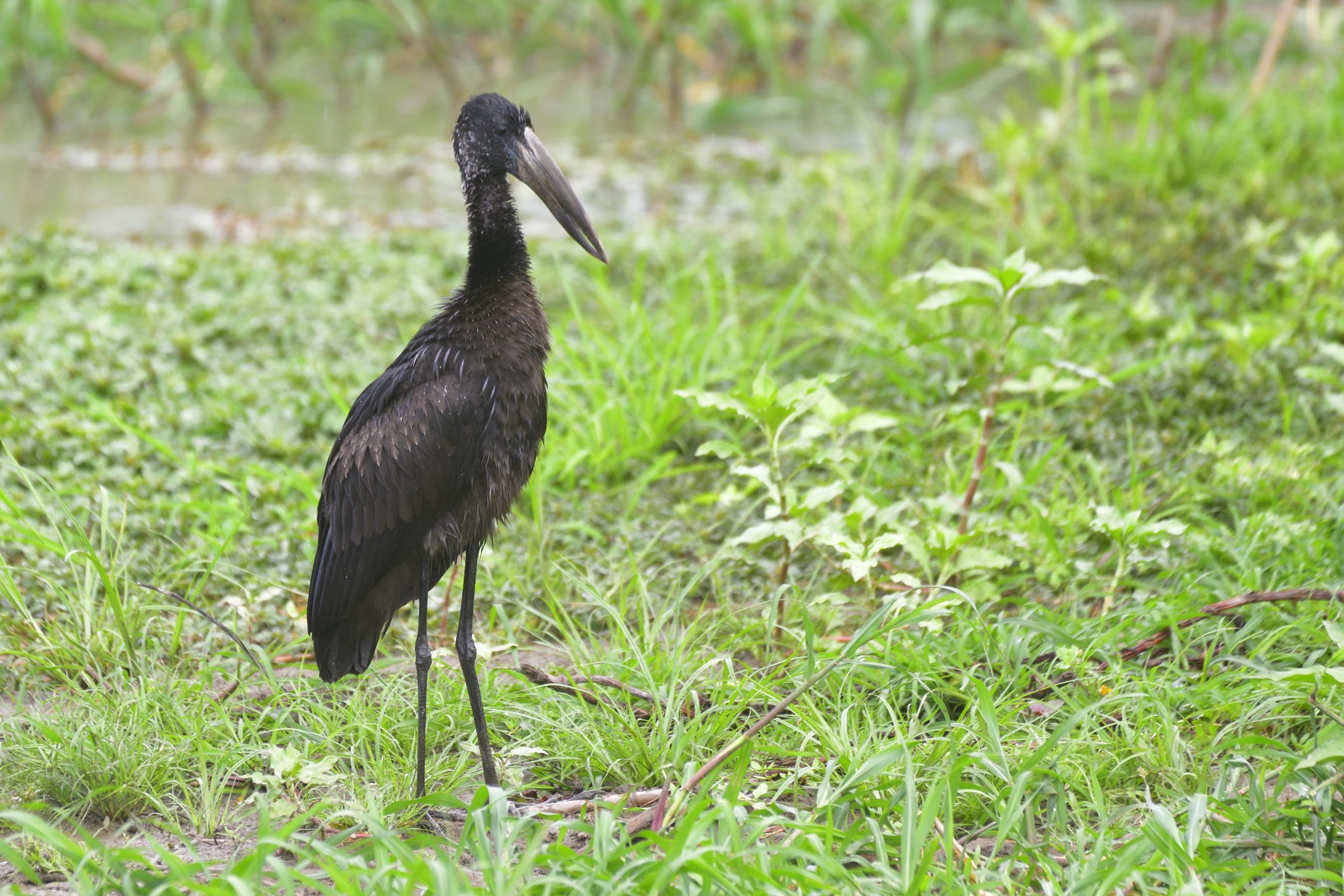
African Openbill, Anastomus lamelligerus
Day 18, Monday, December 13 – Honde Honde Camp via Magambera Forest, Chalinze to Korogwe.
Just outside the gate of Honde Honde Camp is a good place for Lesser Seedcracker. This is a bird I have seen many times, but never got a picture off. This was another opportunity to finally nail this bird. This time both Paul and I got it quite good. Other birds Orange-breasted Waxbill and Southern Red Bishop. With the Seedcracker under our belt, we went for breakfast. Another bird that was high on Paul´s list was the Pel´s Fishing Owl. It has been spotted many times in nearby Magambera Forest. We drove to the forest and parked right by the entrance. We started walking when Abdul heard (for him) a familiar sound: Kretchmer´s Longbill. Paul never managed to get pictures of that bird in Amani Forest East Usambara so this was quite a surprise. Then we entered into the forest and we searched and searched, but no Pel´s Fishing Owl. Other birds we recorded included Thrush Nightingale, Blue-spotted Wood Dove, Green-backed Camaroptera, Palm-nut Vulture, East Coast Boubou, Forest Batis, Fischer´s Greenbul, Red-capped Robin-Chat, Golden-tailed Woodpecker, Magpie Mannikin and Green Malkoha. After a rather long search I decided to return to the car. It started raining, but I rolled down the window and got nice shots of both Red-throated Twinspot and Blue Waxbill. The other soon came out of the forest and still did not have any luck with the Pel´s. Paul was supposed to stay with me a few more days, but we had already finished our trip. I arranged for him to visit Pemba Island the last few days before his departure. We drove back towards Mikumi and spent a little bit of time in the Miombo Woodland there without finding any new birds, so we started the long drive back to Dar es Salaam. Abdul had a back to back trip, so we dropped him in Morogoro. Paul and I continued to Chalinze where I had arranged for a friend to pick him up and take him to the airport in order for me not to go all the way there. I made it to Korogwe that night and was home safe the day after.
Some pictures from Day 18
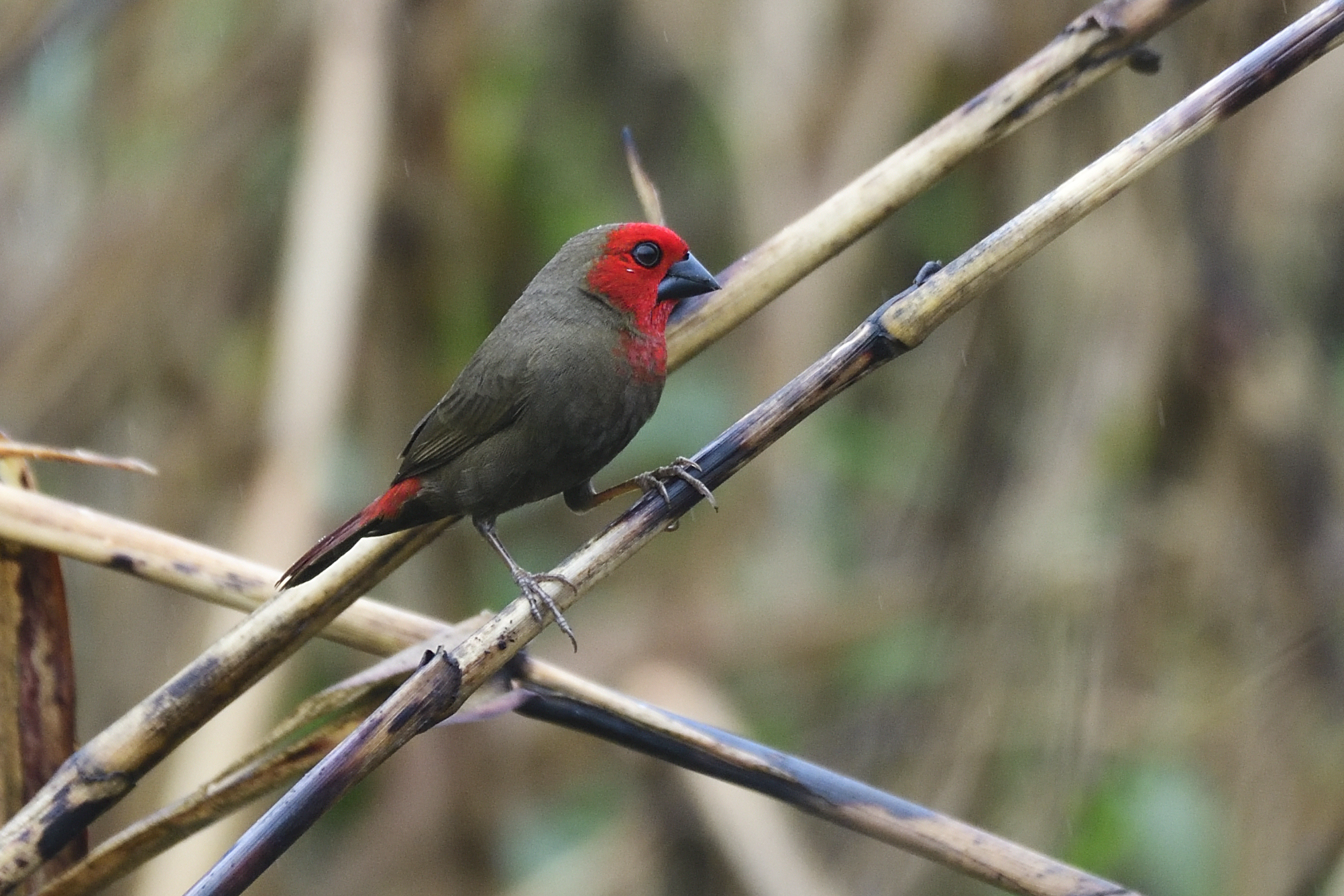
Lesser Seedcracker, Pyrenestes minor
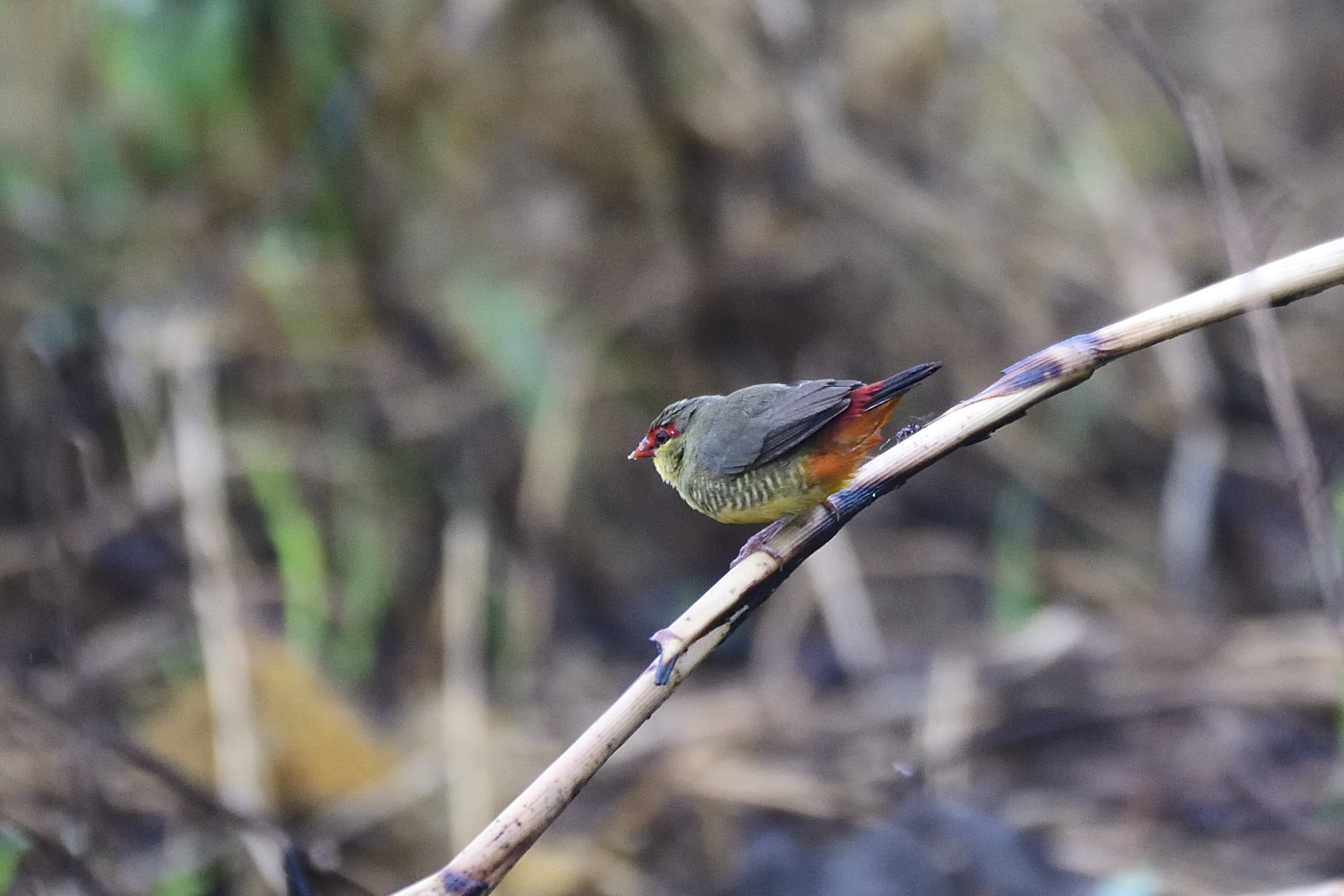
Orange-breasted Waxbill, Amandava subflava
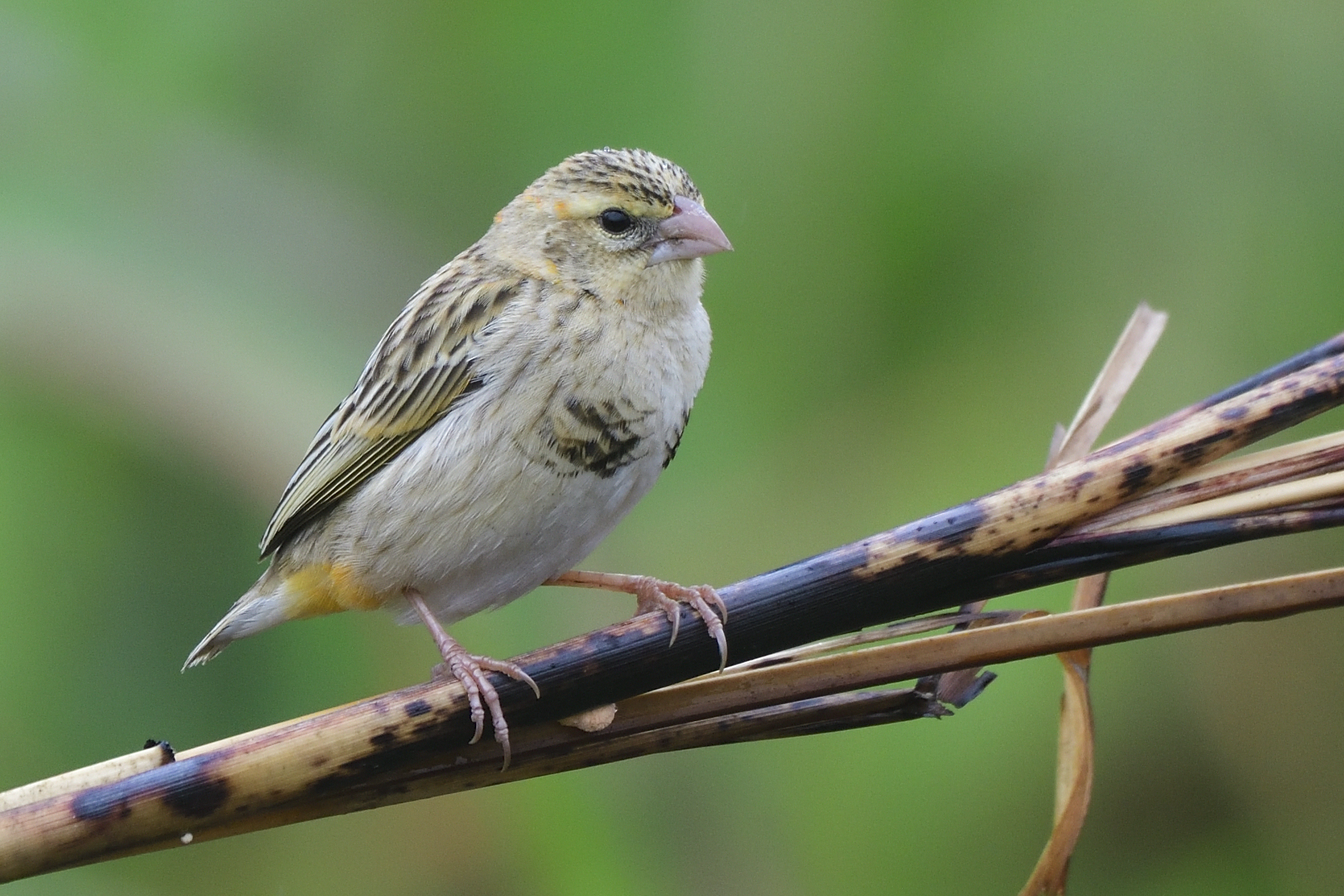
Southern Red Bishop, Euplectes orix – Male in non bredding plumage
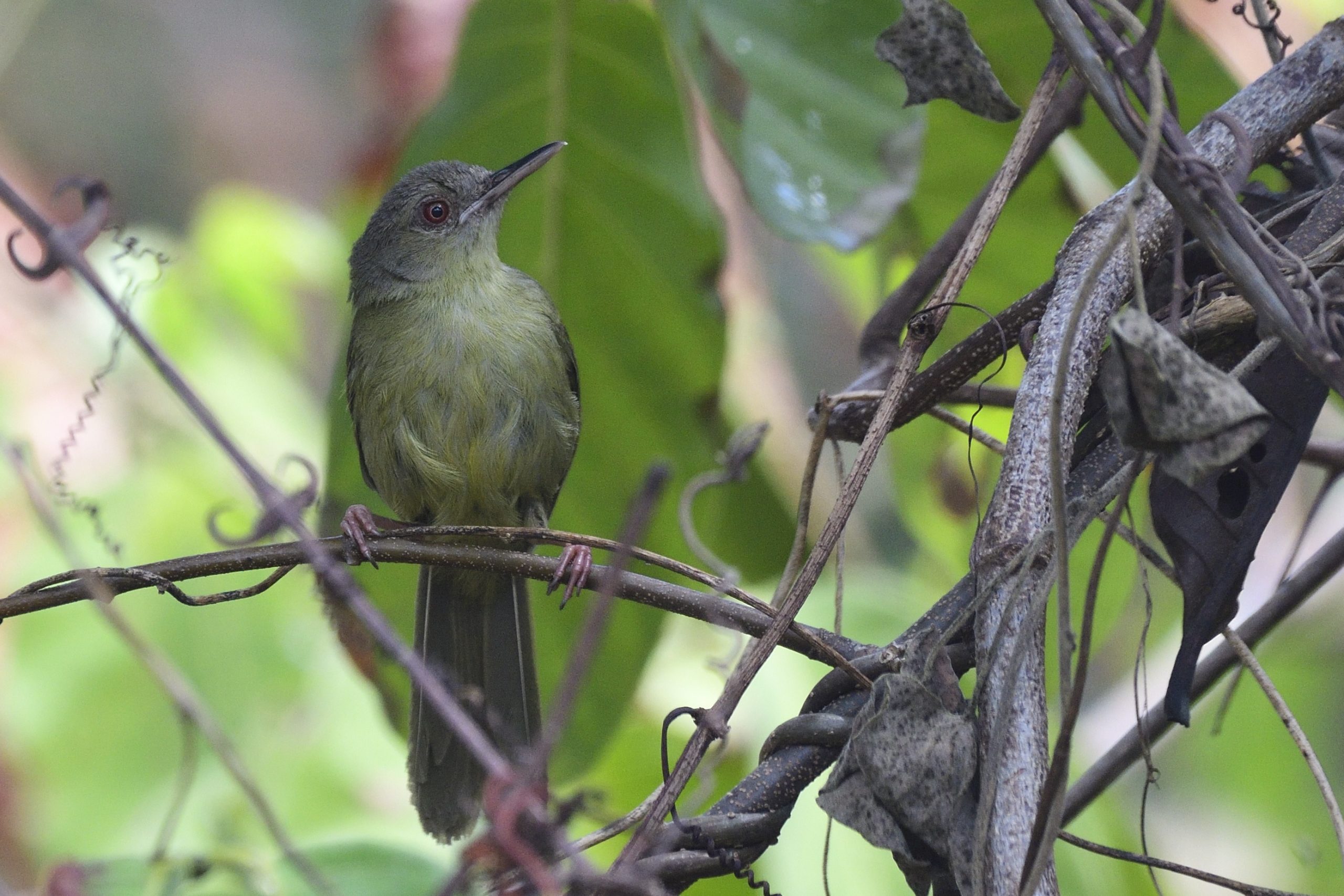
Kretchmer´s Longbill, Macrosphenus kretschmeri – Endemic to coastal SE Africa
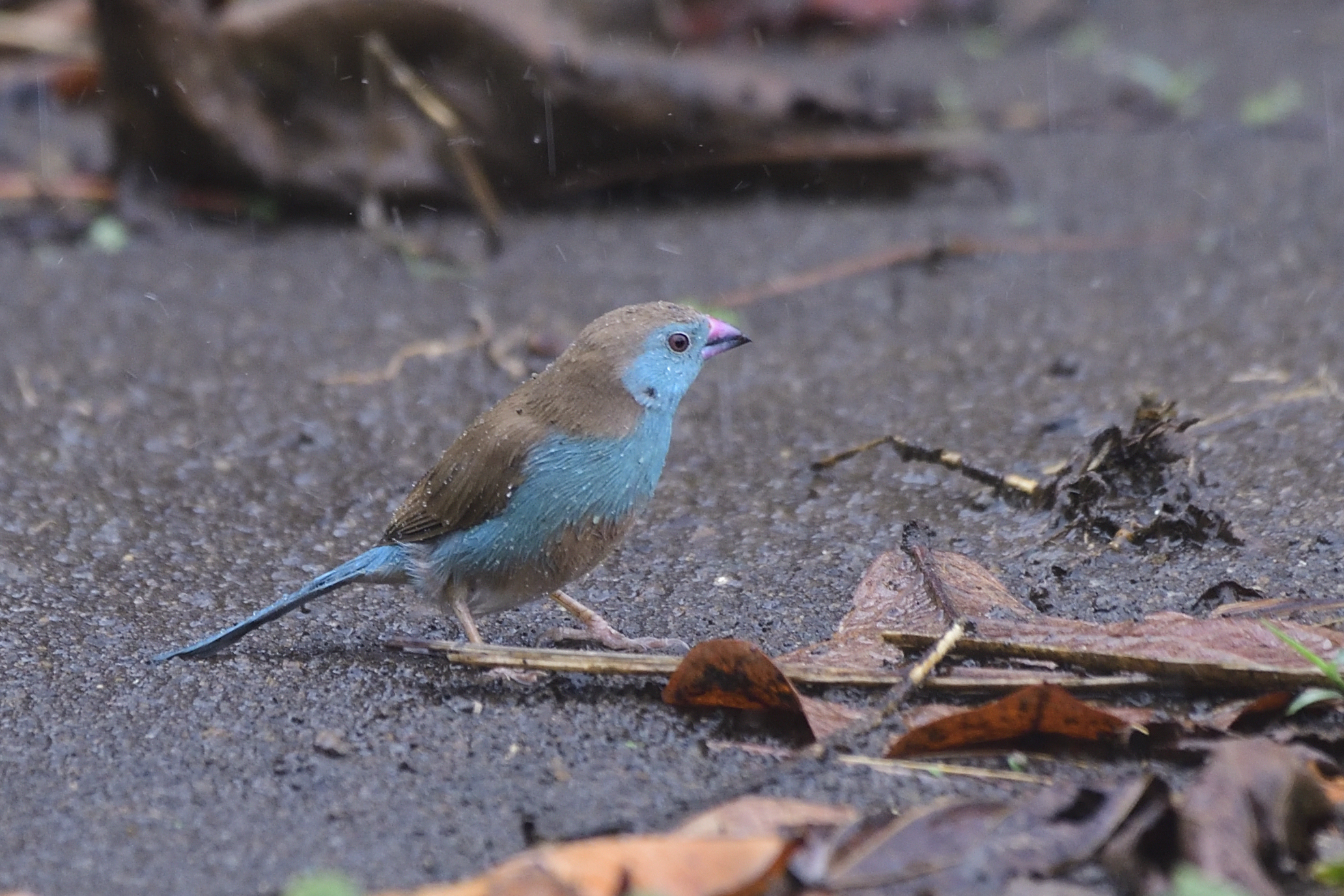
Blue Waxbill, Uraeginthus angolensis
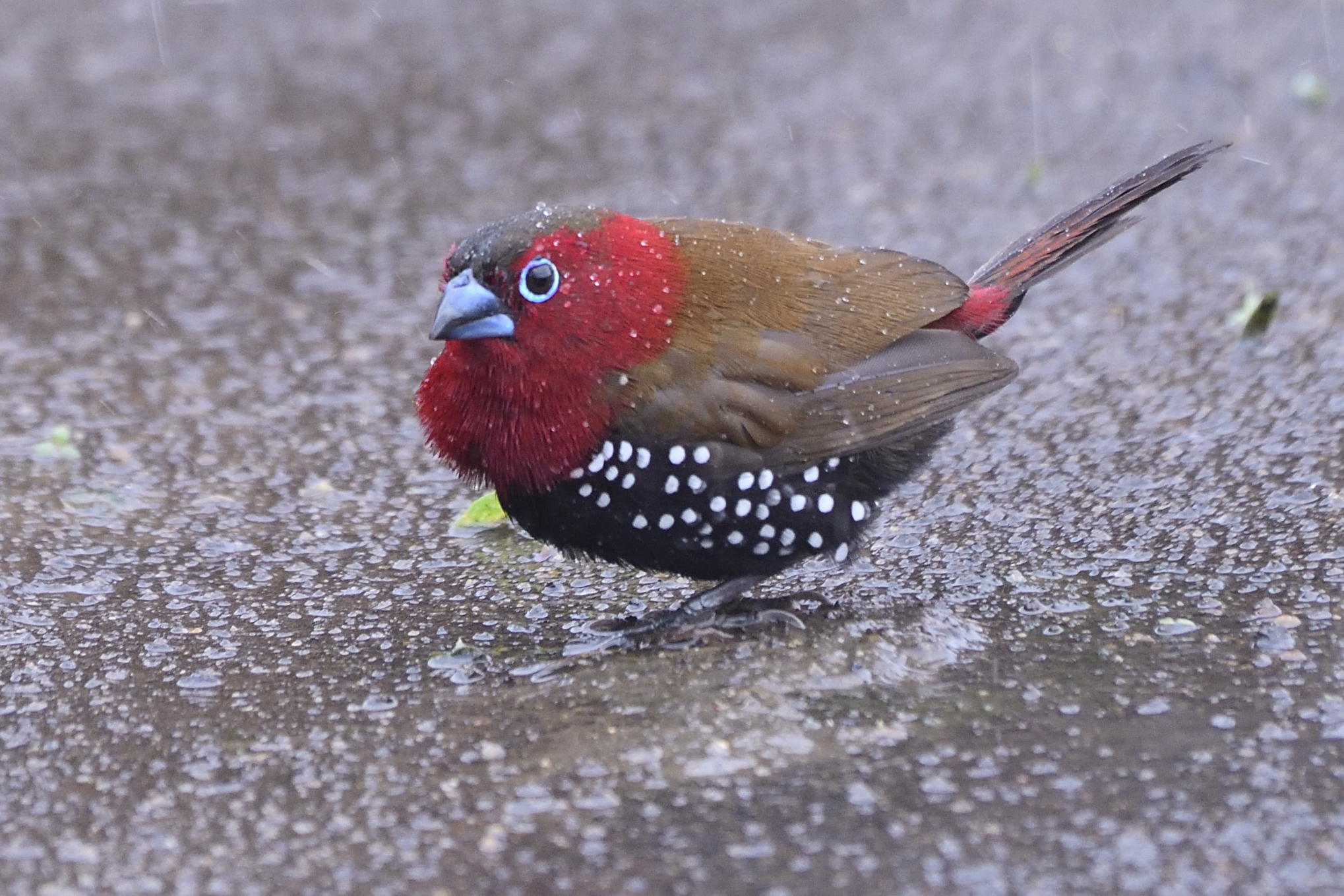
Red-throated Twinspot, Hypargos niveoguttatus
I believe it was quite a successful trip. The number of birds are not that high, but the number of endemic birds are very good. From I left home until I got home, I drove a total of approximately 6.000 km. I did a standard Usambara trip in January and a Kenya trip in February, stay tuned for more trip reports.